
Home » Travel Guides » Romania » 15 Best Things to Do in Cluj-Napoca (Romania)

15 Best Things to Do in Cluj-Napoca (Romania)
A dynamic and youthful university city, the capital of Transylvania is Romania’s second most populous urban centre. True to Transylvania’s Saxon background, Cluj-Napoca is endowed with Gothic wonders like the Stunning St Michael’s Church and the Reformed Church.
Cluj-Napoca also has an exciting historical legacy as the home of Hungarian dukes and the birthplace of the 15th-century Hungarian King Matthias Corvinus, who is remembered with an imposing statue in front of St Michael’s.
For culture you can get acquainted with rural customs and history at the Ethnographic museum, which has a terrific outdoor exhibition with hundreds of reconstructed houses. There’s also a nationally-renowned Botanical garden, elegant parks and an epic gorge waiting for you just outside the city.
Let’s explore the best things to do in Cluj-Napoca :
1. St Michael’s Church

Cluj-Napoca’s heavyweight sight is this stunning 15th-century Gothic church on Unirii Square.
With three equal naves, and measuring 70 metres long and 80 metres high, few churches in Romania can match St Michael’s for power as well as sheer depth of history.
The 15th-century King of Hungary and Croatia Mathias Corvius, was crowned in this building not long after its completion in 1464. Almost 500 years later there was another important moment when the Bishop Áron Márton spoke out openly against the Holocaust at this church, even while Jews were still being kept in the Kolozsvár Ghetto.
After renovations in the 20th century, frescoes going back to the 1400s were revealed in different parts of the church.
The most complete of these can be seen in the southwestern Schleunig Chapel.
In the 18th century the Cluj-born sculptor Johannes Nachtigall carved the highly elaborate pulpit and altar to the Three Kings.
2. Cluj-Napoca Art Museum

On the other side of Strada Iuliu Maniu, the Bánffy Palace is a stately partner to St Michael’s Church.
This 18th-century Baroque residence was designed by the German architect Eberhard Blaumann and was built in the mid-1770s for the Hungarian Duke György Bánffy.
Among a lofty roll-call of guests is the Holy Roman Emperor Francis II who visited with his wife Caroline Augusta in 1817. The museum inside has works by some of Romania’s most celebrated painters like the Impressionist Ion Andreescu and the Post-Impressionist Nicolae Tonitza.
But even more exciting is the Late Gothic Altar of Jimbor, a 16th-century polyptych with sculpted figures of the Madonna and Child at the centre.
3. Botanical Garden

A few minutes on foot from the Old Town is a 14-hectare botanical garden plotted in the 1920s.
There are 11,000 different species here, planted in greenhouses and a host of individual gardens arranged according to geography or applications like medicine and historic trades.
There’s also an area dedicated to ornamentation and design, where you’ll come across the rosarium, Mediterranean garden and an authentic Japanese garden.
As with all botanical attractions the garden is best visited in spring and summer, but at any time of year you can call in at the Botanical Museum and Herbarium, which has 660,000 sheets of dried plants in cabinets.
4. National Museum of Transylvanian History

To wrap your head around the complex and tumultuous history of Transylvania come to this red pastel-painted building on Piaţa Muzeului.
The exhibits start with Prehistory, taking you through the Palaeolithic and Neolithic periods, into the Bronze and Iron Age, displaying tools, bones, jewellery and ceramics.
There are also Roman Dacian coins and glassware, Medieval documents, weapons and Western European furniture from an array of periods.
A standout exhibit is an Egyptian sarcophagus from the 3rd century BC, as well as some 700 stove tiles dating from the 1300s to the 1800s.
At the time of writing the museum was temporarily closed for renovations.
5. Pharmacy History Collection

Casa Hintz hosts the oldest pharmacy in Cluj-Napoca, dating to 1573. In 1954 a museum opened inside, and over time the collection has grown to 1,800 pieces, giving a comprehensive account of pharmacies and medicine in Transylvania from the 1500s to the 1900s.
These historic pots, bottles, copper stills, glass retorts, scales and books go hand-in-hand with the pharmacy’s original fittings, like a beautiful Baroque mural in the main shop from 1766 and a cabinet with a painting depicting the human lifecycle.
You can also browse some of the bizarre substances that passed for medicine centuries ago, like lobster eyes, Venetian theriac (poison antidote), or mummia (powdered human mummies).
6. Parcul Central

Now more than 190 years old, Cluj’s main park was one of the first public spaces for recreation in Eastern Europe.
Parcul Central is an official historic monument and is bounded by the sleek Cluj Arena to the east and the Someșul Mic river to the north.
Even on freezing days in winter you could head here to walk the graceful alleys, embellished with a magnificent marble fountain, pond, bandstand and the striking old casino building, which is traced by a colonnade.
But of course, summer is when the park comes into its own, when you can dine on the terrace at the island pavilion and rent a pedal boat or rowboat from the jetty.
7. Orthodox Metropolitan Cathedral

Built in ten years up to 1933, Cluj-Napoca’s Orthodox Cathedral is a revival of the Brâncovenesc style, which first appeared at the end of the 17th century and mixed Byzantine and Renaissance architecture.
The main dome has shades of the Hagia Sophia in Istanbul, and is watched by four towers, each with semicircular arches.
Inside, that central dome is held up by 18 hefty columns.
The spectacular interior mosaics date to 2001 and were produced with Murano glass by the artist Virgil Morariu.
These complement the original murals painted at the turn of the 1930s by two professors at Cluj-Napoca’s art academy.
8. Piarists’ Church

Dating from the beginning of the 1720s, this monument is a spot with real historical significance.
It was the first Baroque church in Transylvania, as well as the first Roman Catholic place of worship after the Reformation in the 16th century.
The church was founded by the Jesuits, and then handed to the Piarists when the Jesuit order was suppressed in 1773. The facade is brightly painted in orange and yellow, and has pilasters, scrolls, a bas-relief of the Holy Trinity above the portal and niches with sculptures.
The interior is even richer, with an altar that rises from the floor to the ceiling and has silver statues of the Jesuit saints Francis Xavier and Ignatius of Loyola.
These are Austrian in origin, while another Austrian, Anton Schuchbauer, carved the exuberant 18th-century pulpit and canopy.
9. Romulus Vuia Ethnographic Park

On the western outskirts is an outdoor museum for a deep insight into Transylvanian rural life.
Established on a hillside in 1929, the park has 200 historic buildings that have been brought here in pieces and rebuilt.
The most beautiful of these are two 18th-century Saxon churches with murals inside, while more than 30 are open and shed light on traditional livelihoods like metalworking, pottery, animal husbandry, stonemasonry, peasant mining and many more.
The houses and workshops have been sourced from across Transylvania and Central Romania, from the Apuseni Mountains in the Western Carpathians to the Székely Land in the Eastern Carpathians.
Follow up with a visit to the Transylvanian Ethnographic Museum in the centre of the Old Town.
10. Reformed Church

On Strada Lupului, this Gothic church has been the main place of worship for Cluj-Napoca’s Calvinist community for almost half a millennium.
It is also the seat of the Transylvanian Reformed Church District, which had 500,000 members at the last count.
The building started out as a Minorite monastery church in the 15th century, and has the style of a German hall church, with a single nave and no transept.
Take a peek inside at the rib vaults, the richly ornamented Transylvanian Renaissance pulpit from 1646 and the organ in the gallery on the west side.
Try to find out when the next concert is scheduled, as the church’s acoustics are first-rate.
11. Casa Matia (Matthias Corvinus House)

At no. 6 on Strada Matei Corvin you’ll be at the birthplace of Matthias Corvinus, King of Hungary and Croatia from 1458 to 1490. Among the most celebrated monarchs of the period, he was born here in 1443 and was the son of the Voivode (like a general or prince) of Transylvania, John Hunyadi.
The house isn’t open to the public as it is used by the Design and Fine Arts University of Cluj-Napoca.
But there are two plaques to mark the importance of the building, which has contained a jail, hospital and museum in its time.
The Gothic ogival portal and mullioned windows give a hint of the age of the house.
12. Matthias Corvinus Monument

Fronting St Michael’s Church on Union Square(Piața Unirii) is a solemn, larger than life-sized statue of the 15th-century king.
The work of the leading Hungarian sculptor, János Fadrusz, the monument was unveiled in 1902 and shows Matthias Corvinus on horseback.
Standing 12 metres tall, it depicts Corvinus’ horse with all four hooves on the ground, and this is believed to show that the king died of natural causes and not in combat.
At the base of the pedestal are four more statues depicting eminent figures from his reign like the Viceroy of Hungary and the Prince of Transylvania, who are both positioned to his right.
13. Lake Tarnița

An outdoor excursion of choice in summer for Cluj-Napoca residents, Lake Tarnița is a water reservoir created by the Tarnița Dam in 1974. An easy 20 minutes west of the city, the reservoir is 215 hectares in size and twists between tall hills that have a mantle of forest.
You can enquire locally about activities on the lake, which include boating, jet-skiing and fishing, or you could just pack a picnic and spend a carefree few hours on the shore on a warm day, taking a occasional dip in the cool water.
The shoreline is also a treat for walkers who don’t mind going off track for the best vantage points of the lake.
14. Turda Gorge

If you have a few hours to spare, drive down to this limestone canyon about 30 kilometres south of Cluj-Napoca.
One of Romania’s favourite climbing destinations, the Turda Gorge is almost three kilometres long, with walls that reach 300 metres.
The surfaces are riddled with around 60 caves, most of which are no more than a few metres deep, while the largest burrows into the rock for 120 metres.
These cavities were inhabited during the Neolithic period.
Walkers can choose to stay low by the river or battle up the gradient to view the gorge from above, which is difficult but merits the effort.
15. Kürtőskalács

Whenever there’s a public event in Transylvania you’ll catch the inviting scent of this “spit cake” on the air.
Kürtőskalács originated with the Hungarian population in the Székely Land to the east and is a simple cake made in a rather complicated way.
A dough made with flour, milk, sugar and yeast is poured onto a cylindrical mould and then turned over a glowing charcoal and basted with butter until golden brown.
When the mould is removed you get a hollow cake that is then normally coated with sugar and chopped walnuts and goes perfectly with coffee.
15 Best Things to Do in Cluj-Napoca (Romania):
- St Michael's Church
- Cluj-Napoca Art Museum
- Botanical Garden
- National Museum of Transylvanian History
- Pharmacy History Collection
- Parcul Central
- Orthodox Metropolitan Cathedral
- Piarists' Church
- Romulus Vuia Ethnographic Park
- Reformed Church
- Casa Matia (Matthias Corvinus House)
- Matthias Corvinus Monument
- Lake Tarnița
- Turda Gorge
- Kürtőskalács
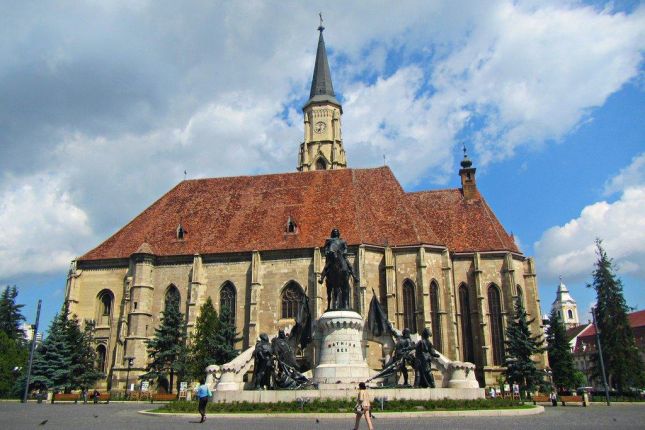
35+ Best Things to Do in Cluj-Napoca & Places to Visit
Cluj-Napoca (or simply Cluj) is Romania's second-largest city with a vibrant personality: young-hearted and always up to something, a major cultural and university hub full of creative energy and good vibes!
With a mix of medieval landmarks, historical sites, architectural jewels, trendy urban hotspots, cobblestone streets, and numerous events, Cluj is a laid-back city where people live unrushed - despite its fantastic growth since Romania joined the European Union in 2007.
La Cluj - as locals say in Cluj - everything is slower.
It's also one of the most visited cities by tourists since it's ideally located in Central Romania which makes it a good base to explore the famous regions of Transylvania, Maramures, and Bucovina. And you'll find lots of low-cost flights from all over Europe to get here!
- check our practical travel guide on how to visit Romania for the first time to make planning your trip easier
In this Cluj-Napoca travel guide we listed over 35 of the best things to do in Cluj, popular attractions for day trips in Cluj county, local favorites as well as lesser known sights and activities you should consider.
Table of contents
What makes Cluj Napoca worth visiting?
How to discover the best places to visit in cluj napoca, 1. start exploring cluj from avram iancu square, 2. admire the architectural mix of cluj-napoca, 3. take a stroll on the main street, eroilor boulevard, 4. visit union square and its landmarks, 5. enjoy nature in central park, 6. discover the interwar architecture of cluj and enjoy somes river, 7. admire the city from cetatuia hill, thirsty for culture, 8. taste the rural life at the romulus vuia ethnographic park, 9. check romanian aesthetics at the ethnographic museum of transylvania, 10. visit the national museum of transylvanian history, 11. admire the art at the cluj national art museum, 12. discover the oldest building in cluj: matthias corvinus house, 13. take your time to visit small art galleries, 14. go to the artisan fares to meet local craftsmen, 15. visit cluj during cultural events, 16. visit one of oldest still-in-service churches: the franciscan church, 17. admire byzantine architecture at the assumption cathedral, 18. go to a concert at the reformed church, 19. visit the charming face-to-face greek-catholic cathedral, 20. smell the beauty at the botanical garden, day trips from cluj-napoca to visit transylvania, 21. see the #1 underground attraction in the country: turda salt mine, 22. visit the most authentic medieval castle in transylvania: corvin castle, 23. make a stop at the alba iulia citadel, 24. visit unesco-listed sites: sighisoara citadel and fortified saxon villages, 25. go deeper, and discover traditional regions of romania, 26. go on a hike in the apuseni mountains, 27. visit a traditional region in apuseni mts, 28. admire a natural reserve: turda gorges, 29. go to the charming village of rimetea and hike to piatra secuiului, 30. enter a space of mysteries at the hoia baciu forest, 31. visit the popular banffy castle, 32. go horse riding in the hills of transylvania, where to go out in cluj-napoca. best restaurants in cluj, 33. enjoy a tasty blend of fancy and classic flavours, 34. taste traditional romanian food, 35. discover the specialty coffee culture in cluj, 36. go out for drinks in museum square, 36. mingle with students on piezisa street, how to get to cluj-napoca, public transportation in cluj-napoca. from airport to city center, where to stay in cluj-napoca.
View this post on Instagram A post shared by We Are Cluj (@wearecluj)
Why do locals all over Romania talk about the friendly people and easy-going vibe of Cluj-Napoca?
Simple: it's a bustling university city with a creative spirit, a down-to-earth attitude about work, and a 'chill' vibe - in contrast with the hustle and bustle, 'always in a rush' people in Bucharest.
Locals here are very friendly and it will be easy to interact with them – on a walk through the city, in a coffee shop serving specialty Ethiopian single origin or at one of the famous Romanian festivals taking place in Cluj like the massive Untold festival, the alternative Electric Castle or Transyilvania International Film Festival where some of the best Romanian movies have premiered.
There are many things to do in Cluj because the city is the unofficial capital of Transylvania. Historically, Cluj has always been a cultural and political center in Romania.
Romanians, Hungarians, Germans, and other minorities, with all their customs, faiths, ways of life, and typical dishes have peacefully coexisted here for centuries. So learning about local culture is one of the best things you can do here.
Then there's also Central Park, a hotspot for local life, the Botanical Garden, the best in Romania, and Cetatuia Hill with its great view of the city, to satisfy your needs for 'nature in the city.'
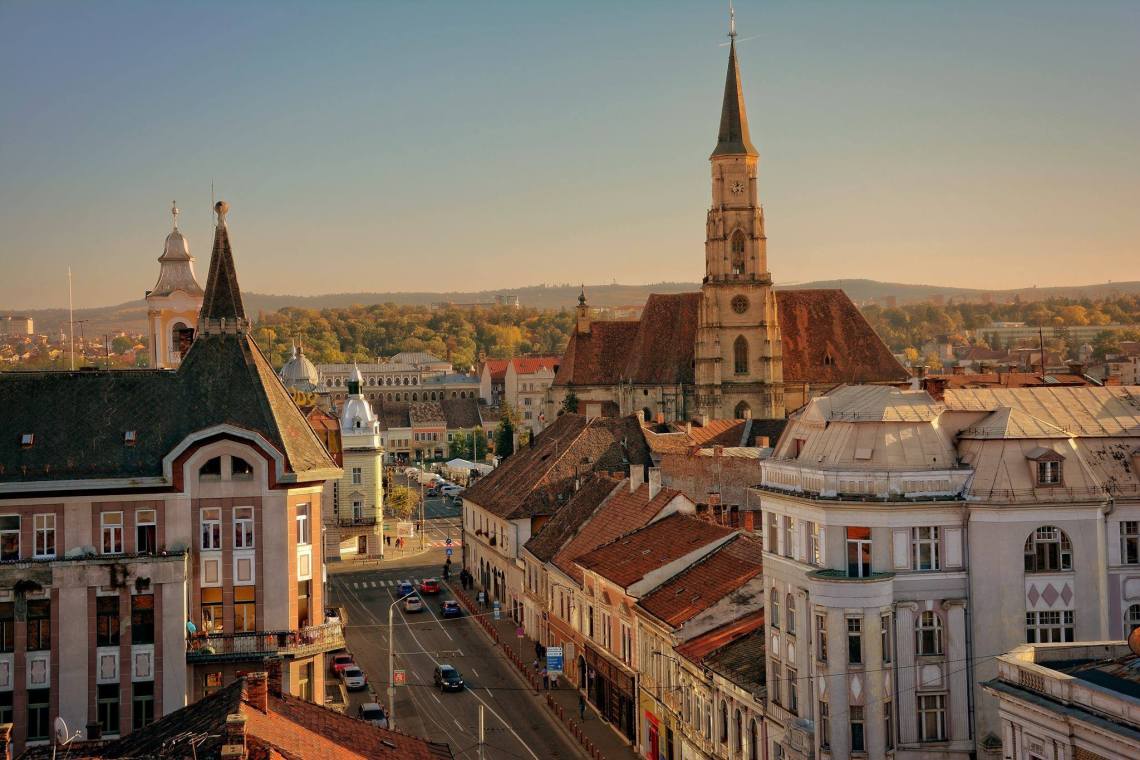
The best way to do some sightseeing and explore Cluj is on foot because the city's landmarks and best places to see are located close to each other in the city centre. In fact, the city’s layout is a huge East-West axis so I suggest you start your walk either from Central University Library or Avram Iancu Square.
If you decide to start exploring Cluj starting from Avram Iancu Square, you will notice the Orthodox Cathedral which you can visit, and the statue of Avram Iancu, a major figure in the history of Transylvania.
View this post on Instagram A post shared by Yolozsvár (@yolozsvaros)
Continue your walking tour on the wide and busy Eroilor Boulevard the main street in Cluj where locals love to go for a walk and hang out. You'll also pass by some of the city's oldest buildings, like the Old Town Hall. Many of them date back to the 16th century when Cluj experienced an economic and cultural awakening and they are top attractions for tourists due to their unique architecture.
- Local tip: while here, take your pick from some of the most popular cafes and bistros which make for a great place to experience the city's local life: Olivo, Koffer, DOT, A la Tarte, Meron or Eggcetera
If you are into architecture then you'll notice how the style changed from constructions that survived from the Renaissance period to the more elegant 19th-century buildings found in the city center and around major squares. Great spots for those passionate about aesthetics, history, and photography!
Continue your walking tour until you reach Union Square (Piața Unirii), a lovely place characterised by 18th century and 19th-century buildings, with its massive St. Michael's Church, an impressive Gothic landmark and one of Cluj's most popular tourist attractions, and the imposing Matthias Corvinus monument in the center.
Union Square is a place full of history. Here, you can also find the Continental Hotel, the place that housed German troops during the Second World War.
Lots of local events and festivals take place in the main square but if not - enjoy the open space and take a look around: no one here is in a rush, locals smile, go slow, and like to grab their coffee and enjoy it in the sun.
And so should you!
- Local tip: notice the details of the imposing statue of Matthias Corvinus, a famous Hungarian king born in Cluj Napoca (then Kolozsvár) in the 15th century.
The history of Hungary and Romania is intertwined beyond administrative borders or nationalist rhetoric. If you want to learn more about the history of Cluj-Napoca and Transylvania, one of our guides has a degree in history and is eager to show you around and tell you more:
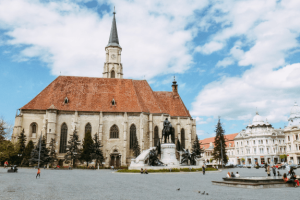
Short Walk & Talk about Cluj-Napoca with a Local
Start from: Cluj-Napoca
Next on your walk should be Central Park (Parcul Central) where you'll see people laying on the grass, hanging hammocks and enjoying life. Go for a walk around Chios Lake too. If there are no local fares in Union Square, maybe they're here, especially during the Summer months.
The park is closed during the Untold festival and I generally don't recommend you visit Cluj Napoca during that time since it's super crowded and expensive.
- Pro tip: at the end of Central Park towards Cluj Arena you'll find local stalls that sell typical Romanian street food: langos (fried dough topped with sour cream, cheese, and garlic sauce), kurtos kalac (sweet bread with topping), cotton candy (a staple of Romanian childhood) and machine-made instant icecream, my favorite :)
Across the road, near the Mill Canal, you'll find lots of well-preserved houses, with beautiful architecture, built between the Two World Wars. If you continue your walk you'll eventually reach the Somes River promenade, another local life hotspot.
If you want a great view over this beautiful city you should cross the river and go up to Cetatuia Hill the perfect place for a panoramic view of the entire city and surrounding hills! You can get there on a short hike going through Cetatuia Park but also by grabbing a taxi. And sunsets here are spectacular and you can enjoy them with a drink at Pergola Cafe.
Then you're in the right place. Thanks to its rich multicultural and humanistic history, Cluj-Napoca was always a place renowned for its culture, and interest in humanities and arts. You'll often visit places including restaurants and cafes where you'll get a sense of how important culture is for one of Romania's biggest cities.
View this post on Instagram A post shared by E Fain La Cluj (@efainlacluj)
The Romulus Vuia Ethnographic Park is the first open-air museum in the country where you will get a taste of rural Transylvania: traditional houses, rural technical installations and wooden churches, and lots of green spaces where you can even chill or have a picnic (closed November - April).
The Ethnographic Museum of Transylvania is the in-door brother of the above, where you'll discover clothing, household and decorative items, lots of pictures, and literature from the past times.
The National Museum of Transylvanian History has a focus on history and archeology, with objects and artefacts dating back to our ancestors, the Dacians. This is one of the best museums in Romania to visit if you want to understand more about the complex history of Transylvania.
Cluj is also known for its artsy vibe where, besides classical arts, contemporary and modernist artists are also featured. Also, photo exhibitions are regularly on display in the main squares or even in cafes. Here is a list of the best places for art lovers.
Cluj-Napoca Art Museum, located next to the University of Arts, hosts various art exhibitions all year long. Explore a diverse collection of over 12,000 paintings, sculptures, graphic arts, and decorative pieces spanning from the 16th to the 21st centuries.
View this post on Instagram A post shared by Discover Cluj | Romania (@discovercluj)
The Matthias Corvinus House (Casa Matias) stands as the birthplace of Matthias Corvinus, the King of Hungary, and ranks among Cluj-Napoca's oldest structures.
Built in the 15th century with Gothic influences, this historic house has served various roles throughout its existence, evolving from a residence to a prison, hospital, and museum. From Union Square go for a walk towards Museum Square and you can't miss it.
Cluj also has its list of small art galleries, such as Iaga Contemporary Art, which hosts about six exhibitions a year. Other small galleries you can visit are Plan B, Bazis Gallery, or Lateral ArtSpace. These galleries exclusively focus on contemporary art, providing art enthusiasts with distinctive perspectives and immersive experiences.
View this post on Instagram A post shared by TIFF Romania (@tiffromania)
Cluj hosts many cultural events, such as the Transylvania International Film Festival (TIFF), Jazz in the Park and others. On the official tourism website of Cluj-Napoca, Visit Cluj , you can find a list of events scheduled for the next period. And since we can't separate Transylvanian culture from its multi-faith background, there are some religious sights worth visiting besides the Orthodox Cathedral and Saint Michael's Church. All of them are located in the city center.
Built between 1260 and 1290, the Franciscan Church stands on the grounds of an earlier Catholic church, destroyed during the Tatar invasions in 1241. Nestled in Museum Square, formerly known as Little Square to distinguish it from Market Square, this location revealed remnants of the Roman city during archaeological excavations. Inside the church, intricate sculptures and an ornate altarpiece grace the interior. The building is classified as a historical monument.
The Assumption Cathedral, also known as the Dormition of the Theotokos Cathedral, is a great example of Byzantine architecture adapted to 20th-century construction exigences. Completed in 1933, it stands as the largest Romanian Orthodox church in Cluj.
Its architectural marvel unfolds in the Romanian Brâncovenesc style, seamlessly blending Renaissance and Byzantine influences. Nestled in Avram Iancu Square, it shares the cultural landscape with the Cluj-Napoca National Theater and the Avram Iancu Statue.
View this post on Instagram A post shared by clujinimagini (@clujinimagini)
The Face-to-face Greek-Catholic Cathedral stands as one of the most beautiful churches in Cluj, and it is my favorite, since I got married here :)
Constructed in the Baroque style, the church is adorned in yellow and features a tall tower, reaching a height of 28 meters, which imparts an ancient charm along Eroilor Boulevard.
You should also consider visiting the Botanical Garden in Cluj-Napoca, the largest and, according to some, most beautiful in Romania. Besides the Rosarium in front of the building, a rose garden with many species, it has many unique sights like the Japanese garden and the Roman garden, both exquisite, which make this an interesting place to visit.
Springtime is the best time to visit it since over 40.000 tulips are on display, making it one of the biggest tourist attractions in Cluj. Find out more about visiting hours on the official website .
Thanks to its location and well-connected public transport, the city is a very good base for the many things to do in Transylvania and for visiting places harder to get to from Bucharest or other parts of the country. So going on short trips to discover Romania's main attractions is one of the best things you can do while in Cluj!
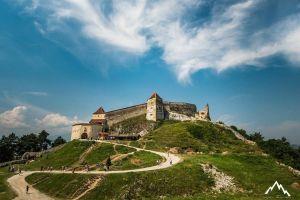
3-Day Transylvania Tour: Cities, Sights & Local Life
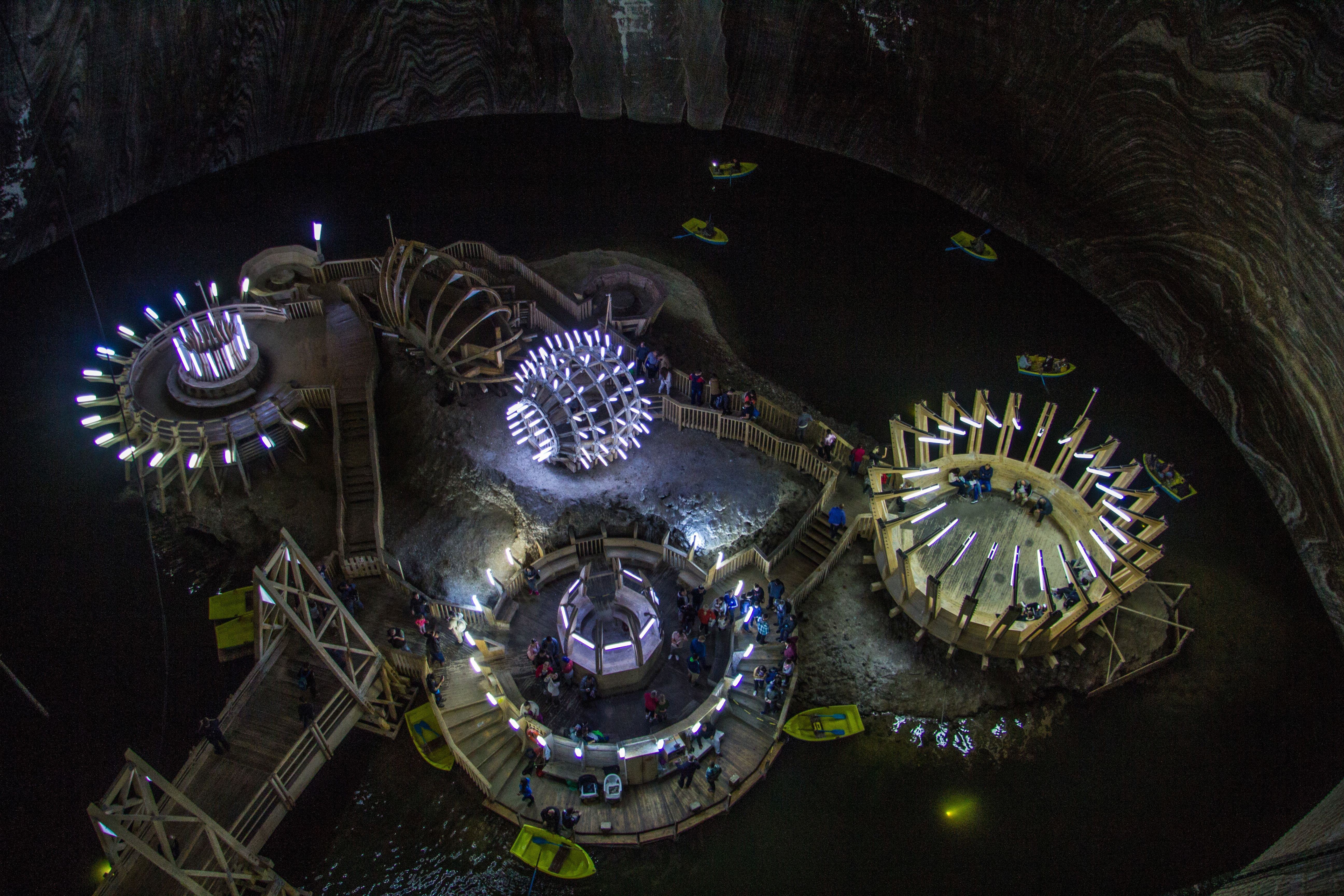
Turda Salt Mine is one of the best attractions you can visit near Cluj-Napoca
Undoubtedly the main attraction near Cluj-Napoca is Turda Salt Mine. Business Insider named Salina Turda as the #1 underground location to visit with beautiful scenery thanks to artfully placed lighting installations. And with a lot of activities for visitors, such as table tennis or mini golf.
Besides breathing salty air which is good for your lungs, there are some awesome things you can do down there too: imagine a 2,000-year-old mine dating back to Roman Empire times with caverns so huge an underground Ferris wheel could be installed! Or boat rides on an underground lake. Wait... what?
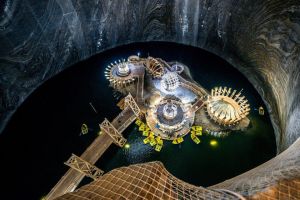
Turda Salt Mine Tours
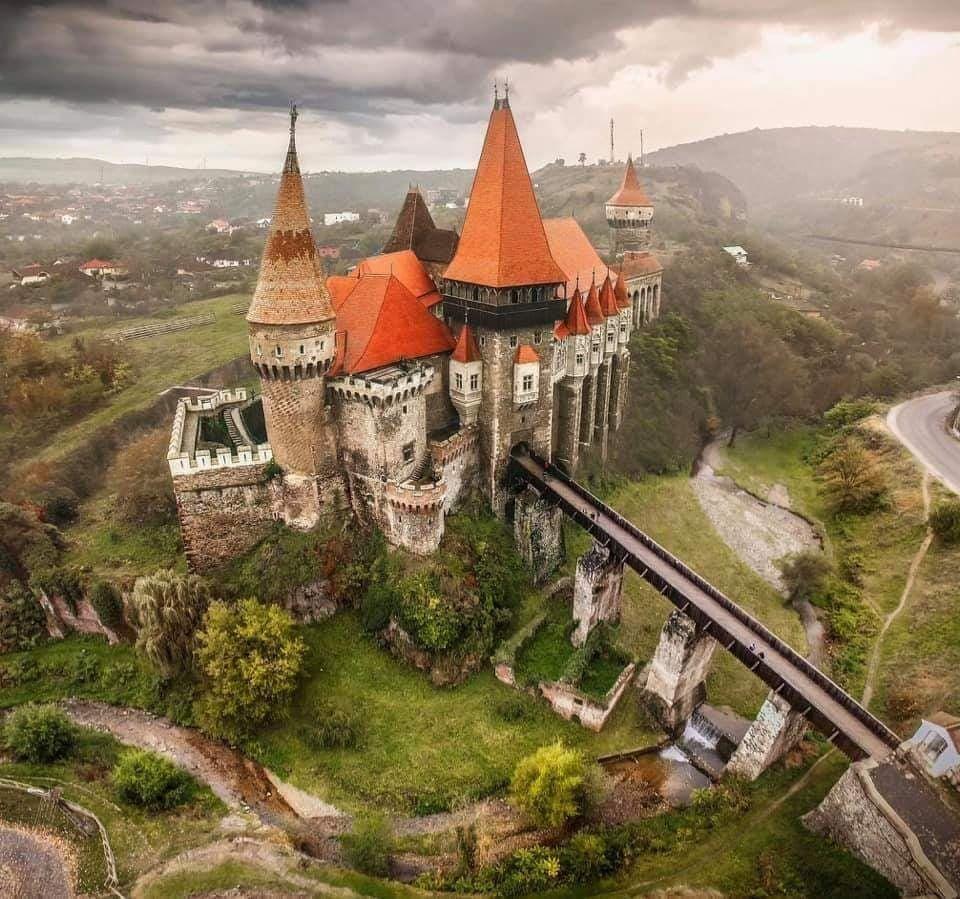
Corvin Castle, the best preserved medieval castle in Eastern Europe
Corvin Castle , a 600-year old Gothic castle may not be the most famous castle in Transylvania. It's hard to compete with Bran Castle aka Dracula's Castle close to Brasov! But in our opinion, it's the most interesting and authentic medieval castle in Transylvania, with real stories and fascinating legends. Unlike Bran Castle (4h away), Corvin Castle can be easily visited on a day trip from Cluj-Napoca .
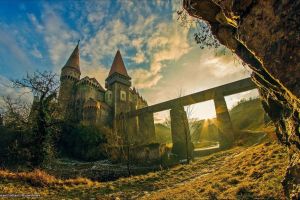
History Day Trip: Corvin Castle & Alba Iulia Citadel
On your way to Corvin Castle, you can stop at Alba Iulia Citadel . The spiritual capital of Romania where the Great Union of 1918 took place when Transylvania joined Wallachia and Moldova, this five-point citadel dating back to the Roman Empire is worth a short trip.
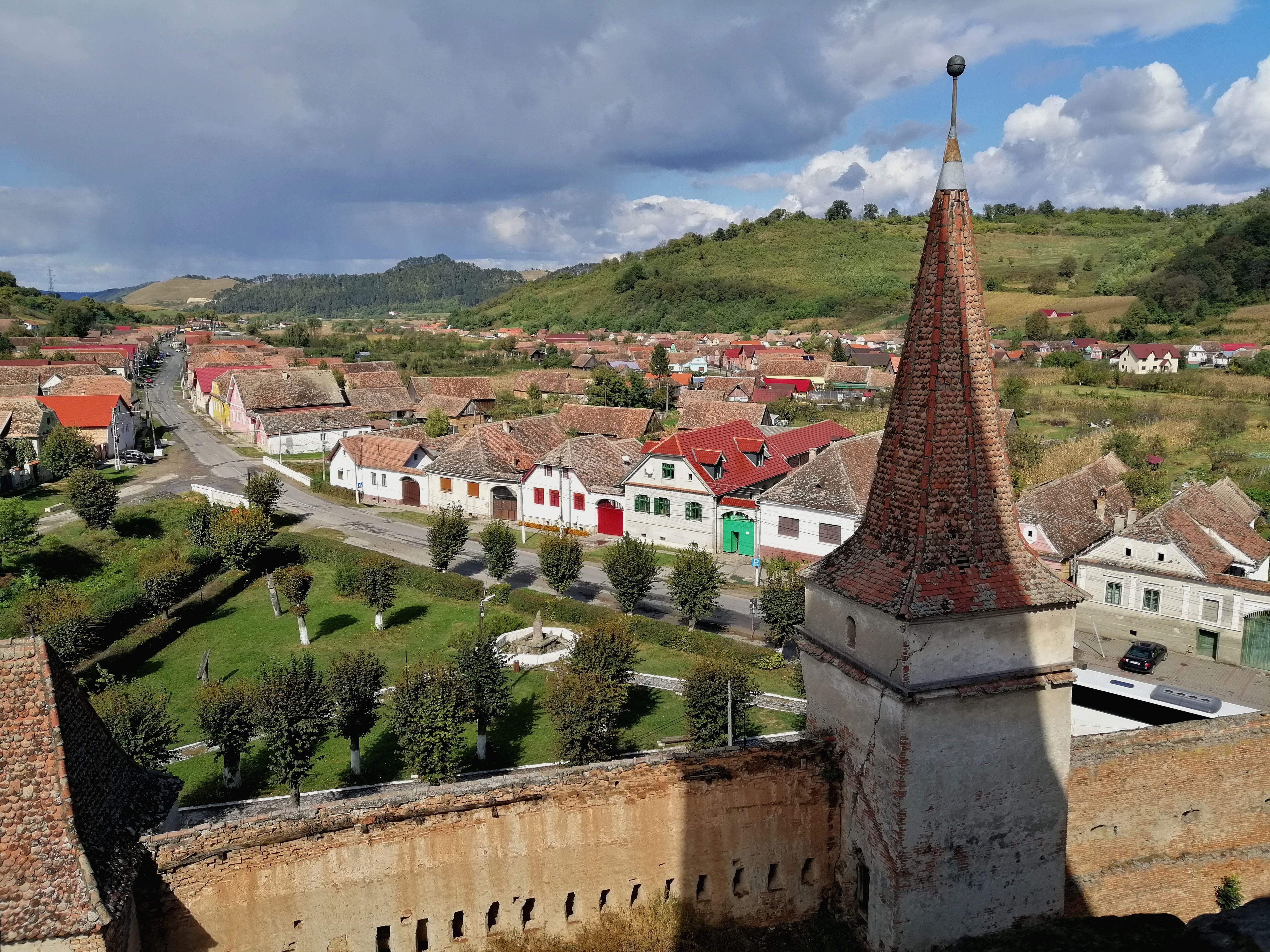
A typical Saxon village in Transylvania
Among the other most popular places for tourists to visit Transylvania are the famous Sighisoara Citadel and the Saxon villages with fortified churches all part UNESCO heritage. On a day trip to these sights, it will be easier to understand the complex Transylvanian history and culture, while admiring the beautiful views of the region, famous for its mellow hills and picturesque village life.
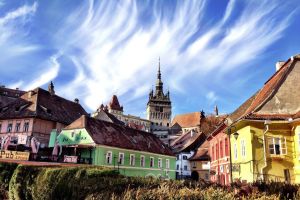
Tour of Transylvania's Countryside: Sighisoara Citadel & Fortified Villages
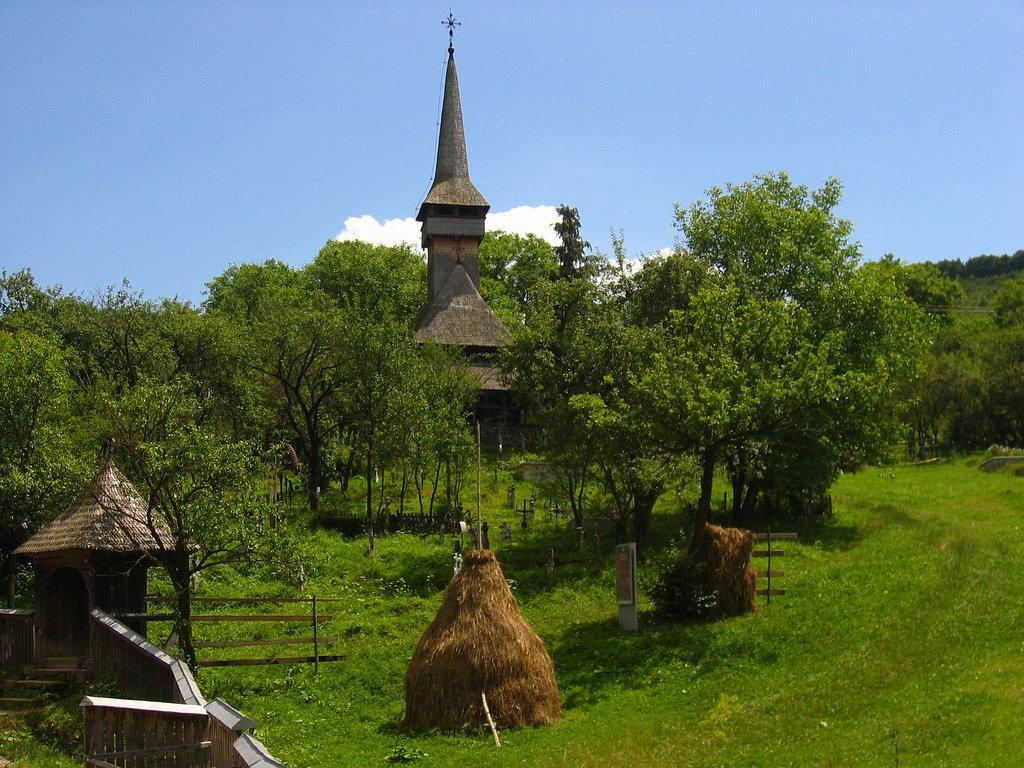
If you're interested in authentic Romanian culture and want to experience the traditional rural life for which our country is so famous for, then Cluj-Napoca is the perfect place to go on trips to discover the traditional regions of Maramures (N-W) or Bucovina (N-E).
Both are equally considered the most authentic and ethnographically representative regions of Romania. They're famous for their local crafts (wood caving, egg painting), and for their many customs and traditions kept alive by locals, including how they dress up in folk costumes to go to church on Sunday.
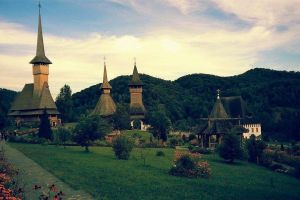
2 or 3 Days in Maramures: Wooden Churches, Traditions & Village Life
Besides the jaw-dropping sceneries and homegrown delicious food, each region has many tourist attractions spread across villages in the region. In Maramures you can visit the UNESCO Wooden Churches , while in Bucovina the famous UNESCO Painted Monasteries . Whatever you choose - both regions are fascinating and perfect for slow travel meaning you'll need min 2-3 full days for each one.
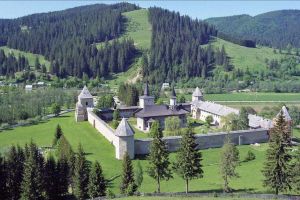
5-Day Complete Tour of Traditional Maramures & Bucovina
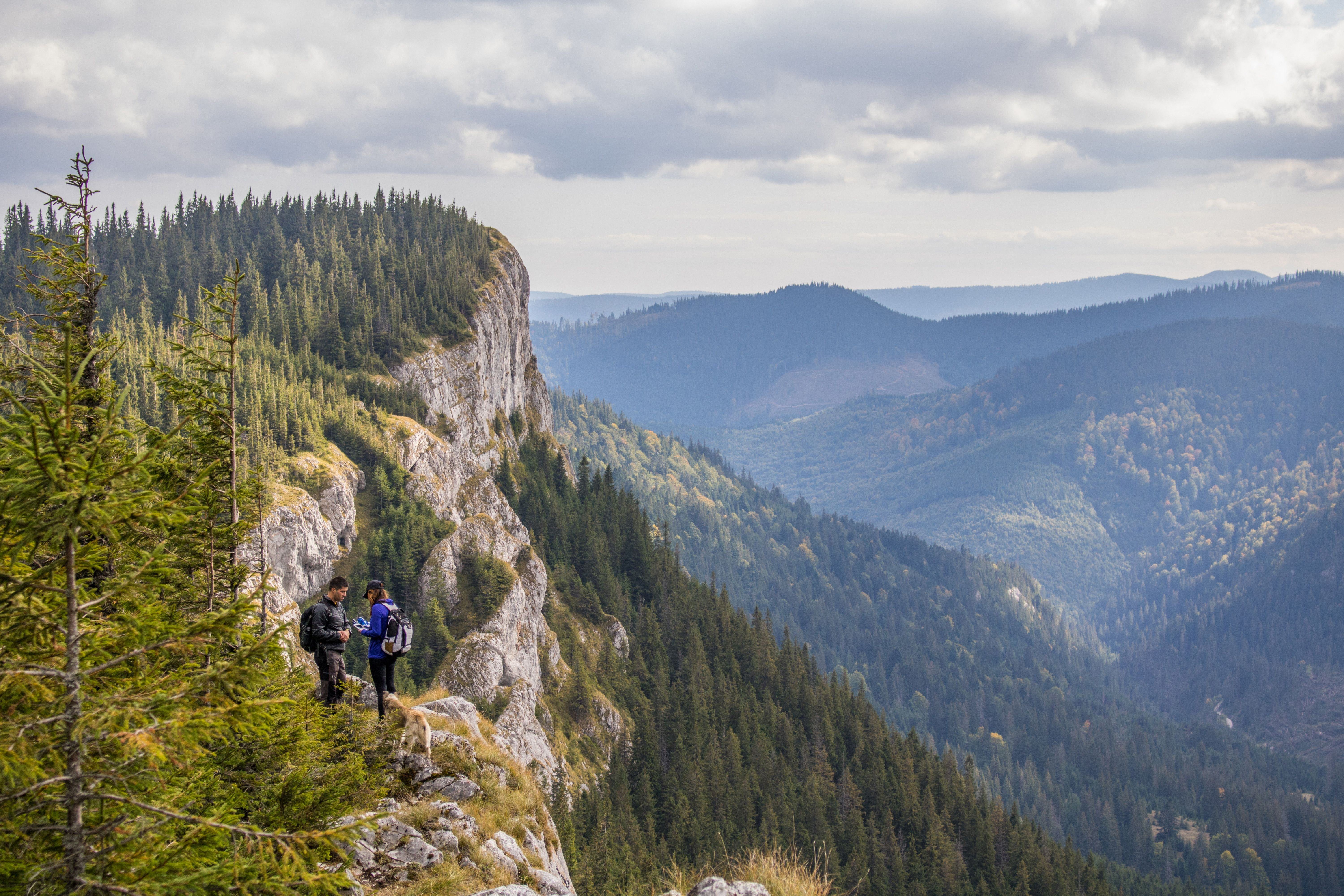
Amazing views in Apuseni Natural Park close to Cluj
One of our favorite things to do from Cluj-Napoca - that few people know about - is to go hiking in Transylvania. Our article will tell you more about Romania's huge and underrated outdoor potential.
Cluj Napoca is close to the Western Carpathian Mountains, locally known as the Apuseni Mountains. Generally considered as medium difficulty mountains, the highest peaks are Curcubata Mare at 1,849m and Vladeasa Peak at 1,836m which can be summited in a one-day hiking trip from Cluj with our experienced mountain guide.
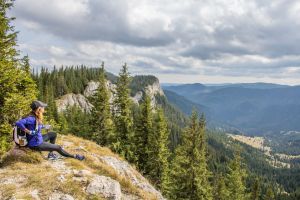
1 or 2-day Hiking Tour from Cluj: Wild Trails in Apuseni Natural Park
Besides the numerous hiking trails for all difficulty and experience levels, there are lots of natural attractions too such as Scarisoara Ice Cave, Rusty Ravine, Bride's Veil Waterfall, White Cliffs (Pietrele Doamnei) and Scarita Belioara Reserve.
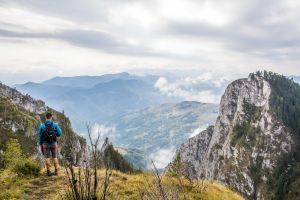
Hike to a Unique Natural Reserve in Apuseni Mountains
These can be seen on hiking day trips or multi-day trips that will also take you through picturesque villages. And there are over 150 caves most of which you can visit and some perfect for caving speleological exploration!
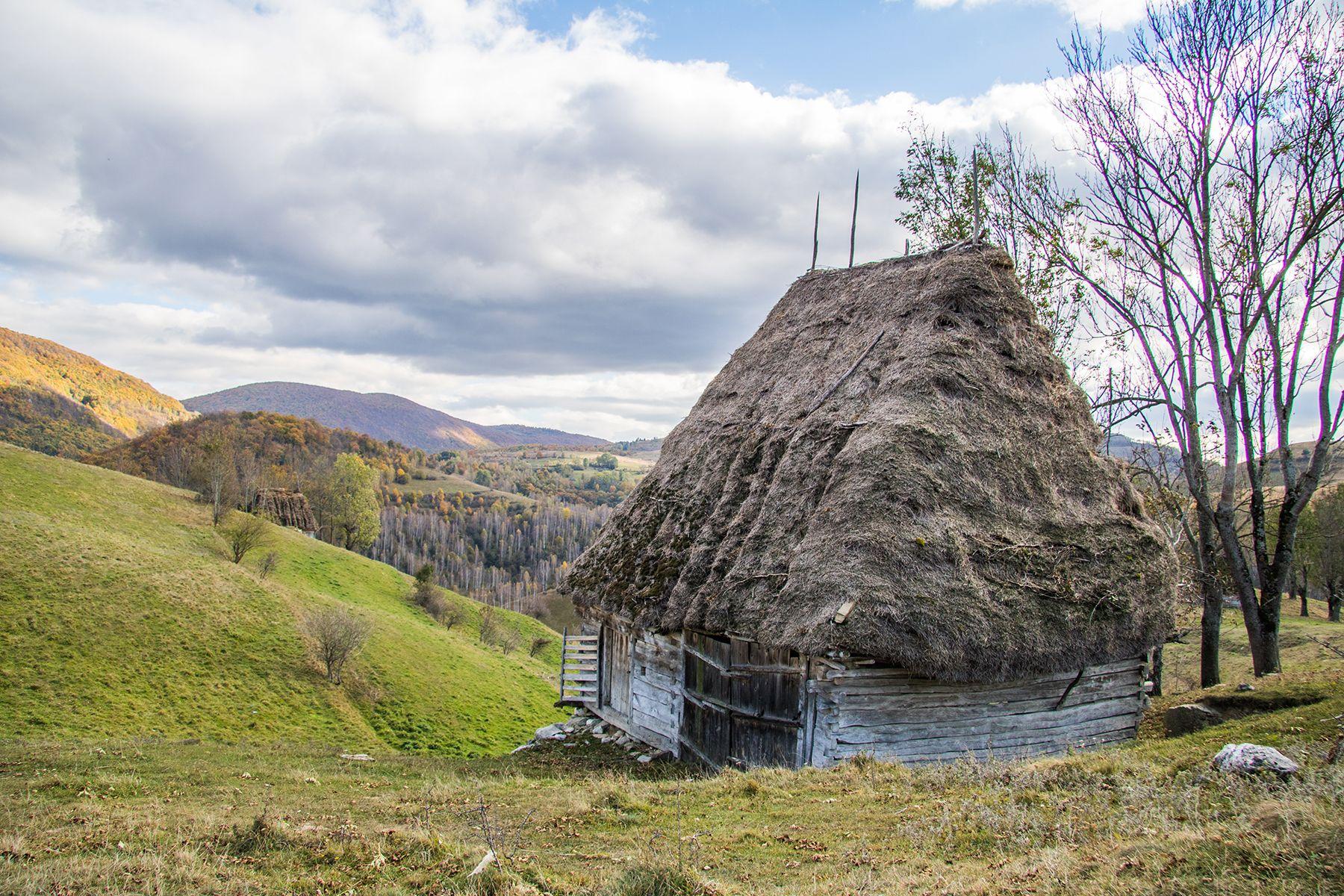
And in Apuseni Mountains specifically in Apuseni Natural Park there is another ethnographically representative region known as Țara Moților where locals live as they used to decades ago, undisturbed by modern civilisation. So besides hiking and visiting natural attractions, this is the best place to experience life in rural Transylvania authentically.
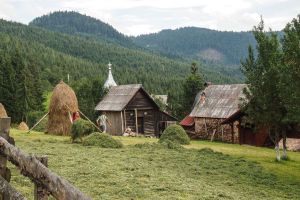
2 Day Hiking in Apuseni Natural Park: Culture & Local Life
Start from: Cluj-Napoca or Sibiu
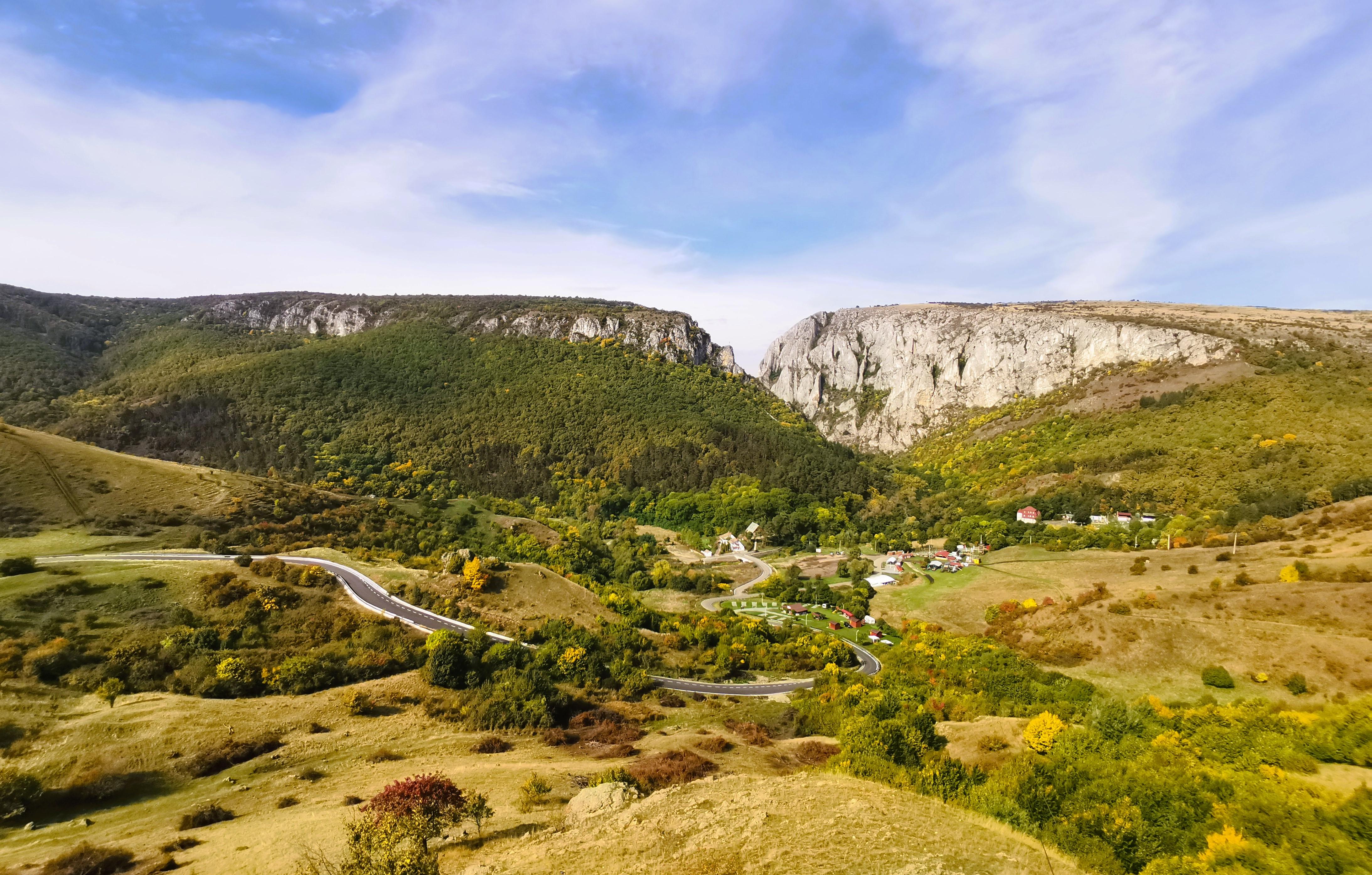
Other popular natural attractions near Cluj are Turda Gorges (Cheile Turzii) a superb area that will close you off from civilisation with fresh air and lots of vegetation. A hiking trip in Turda Gorges to the top will last about 4h but you can also learn via ferrata with our specialist guide if you're up for it.
For a nature lover, this is the perfect place to be.
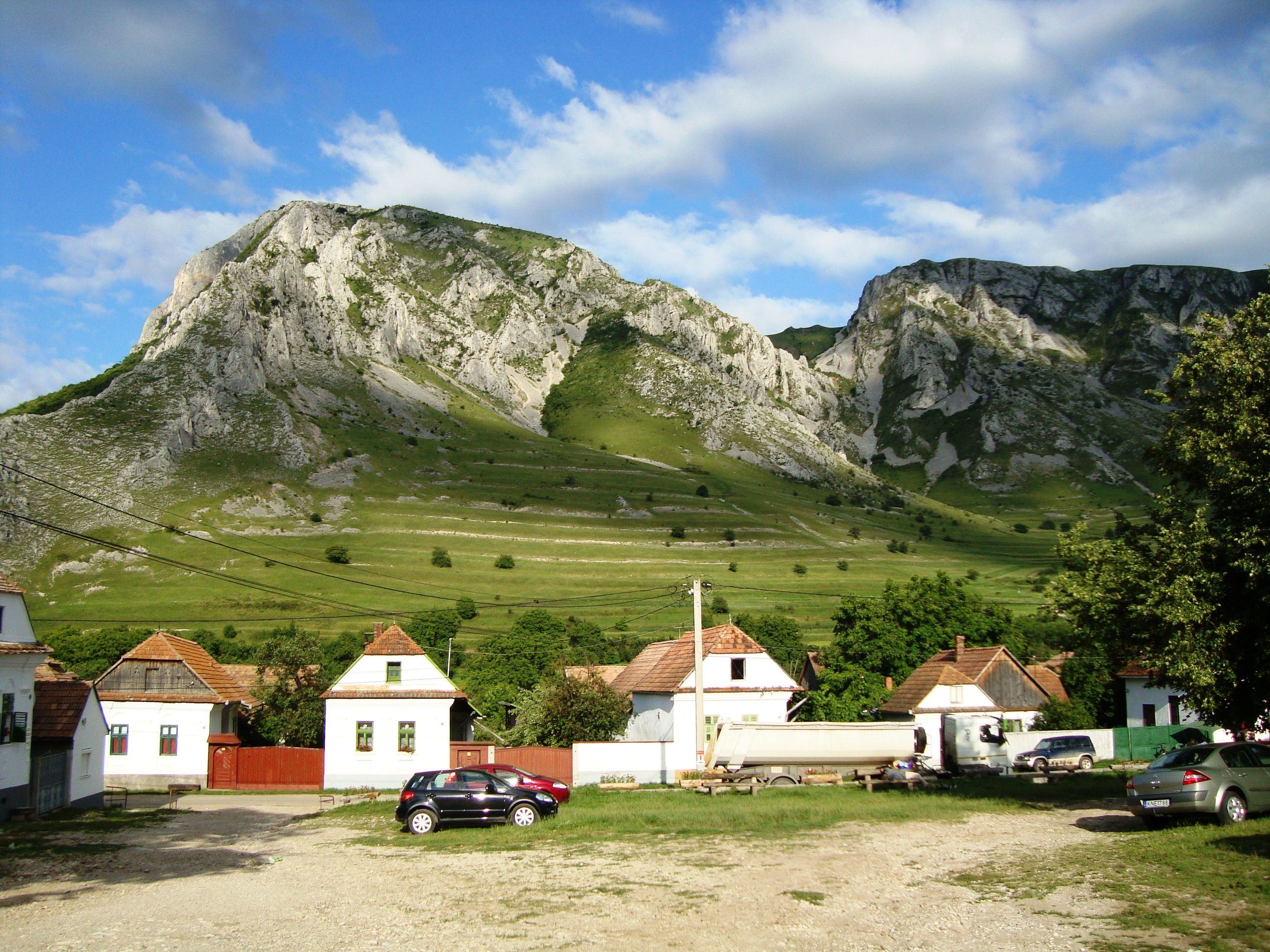
Another popular route - though more difficult - is Szekler's Stone (Piatra Secuiului) in the charming ethnic-Hungarian village of Rimetea. Towering and imposing, this hiking day trip will be rewarding for sure.
- Local tip: you may read about Tarnita Lake outside of Cluj; but other than private houses, there's no real infrastructure for tourists to enjoy the area - so I wouldn't recommend you bother going there.
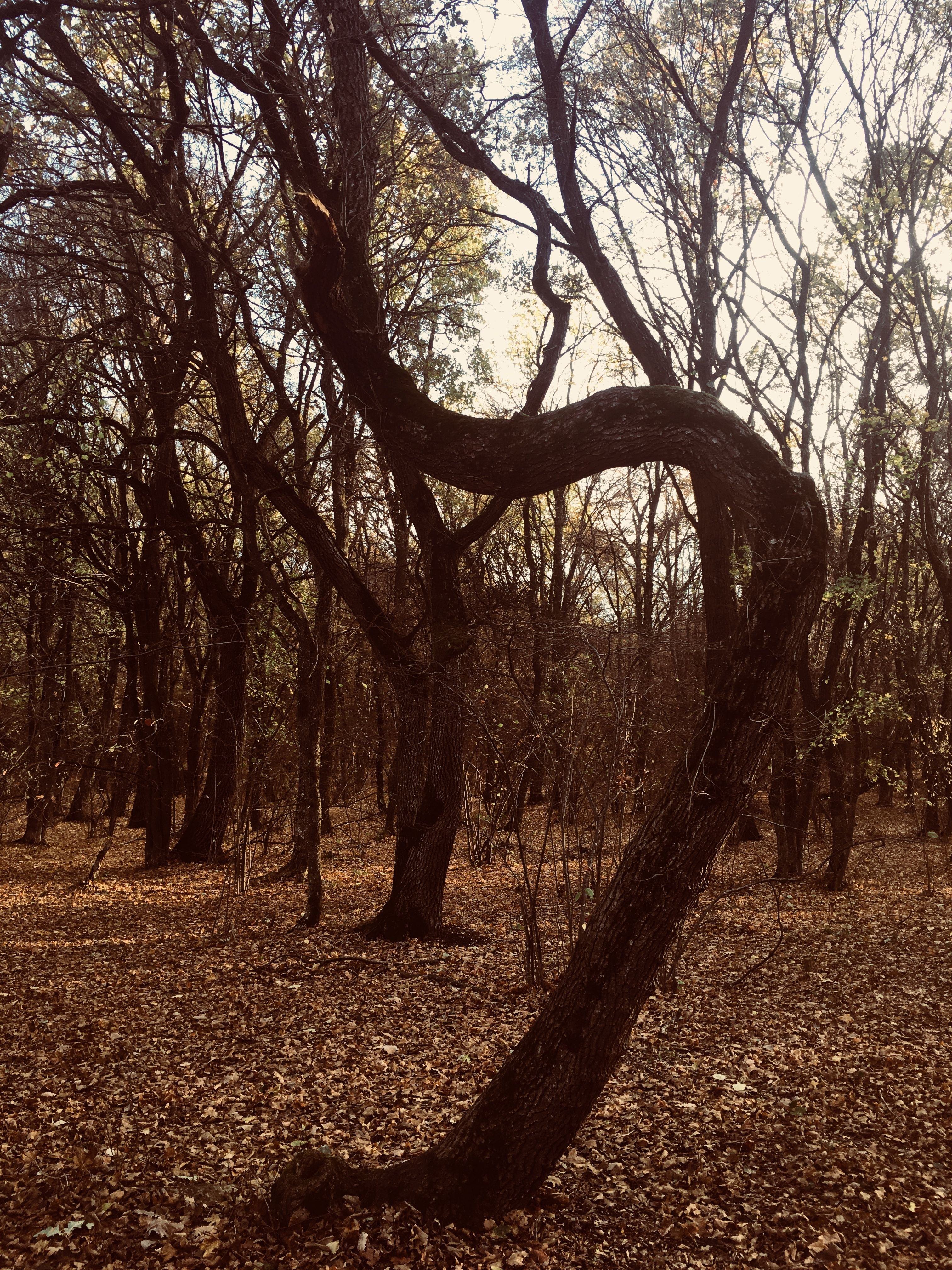
The haunted forest of Romania: Hoia Baciu
Now time for something completely different - did you know there is a forest near Cluj-Napoca said to be haunted?
It's called Hoia Baciu after a shepherd disappeared here without a trace with his entire flock. It's also where UFO sightings were photographed 50 years ago, with strange readings recorded ever since. And the vegetation in the forest is... weird. Like, there's a perfectly round huge clearing where grass doesn't grow above a certain level. And, obviously, no one mows it!
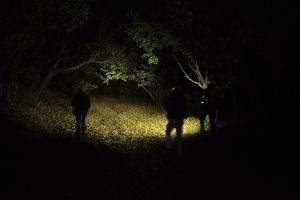
A Night Tour of Haunted Hoia Baciu Forest
Start from: Cluj - Napoca
I know what you're thinking - hard to believe! Same for me until I went with our guide who is super passionate about this attraction on a tour in Hoia Baciu forest with special measuring equipment. I like mysteries and this is by far a unique thing to do and an unusual place in Cluj-Napoca!
Near Hoia Baciu Forest, you can also find the oldest human settlement near Cluj and the oldest in Transylvania, dating from the Neolithic Period, Gura Baciului.
Bánffy Castle, located in Bonţida near Cluj-Napoca, stands as an architectural marvel with influences spanning Renaissance, Baroque, Neoclassical, and Neogothic styles. Owned by the Hungarian Bánffy family, the castle has been repurposed, housing an Art Cafe since 2001, while the Trust has established an educational center in the Miklós building. Various parts of the castle, including the former chapel, stables, and main building, serve as venues for cultural events and programs.
In recent years, Banffy Castle has emerged as a host for music festivals, which turned it into a popular spot near Cluj. If you're thinking of going to Electric Castle , one of Romania's most popular events - don't think twice!
Taking place on the Banffy domain, this festival showcases a dynamic blend of electronic music and artists spanning various genres, such as electronic, punk-rock, alternative, D'n'B, trap, funky disco and more.

If you're a fan of the saddle - you'll love this experience! Close to Cluj one of our guides - passionate about horses - knows a family who breeds Huluc horses, an authentic Romanian mountain breed.
Back when Transylvania was under Austrian or Hungarian domination, Romanian outlaws on horseback called haiduci would be famous for their disruptive incursions on foreign officials.
So wether you want to learn more stories about them, or just explore picturesque hills and typical villages on horseback, you'll love this.
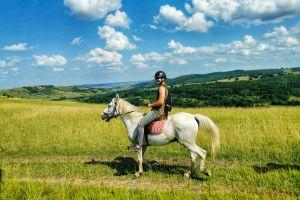
2-Day Horse Riding Trip in Transylvania
View this post on Instagram A post shared by Romanian Friend (@romanian_friend)
Ok, back to normal! :)
After so much sightseeing in Cluj and on day trips, you're probably starving! The best places for that in Cluj-Napoca are Museum Square (Piata Muzeului), Union Square (though a little too touristy for our taste), and Potaissa Street. This is where you'll find the best restaurants in the city, with lots of bars, cafes, and inspiring terraces.
Blend in with locals and make some new friends. If you're looking for places to go out in Cluj-Napoca, try the fancy menu at Via Restaurant, reinterpreted traditional food at Zama, or delicious pasta at Tortelli. You can also try Casa Boema for Romanian tapas or Baracca for gourmet delicacies. Bulgakov and Casa TIFF are local favorites too.
If you're looking to try Romanian food beyond the typical sarmale (stuffed cabbage rolls), polenta with shepherd's cheese, papanasi (huge desert) and mititei most travel bloggers talk about - one of our guides is also a foodie.
He'll take you to the best places in Cluj to try authentic Romanian food, including a farmers' market to taste local produce and tell you what local specialties to try. We love these walk, talk & eat local experiences when visiting other cities around the world so we created one for Cluj too:
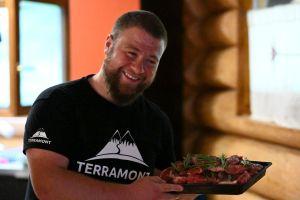
Cluj-Napoca Food Tour: Food Markets, Regional Dishes and Coffee Culture
Coffee lover? You're in for a treat! For almost a decade now, Cluj has been famous in the entire country for its specialty coffee culture. Popular places to try: Meron, Narcoffee, Olivo, Let’s Coffee, and Frasca - a small and cozy place that will make you feel at home and serve gentle low acid coffee .
- Pro tip: Romanians love good coffee and we wrote an article with the best coffee shops in Romania covering every major tourist city
Museum Square is a perfect place to end up for drinks after dinner. For good wines try Crush Wine Bar although most hip bars will serve the best Romanian wines. Try Londoner's Pub or Hemingway's for cocktails and other great things to surprise your taste buds.
Piezisa Street is full of bars, clubs, and street food eateries since there’s a large student campus nearby – so prepare for a long night of music, dancing, shots, and a great time! For proper clubbing, check out /Form Space and Euphoria Music Hall which usually have live concerts followed by DJ sets.
The best time to visit Cluj-Napoca is generally April - September when there are lots of events going on in the city. A city break of 4-5 days is enough especially if you leave 1-2 full days for day trips.
Cluj has Romania's second-largest airport which is very well connected to European cities, mostly with flights from Wizz Air. Check our guide on traveling to Romania for more info on that.
From Bucharest to Cluj-Napoca the best way is to catch an internal flight. By car it may take 7-8h and we don't recommend it (unless you break for one night in Brasov or Sibiu) because driving in Romania long distances is very tiring. There is an overnight train too which takes 10h.
Unfortunately, public transportation in Romania is not very well developed so take that into account when planning your trip.
From Cluj-Napoca International Airport to the city center or Old Town area there are 2 options:
- public bus line A1E that runs every 10 min daily or 20 min during weekends between 04:30 – 24:00; as you exit the arrivals building it will be on your right; it will take you to the city center in about 26 min and finish in Piata Mihai Viteazul; you can buy ticketss from the ticket machine in the airport;
- just outside the arrivals building you'll find the official taxis waiting, all safe and scam-free; you can even pay by card (just tell the driver before getting in); from Cluj airport to the city center it will cost about 10 Euro and take 15-25 min, depending on destination and traffic (for convenience and speed, this is what we recommend)
The best way to navigate Cluj-Napoca is by foot: the main landmarks and squares are all within walking distance. For anything else, take a taxi (Daniel, Nova, City) for 3,11 Lei/ km. You can also use the ride-hailing apps Uber or Bolt and pay cash or by card.
For more info on public transportation in Cluj-Napoca check the official website here. Bus and tram tickets cost 6 Lei for two rides but I doubt you'll need to use them. Renting public bikes is, unfortunately, not available for tourists (yet).
There are plenty of places to stay in Cluj around the Old Town area and main boulevards. Check on Booking.com or Airbnb to see options and you'll find everything from hostels to high-end hotels. Prices start as low as 20 Euro/ night.
Generally, I don't recommend you go further than Piata Operei or Parcul Central since you want to be within walking distance of the city center.
So - that's it! All my tips on how to visit Cluj-Napoca like a local with the best things to do in the city, must-see attractions, and day trips from here.
I hope it will inspire you to come over for a quick visit – we can even grab a drink in some of the spots I mentioned and I'll tell you more about the best things to do in Romania since I'm so passionate about my job!
Your Romanian Friend
Places to visit
- City Travel Guides (5)
- All Tourist Attractions (22)
- Tourist Regions (5)
Check our tours
- By category

4 times a year we prepare a newsletter with local stories, places and our special insights about Romanian culture and local life that will inspire you to visit our country and have an authentic local experience. Would you like to get it?
Follow Romanian Friend on:
#romanianfriend.

17 Top Things to do in Cluj-Napoca: Museums, History and Travel Guide
December 10, 2023 | Posted in: Romania
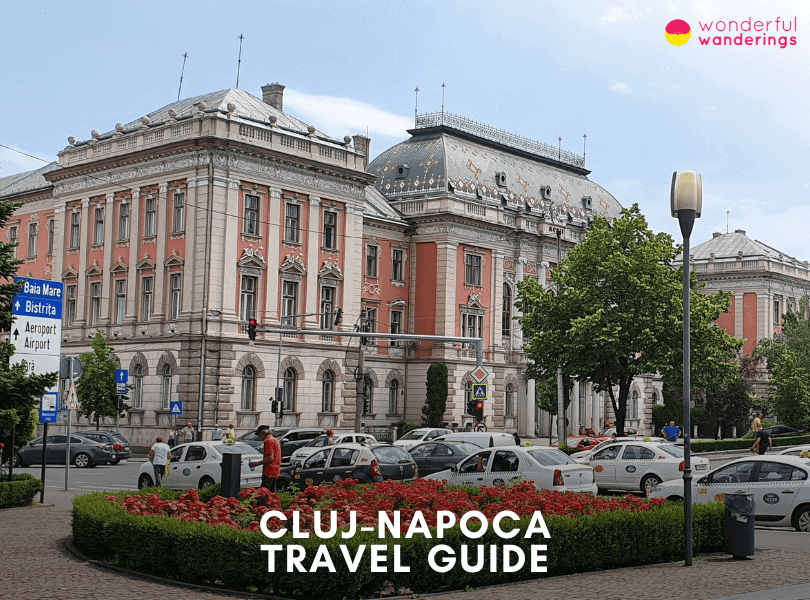
Cluj-Napoca is a city located in northwest Romania in the historical region of Transylvania. It has a long history dating back to Roman times when it was founded as the city of Napoca. Cluj-Napoca has been part of the Kingdom of Hungary, the Austrian Empire and modern Romania. It is the second most populous city in Romania after Bucharest, with a population of 324,576 as of 2023.
Cluj-Napoca is an important economic, academic and cultural hub. The city has a thriving university scene with over ten institutions of higher education. Major IT and technology companies have offices in Cluj-Napoca, earning it the nickname “Silicon Valley of Transylvania”.
Cluj-Napoca attractions feature the Gothic St. Michael's Church, the medieval Tailors' Tower, the Ethnographic Museum of Transylvania and the expansive Central Park. The city has a lively cafes, restaurants and a nightlife scene concentrated in the historic city center. Cluj-Napoca is known for its music and arts festivals like Untold and Electric Castle. Cluj-Napoca lies within the Eastern European Time zone, which is 2 hours ahead of Coordinated Universal Time (UTC+2) and switches to Eastern European Summer Time (UTC+3) during summer.
Listed below are the things to do in Cluj-Napoca.
- “Saint Michael” Church (Biserica Sfântul Mihail). “Saint Michael” Church (Biserica Sfântul Mihail) is a Romanian Orthodox church located in Unirii Square, Cluj-Napoca, Romania. The 80m high tower is the tallest church tower in Romania. The church has undergone renovations over the centuries, with the second phase of construction occurring from 1410-1487. The statue of King Matthias Corvinus stands in front of the church.
- Unirii Square (Piața Unirii). Unirii Square is the largest and most important square in Cluj-Napoca, Romania. It is located in the city center and has dimensions of 220m by 160m. The square is surrounded by beautiful 18th and 19th-century buildings in various architectural styles like Baroque, Gothic, Renaissance and Neoclassical. Points of interest include the Roman Catholic Cathedral, Baroque Palace, Serbian Orthodox Cathedral, Hotel Continental and a statue of King Matthias Corvinus.
- Tailors' Tower (Turnul Croitorilor). The Tailors' Tower is a medieval tower located in Unirii Square, Cluj-Napoca, Romania. The tower gets its name from the tailors' guild, which owned the building in the Middle Ages. The tower has seven floors and is approximately 35 meters high. It has Gothic windows and loopholes. The tower has served as a fire lookout, housed a pharmacy and been used as student housing.
- Ethnographic Museum of Transylvania (Muzeul Etnografic al Transilvaniei). The Ethnographic Museum of Transylvania is located in Cluj-Napoca, Romania. The museum is housed in an 18th-century Baroque palace. Exhibits showcase folk art, costumes, ceramics, icons, furniture, tools and other traditional objects. There are both permanent and temporary themed exhibitions. The museum has a library and photo archive, hosts cultural events and a souvenir shop.
- Central Park Simion Bărnuțiu (Parcul Central Simion Bărnuțiu). Central Park Simion Bărnuți in downtown Cluj-Napoca covers 13 hectares along the Someșul Mic River, offering visitors walks, sports, events, pedal boats and relaxation in one of the city's main public green spaces since the 1830s. It provides an urban oasis for tourists and locals.
- Alexandru Borza Botanical Garden (Grădina Botanică Alexandru Borza). The Alexandru Borza Botanical Garden in Cluj-Napoca was established in 1872 and contains over 10,000 global plant species across 14 hectares, making it one of southeast Europe's richest gardens. Key highlights include the Japanese Garden, palm house, systematic plant family beds and a 39,000-item botanical museum.
- Central Park Simion Bărnuțiu (Parcul Central Simion Bărnuțiu). Cetățuia Park sits on the site of an 18th-century Habsburg fortress that gives the park its name. Key highlights include remains of the fortress walls and buildings, the Heroes of the Nation Monument, outdoor fitness equipment, children's playground, walking paths and panoramic views over Cluj-Napoca from the top of Cetățuia Hill.
- Assumption Cathedral (Catedrala Adormirea Maicii Domnului). The ornate Assumption Cathedral, located in Avram Iancu Square, is Cluj-Napoca’s most famous Romanian Orthodox church. Its distinctive Romanian Brâncovenesc architectural style combines Renaissance and Byzantine elements to create one of the city's landmarks open to visitors.
- Avram Iancu Square (Piața Avram Iancu). Avram Iancu Square features prominent landmarks like the Assumption Cathedral, Palace of Justice, National Theater and statues commemorating Romanian revolutionary Avram Iancu and medieval king Matthias Corvinus. The central square serves as a popular gathering place.
- John the Baptist Orthodox Church in Cluj-Napoca. The Byzantine-style John the Baptist Orthodox Church, built between 1923 and 1933, stands out for its five domes, decorated interior with iconostasis and wall icons and serene atmosphere. Visitors can light candles, view the architecture and paintings and attend services at the centrally-located church.
1. “Saint Michael” Church (Biserica Sfântul Mihail)
St. Michael's Church (Biserica Sfântul Mihail) is a Romanian Orthodox church located in Unirii Square, Cluj-Napoca, Romania. The address is Piața Unirii 2, Cluj-Napoca 400001. It was built between 1316 and 1390 in the Gothic style and is one of the oldest churches in Transylvania. The 80m high tower is the tallest church tower in Romania. The church has undergone renovations over the centuries, with the second phase of construction occurring from 1410-1487. The statue of King Matthias Corvinus stands in front of the church.
Visitors can admire the Gothic architecture and 80m tall tower. The church holds regular Orthodox services that visitors are welcome to attend. The church is easily accessible by foot, bus or car, located centrally in Unirii Square. There is no admission fee to enter the church.
2. Unirii Square (Piața Unirii)
Unirii Square (Piața Unirii) is Cluj-Napoca, Romania's largest and most important square. It is located in the city center. The square has dimensions of 220m by 160m and is surrounded by beautiful 18th and 19th-century buildings in various architectural styles like Baroque, Gothic, Renaissance and Neoclassical. Points of interest include the Roman Catholic Cathedral, Baroque Palace, Serbian Orthodox Cathedral, Hotel Continental and a statue of King Matthias Corvinus. The square is a lively area with shops, restaurants and pedestrians.
Visitors can admire the architecture and enjoy the view or dine at one of the restaurants on the square. Unirii Square is accessible by public transportation or car. There is no admission fee to enter the square.
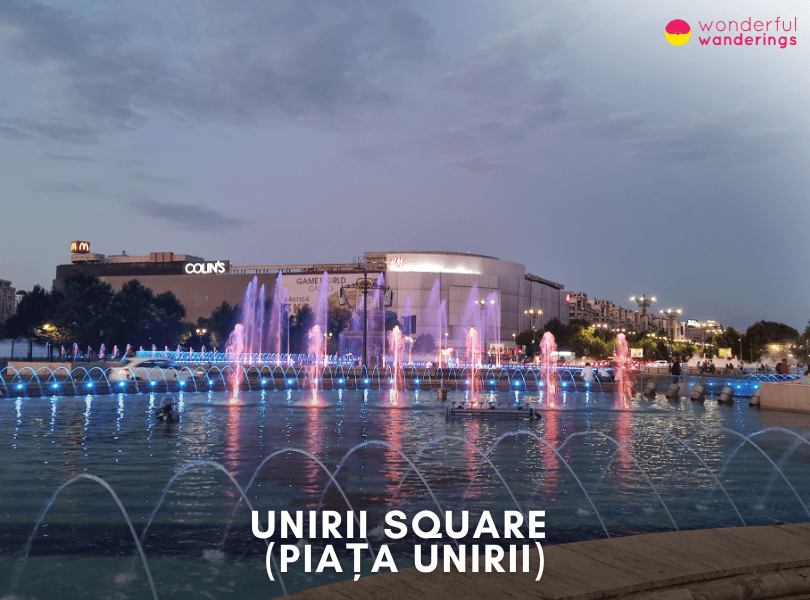
3. Tailors' Tower (Turnul Croitorilor)
The Tailors' Tower (Turnul Croitorilor) is a medieval tower located in Unirii Square, Cluj-Napoca, Romania. The address is Piața Unirii 27, Cluj-Napoca 400001. It was built in the 15th century as part of the city's fortifications. The tower gets its name from the tailors' guild, which owned the building in the Middle Ages. The tower has seven floors and is approximately 35 meters high. It has Gothic windows and loopholes. The tower has served as a fire lookout, housed a pharmacy and been used as student housing. It underwent restoration in the 1970s.
Visitors can admire the medieval Gothic architecture of the tower. The Tailors' Tower is located in Unirii Square and can be accessed on foot or by local transportation. There is no admission fee to view the tower exterior.
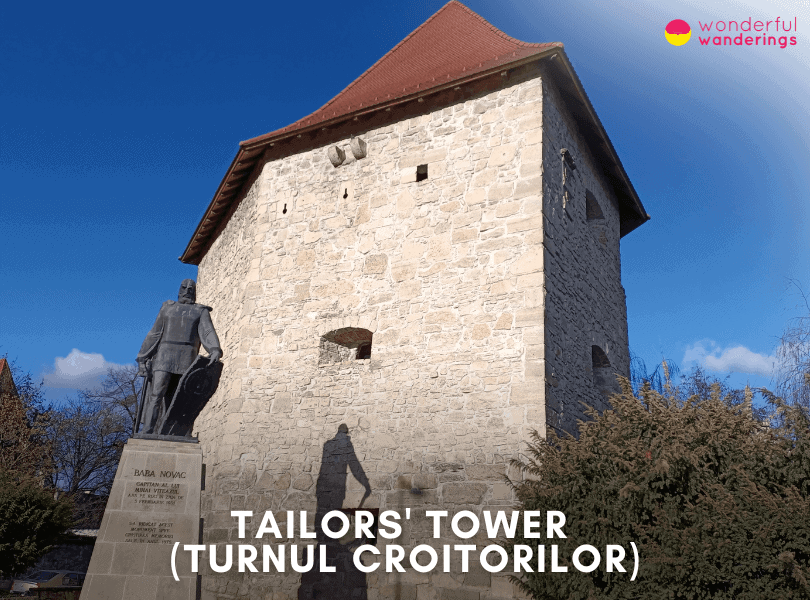
4. Ethnographic Museum of Transylvania (Muzeul Etnografic al Transilvaniei)
The Ethnographic Museum of Transylvania (Muzeul Etnografic al Transilvaniei) is located at 21 Memorandumului St, Cluj-Napoca 400020, Romania. The museum was established in 1922 and has over 40,000 artifacts related to Romanian peasant culture and life in Transylvania. The museum is housed in an 18th-century Baroque palace. Exhibits showcase folk art, costumes, ceramics, icons, furniture, tools and other traditional objects. There are both permanent and temporary themed exhibitions. The museum has a library and photo archive and hosts cultural events. There is a souvenir shop on site.
Visitors can view the exhibits to learn about Romanian culture in Transylvania. The museum can be reached by public transportation and has paid admission. It is suitable for adults and older children interested in cultural history.
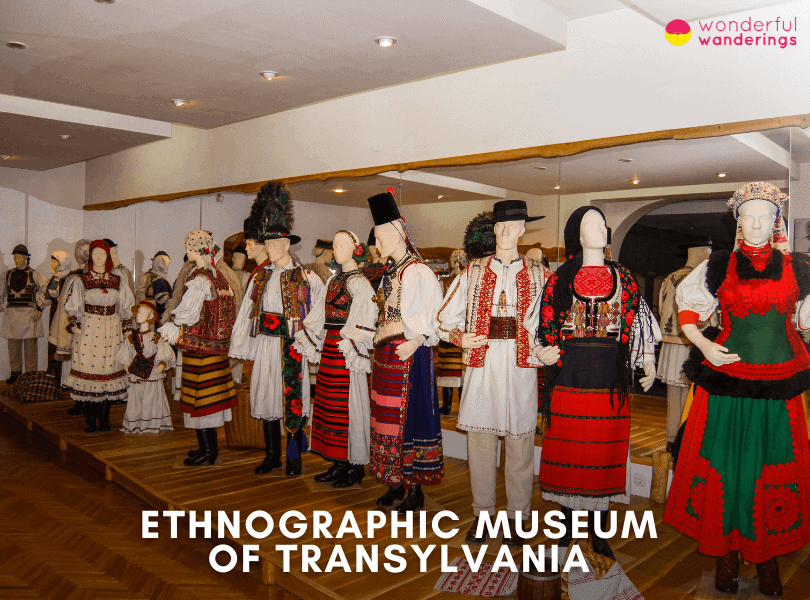
5. Central Park Simion Bărnuțiu (Parcul Central Simion Bărnuțiu)
Central Park Simion Bărnuțiu, known as Parcul Central Simion Bărnuțiu or Parcul Mare, is a large urban park located in downtown Cluj-Napoca, Romania, along the southern banks of the Someșul Mic River. Central Park is one of the main green spaces in Cluj-Napoca's city center. It covers approximately 13 hectares. The park has a history dating back over 185 years, with the land being rented in 1827 to create a recreational area. It opened to the public in the 1830s.
Visitors to the park can go for walks, relax on benches, rent pedal boats, play sports, attend events or enjoy the natural scenery. It provides an oasis from the bustling city. Central Park is open 24 hours a day year-round and admission is free. It's a popular spot for both tourists and locals in Cluj-Napoca. The park sees the most foot traffic during warm weather months when its paths, lake and beer garden are most utilized.
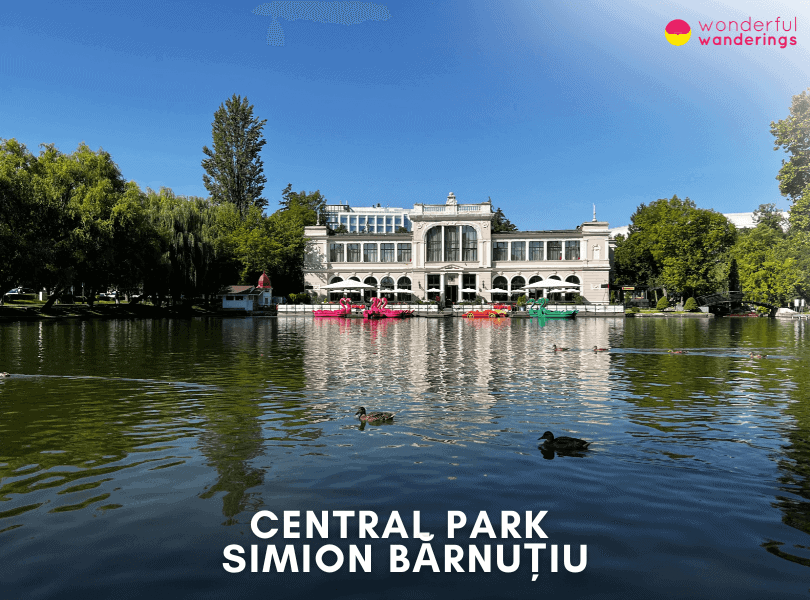
6. Alexandru Borza Botanical Garden (Grădina Botanică Alexandru Borza)
The Alexandru Borza Botanical Garden is located in Cluj-Napoca, Romania at 42 Republicii Street. It was established in 1872 by the Transylvanian Society for Natural Sciences as the Botanical Garden of the University of Cluj. The garden is named after the Romanian botanist Alexandru Borza, who was the garden director in the early 20th century. The botanical garden covers over 14 hectares and contains over 10,000 plant species from around the world, making it one of the richest botanical gardens in southeast Europe. It has a systematic department organized by plant family, an ecological department displaying plants by habitat, a medicinal plant section and a Japanese garden in the traditional gyo-no-niwa style. The garden houses a botanical museum with over 39,000 items related to botany.
Some key attractions in the garden include the Japanese Garden with its artificial lake and traditional Japanese elements, the systematic department showcasing diverse plant families and the palm house containing tropical and subtropical species. Visitors can stroll through the various themed gardens, visit the museum or simply relax and enjoy the natural beauty. The garden provides an oasis of greenery and tranquility within the city. The botanical garden is open Tuesday to Sunday from 10 am to 8 pm in summer and 10 am to 5 pm in winter.
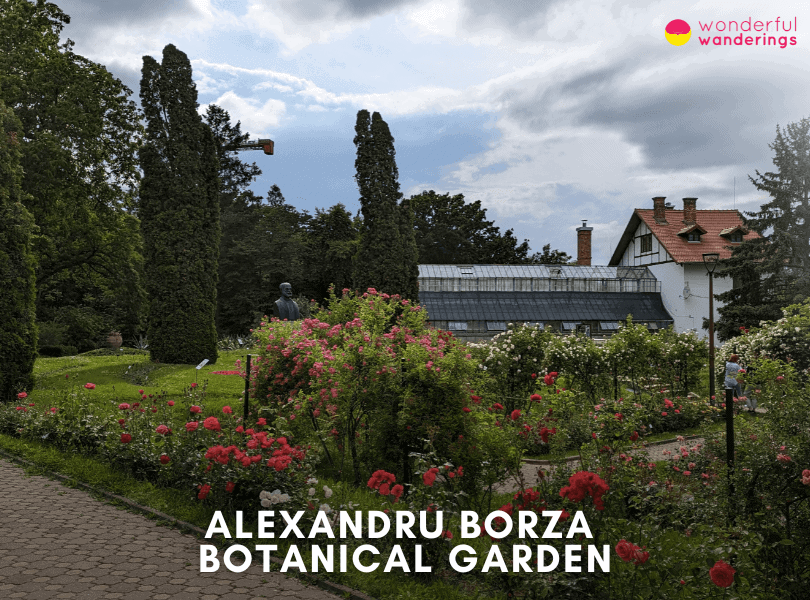
7. Cetățuia Park (Parcul Cetățuia)
Cetățuia Park is located in Cluj-Napoca, Romania on Cetățuia Hill at 1 Calea Moților. The park sits on the site of an 18th-century Habsburg fortress, built between 1715 and 1735, that gave the hill and park their name. The fortress was designed by architect Giovanni Morando Visconti in a star shape with surrounding bastions; today, only parts of the original fortress walls, four buildings and two entrance gates remain. The hilltop offers panoramic views over Cluj-Napoca and is one of the city's most popular tourist attractions. Two years after the death of Empress Elisabeth (Sissi), the hill was turned into a public park.
Key features of the park include the remains of the old fortress walls and buildings, the Heroes of the Nation Monument honoring martyrs of the 1848 revolution, outdoor fitness equipment, a children's playground, walking paths and the Belvedere Hotel's panoramic terrace. The park offers opportunities for walking, admiring the views, letting children play and accessing the hotel's restaurant and bar. It attracts families, tourists and anyone wanting to enjoy the outdoors with a beautiful vista of the Someșul Mic Valley. The park can be reached via a winding walking path with 300 steps leading up the hill. There is no admission fee to enter Cetățuia Park itself, though the hotel's facilities are privately owned. The park is open daily from 7 am to midnight and is easily accessible by car, public transport or on foot from Cluj-Napoca's city center.
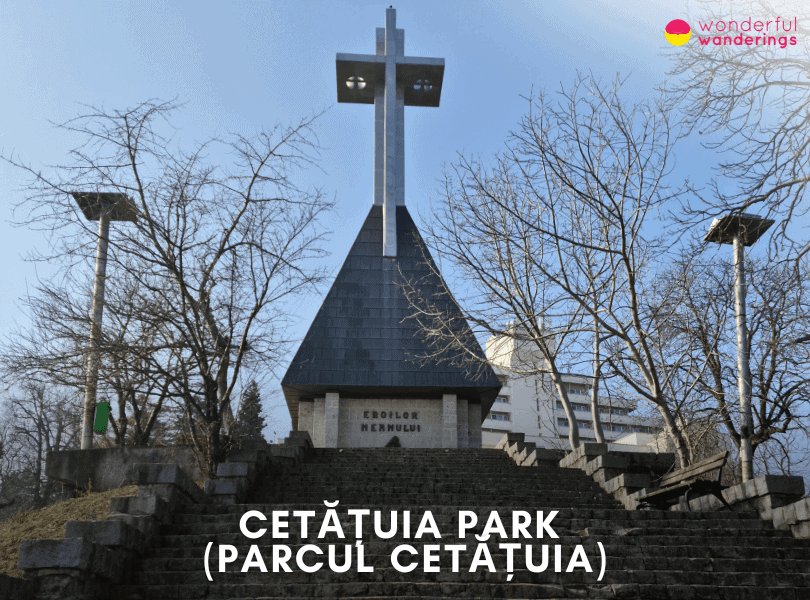
8. Assumption Cathedral (Catedrala Adormirea Maicii Domnului)
The Assumption Cathedral is Cluj-Napoca, Romania's most famous Romanian Orthodox church. It was built in a Romanian Brâncovenesc architectural style, combining Renaissance and Byzantine elements and is located in Avram Iancu Square. The Assumption Cathedral is considered a landmark of Cluj-Napoca and is known for its Romanian Brâncovenesc architectural style, which synthesizes Renaissance and Byzantine elements. Its prominent location and architecture make it one of the most recognizable buildings in the city.
Visitors can admire the cathedral's ornate interior and exterior architecture, attend religious services, light candles and view the cathedral's collection of religious art, icons, manuscripts and objects. The cathedral is suitable for visitors of all ages and backgrounds who want to view the architecture and art or attend religious services. Entrance to the Assumption Cathedral is free and open to the public during visiting hours.
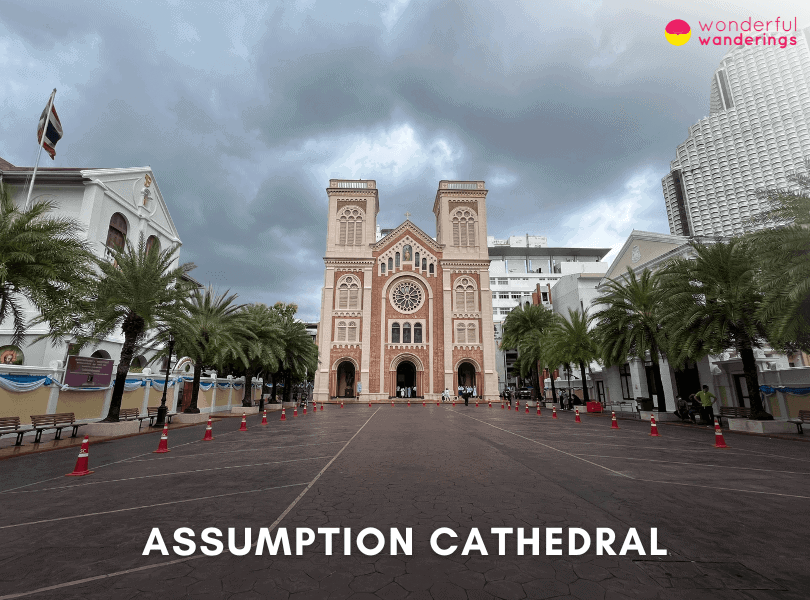
9. Avram Iancu Square (Piața Avram Iancu)
Avram Iancu Square is a central plaza located in Cluj-Napoca, Romania. It is named after the 19th-century Transylvanian Romanian lawyer and revolutionary Avram Iancu. The square features prominent landmarks like the Assumption Cathedral, Palace of Justice, Lucian Blaga National Theater and statues of Avram Iancu and Matthias Corvinus. Its central location makes it a popular gathering place.
Visitors can relax in the square, view the surrounding landmarks and architecture, visit the adjacent museums and attractions, attend cultural events or dine at one of the many nearby cafes and restaurants. The square appeals to all types of visitors interested in architecture, culture, history or just experiencing the atmosphere of the city center. It is suitable for both adults and families. There is no admission cost to enter Avram Iancu Square.
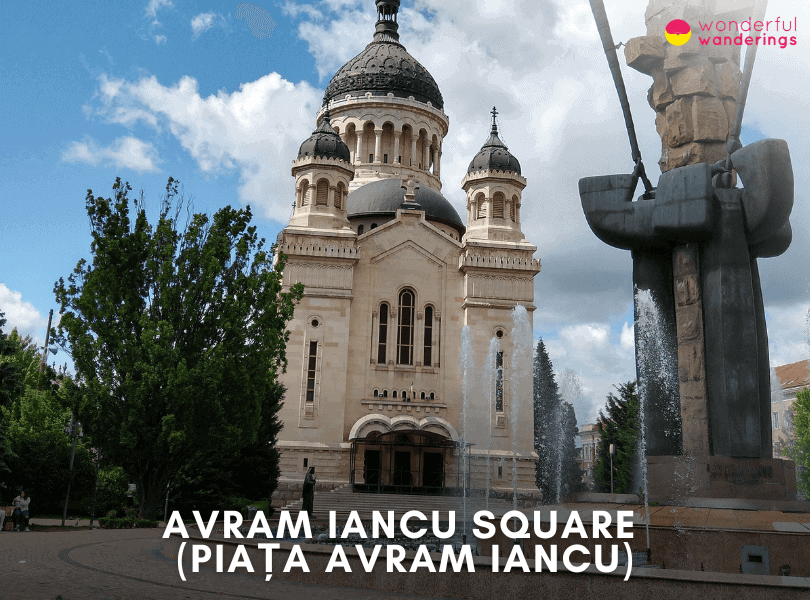
10. John the Baptist Orthodox Church in Cluj-Napoca
The John the Baptist Orthodox Church is located in the central area of Cluj-Napoca, Romania. It was built between 1923 and 1933 in the Byzantine architectural style. The church has a rectangular shape and five domes. The interior is beautifully decorated with Byzantine-style paintings and icons. Notable features include the ornate iconostasis separating the nave from the sanctuary and the many icons displayed on the walls.
The church regularly holds Orthodox services and is open to visitors outside of service times. Visitors can light candles, pray quietly or admire the beautiful architecture and paintings. Guided tours may be available upon request. Visitors can light candles, pray, attend a service, admire the icons and paintings and take photos. There is no admission fee to enter. The serene atmosphere makes it a nice spot for anyone interested in Orthodox architecture, art and culture.
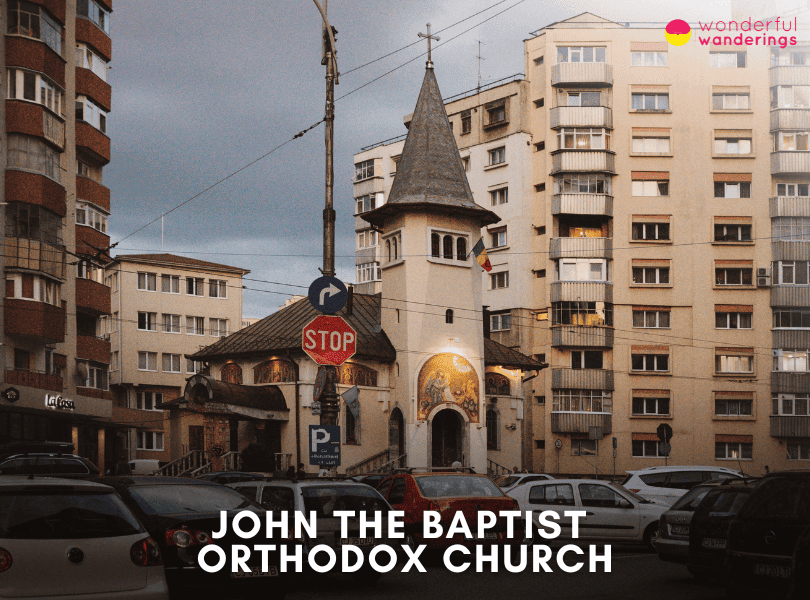
11. Romanian National Opera (Opera Națională Română)
The Romanian National Opera in Cluj-Napoca was founded on September 18, 1919, simultaneously with the National Theater and the Music Academy. It is housed in an ornate building constructed 1904-1906 in a Baroque-Secessionist style by the Viennese architects Fellner & Helmer.
The opera hall seats 928 and has excellent acoustics. The opera has staged over 200 titles from the international repertoire as well as over 40 Romanian works. It has a reputation as an important training ground for young singers, many of whom have gone on to international careers like Angela Gheorghiu. Visitors can attend performances or arrange guided backstage tours on non-performance days to view the sets and costumes and learn about the opera's history.
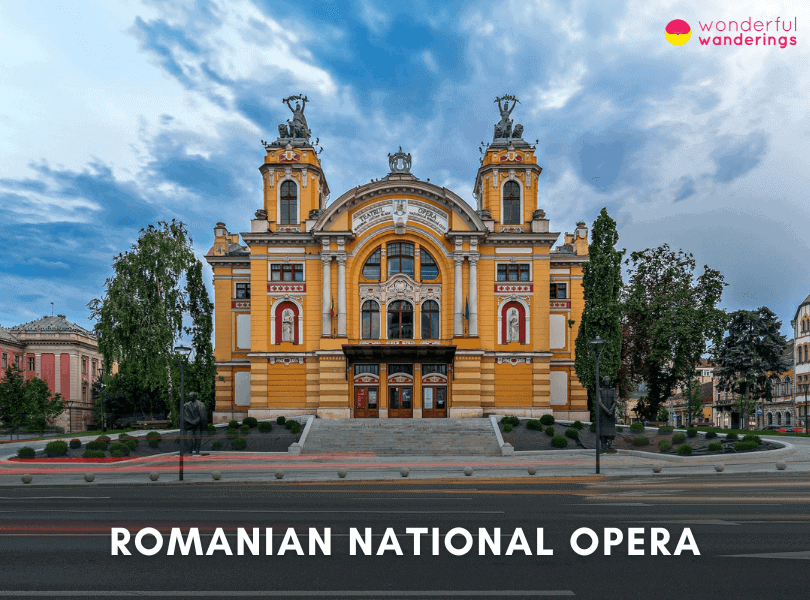
12. Matthias Corvinus House (Casa Matei Corvin)
The Matthias Corvinus House is a 15th-century Gothic building with Renaissance elements located in the city center of Cluj-Napoca, Romania, at Matei Corvin Street No. 4. It was built between 1474-1480 as a residence for King Matthias Corvinus of Hungary during his visits to the city. The interior of the Matthias Corvinus House contains various lavishly decorated rooms like the Knights' Hall, Music Room and Summer Dining Room with ornate chandeliers, carved wooden furniture and frescoed walls. Today, the building operates as a history museum displaying artifacts from medieval Transylvania.
Visitors can take guided tours to see the well-preserved interior and learn about King Matthias Corvinus's life. Temporary exhibitions and cultural events are held at the house. The Matthias Corvinus House is accessible by public transportation, located a short walk from central Lucian Blaga Square. It is an ideal activity for adults and older children interested in medieval history, architecture and art. Admission is 10 RON for adults and 5 RON for students.
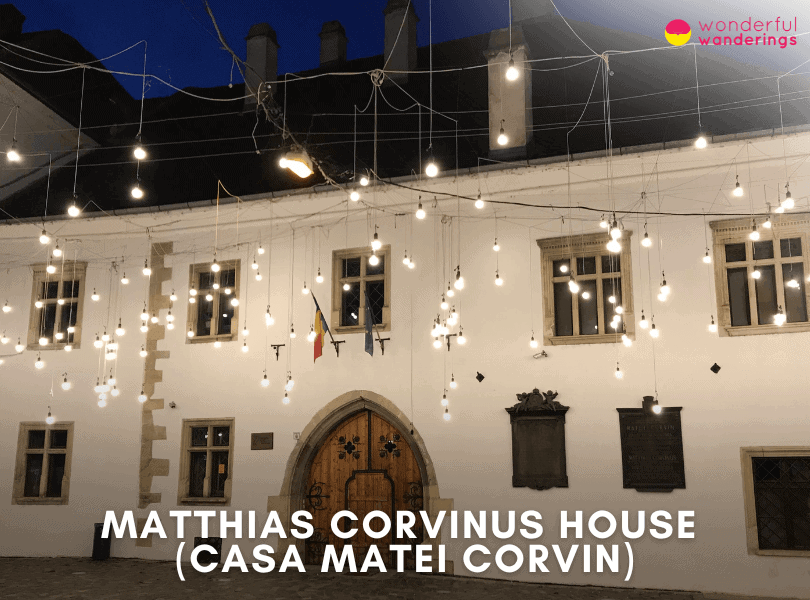
13. Turda Salt Mine
The Turda Salt Mine is an impressive underground labyrinth of tunnels stretching over 249 km beneath Turda, Romania, around 30 km from Cluj-Napoca. Mining activity at the site dates back to the 12th century. The salt mine opened as a tourist attraction in 1992. Visitors descend over 400 feet on a wooden elevator into the Unirea section of the mine. Attractions include an underground amusement park, mini-golf course, Ferris wheel, rowboat rides on an underground lake and a spa.
There are museums with interactive exhibits on the history of salt mining. Guided tours are available to see the Great Collapse Chamber, Iosif Mine and Rudolf Mine. The constant 50°F temperature and purified air provide natural relief for respiratory illnesses. Over 1 million tourists visit the Turda Salt Mine annually.
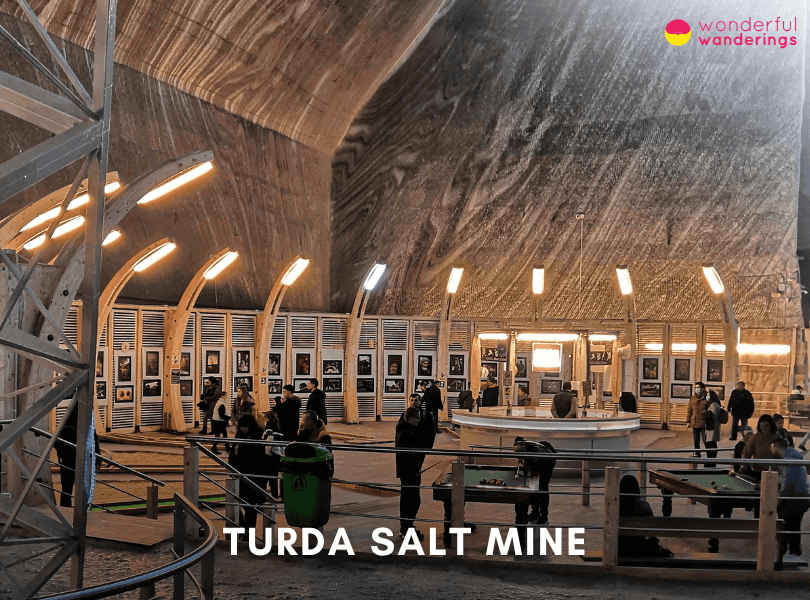
14. Steampunk Transylvania
Steampunk Transylvania is a steampunk and fantasy museum located in Cluj-Napoca, Romania. It is a unique museum that combines elements of 19th-century industrial steam-powered machinery with science fiction and fantasy. The museum spans two floors and features steampunk art installations, sculptures and gadgets created by artists. Some highlights include a time machine, steampunk weapons like a flamethrower and lightsaber, an alchemy lab, a steampunk x-ray machine and more. Visitors can interact with many of the exhibits.
Visitors can view and interact with the steampunk art installations and gadgets, walk through fantasy environments like an enchanted forest, see a secret library and hidden room, play retro video games, try on steampunk costumes and more. Guests can chat with the museum staff to learn the stories behind the exhibits. Steampunk Transylvania appeals to both kids and adults interested in science fiction, fantasy, art, imagination and interactive museums. Families, tourists, artists and steampunk fans will enjoy a visit.
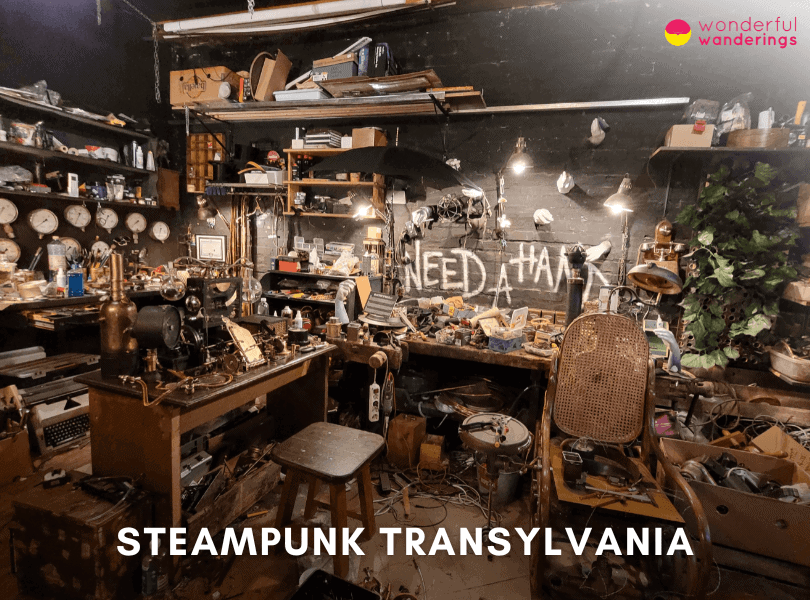
Muzeon is an open-air sculpture park and museum located in Moscow, Russia along the Moskva River. It covers 60 hectares and features over 700 sculptures dating from the early 20th century to today. The park contains works by renowned Russian artists like Vera Mukhina, Ernst Neizvestny, Dmitry Shorin and many others. Visitors can take a stroll and view a variety of sculpture styles, from Soviet realism to contemporary abstract pieces. Notable sculptures include Mukhina's iconic Worker and Kolkhoz Woman, Neizvestny's The Tree of Life and Shorin's sculptural chess set. In addition to the outdoor collection, Muzeon has indoor gallery spaces that house temporary exhibitions focused on 20th-century Russian art. Special programs like lectures, film screenings and festivals are held at the venue throughout the year.
Visitors can explore the sculpture park on foot, view over 700 works of art spanning styles and eras, relax in the garden areas, attend cultural events hosted at the venue and visit the indoor gallery spaces to see temporary exhibitions. Guided walking tours are available as well. The sculpture park and museum appeal to adults and kids interested in art, Russian culture and history. It is educational for school groups and enjoyable for families, tourists and residents.
Entry to the Muzeon Sculpture Park is free. There may be admission fees for special exhibitions inside the gallery spaces.
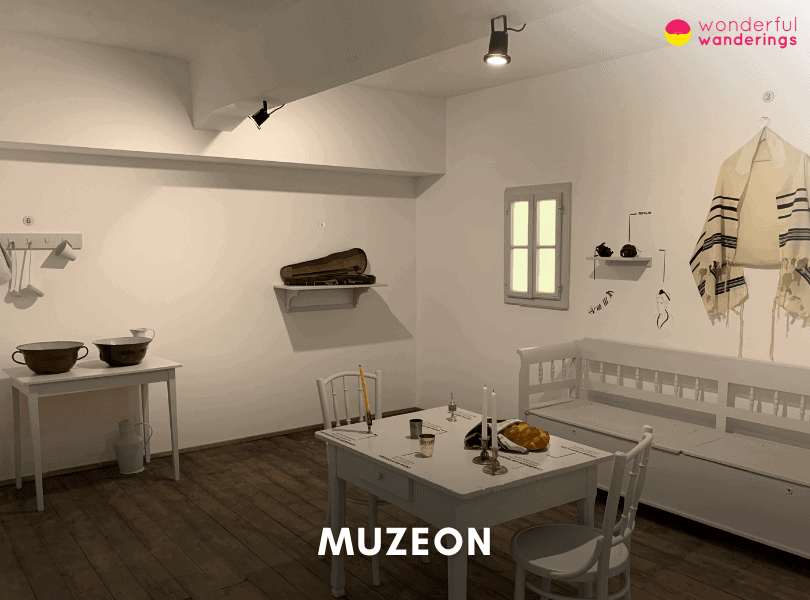
16. Pharmacy History Collection
The Pharmacy History Collection is in Cluj-Napoca, Romania, inside the historic Hintz House at 9 Eroilor Street near the Tailors' Bastion. This museum lies within the oldest operating pharmacy in Cluj, tracing its roots back over 500 years. The collection originated from objects gathered by Professor Iulius Orient and contains antique laboratory equipment, medicinal ingredients, original furnishings and documents chronicling the evolution of pharmacy practices. The museum's highlights include 16th-century albarellos, 19th-century measuring tools, the old wooden pharmacy counter and Orient’s library.
Visitors can take a free guided tour to view the historic interiors and learn about traditional healing methods. Some unusual remedies and ingredients on display include “crab eyes”, skulls and powdered mummies. The museum is best suited to pharmacy students and professionals interested in the evolution of pharmacy practices and medicinal history and general visitors interested in medical artifacts, traditional healing methods and Cluj's history. The Pharmacy History Collection offers a glimpse into Cluj’s medical past and early pharmacology.
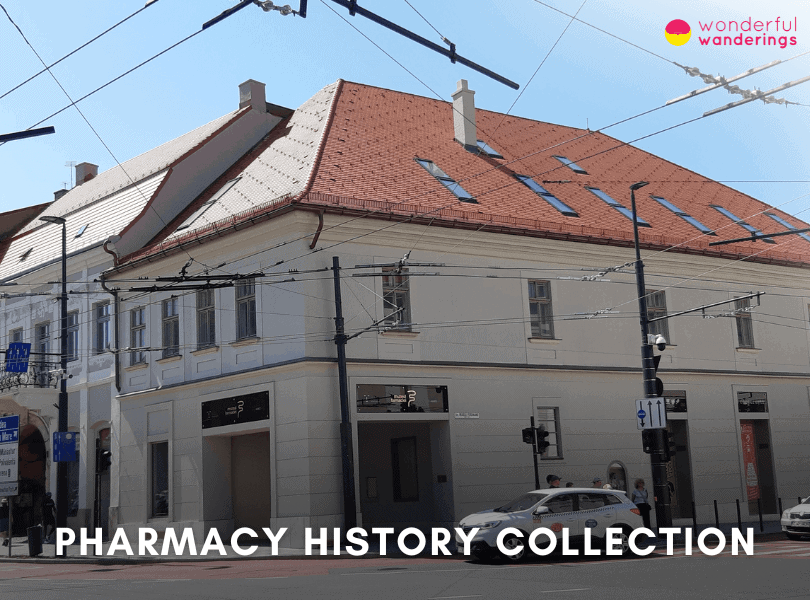
17. The Ethnographic Park (Parcul Etnografic National “Romulus Vuia”
The Ethnographic Park “Romulus Vuia” is an expansive open-air museum at 432-434 Memorandumului Street in Cluj-Napoca, Romania. It was the first ethnographic park in Romania with the aim of preserving traditional Romanian village architecture and culture from the 18th to 20th centuries. The park contains over 300 structures that provide an immersive look into rural life, including houses, barns, wells, technical installations, mills and workshops. Many of the buildings were transplanted from villages around the Transylvania region and reconstructed onsite. Highlights include the 18th-century Lenchic House, the 19th-century Ruges House and the old wooden church from Silivas village.
Visitors can also view exhibits of folk art, ceramics, costumes, tools and other artifacts. The sprawling park covers 50 acres, with walkways connecting the different areas. Guided tours are available, allowing visitors to learn about the diverse structures and past ways of life. The museum offers additional workshops, fairs and events to showcase Romanian folk crafts and traditions. Ethnographic Park is best for people of different ages and interests, especially families, students and cultural heritage tourists. It provides an engaging and educational way to explore Romania's past lifeways. The Ethnographic Park provides an immersive introduction to Romania's cultural heritage and history with its expansive collection of buildings, artifacts and activities.
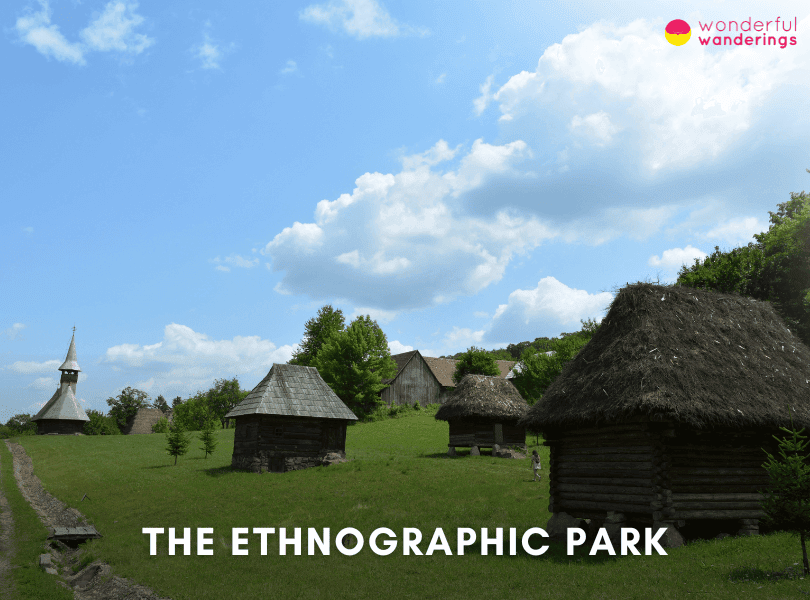
What are the best museums to visit in Cluj-Napoca?
Listed below are the best museums to visit in Cluj-Napoca.
- National Museum of Transylvanian History. The National Museum of Transylvanian History is located in the center of Cluj-Napoca. It houses artifacts and treasures that showcase the history and culture of Transylvania, with collections covering archaeology, medieval history, modern history and ethnography. Visitors can see Thracian gold treasures, medieval weapons, folk costumes and more. The museum building itself features a modern glass facade integrated into a historic building.
- Ethnographic Museum of Transylvania. The Ethnographic Museum of Transylvania in Cluj-Napoca displays the Romanian people's traditional culture and folk art in Transylvania. It has over 40,000 artifacts related to agriculture, fishing, hunting, traditional costumes, ceramics, icons and religious art. The exhibits are spread throughout two buildings, the Reduta Palace in the city center and the Romulus Vuia Park on the outskirts.
- Pharmacy History Collection. Pharmacy History Collection in Cluj-Napoca's oldest pharmacy building from 1573. The museum showcases the history of pharmacy through tools, laboratory gear and old medicinal products. It provides a glimpse into early pharmaceutical practices and medical treatments.
- Museum of Art Cluj-Napoca. The Museum of Art Cluj-Napoca houses over 12,000 works by Romanian and international artists. It has a broad collection of paintings, sculptures, graphic art, decorative art and photography from the 15th century onwards. The exhibits are displayed in a historic palace in the city center.
- Aviation Museum. The Aviation Museum in Cluj-Napoca displays Romanian aircraft models from the early 20th century onwards. Highlights include replicas of the first planes to fly in Romania, as well as models actually used in World War II. There are exhibits on aviation history, rocket engineering and astronomy.
What are the best things to do in Cluj-Napoca with kids?
Listed below are the best things to do in Cluj-Napoca with kids.
- The Central Park (Parcul Central Simion Bărnuțiu). Central Park is located in the city center of Cluj-Napoca at Strada Cardinal Iuliu Hossu. It is a large public park founded in 1827 that serves as a recreational space for residents and visitors. Kids can enjoy playgrounds, paddle boats to ride around the small island on the lake, outdoor gym equipment to play on, areas to play sports like basketball or just walking around surrounded by nature. Admission is free.
- The Ethnographic Park (Parcul Etnografic National “Romulus Vuia”). The Ethnographic Park is an open-air museum located at Strada Taietura Turcului in Cluj-Napoca, about a 10-minute drive or 40-minute walk from the city center. It features traditional Romanian village houses, workshops like pottery and blacksmith facilities, wooden churches and more that kids can explore to learn about Romanian rural life.
- The Cluj-Napoca Botanical Garden (Grădina Botanică “Alexandru Borza”). The Cluj-Napoca Botanical Garden spans 14 hectares in central Cluj-Napoca at Strada Republicii. It houses around 10,000 species of plants from around the world for kids to discover. Notable attractions include the Japanese Garden, greenhouse with tropical plants, rosarium and Roman Garden with a statue of the goddess Ceres.
- The Tailors' Bastion (Bastionul Croitorilor). The Tailors' Bastion in Cluj-Napoca serves as a cultural center with interactive exhibits for kids to enjoy. Kids can explore and learn about medieval history. General admission is free and special programs or events may have fees.
What are the best activities for a business traveler in Cluj-Napoca?
Listed below are the best activities for a business traveler in Cluj-Napoca.
- Attend a business event at the Cluj Arena. The Cluj Arena is the largest event venue in Cluj-Napoca, hosting conferences, exhibitions and other business events. With a capacity of over 30,000 people, major companies often utilize the arena for product launches, corporate meetings and networking events. It has excellent facilities for large-scale business gatherings.
- Work remotely from Impact Hub. Impact Hub is a popular co-working space located right in the heart of Cluj-Napoca. It offers private offices, meeting rooms, event spaces and hot desks in a modern environment. Business travelers can easily get work done here, with fast WiFi, printing services, free coffee and tea and opportunities to connect with the local startup community.
- Take a factory tour at Emerson or Bosch. Cluj-Napoca has attracted major international companies like Emerson and Bosch to open factories and operations centers locally. Many of these companies offer pre-arranged factory and office tours for visiting business professionals to showcase their operations. It is an interesting look into the city's business landscape.
- Attend a business networking event. Cluj-Napoca has an emerging startup and tech community. Frequent professional networking events, like those organized by ClujHub and Cluj IT Cluster, bring together entrepreneurs, investors and more. Attending these events allows business visitors to connect with potential partners.
- Enjoy the business facilities at a luxury hotel. Top hotels like Grand Hotel Italia Cluj and Hotel Napoleon offer excellent business amenities like meeting rooms, printing services, conference calls, translation services and more. Booking a room at one of these luxury hotels ensures easy access to support business needs.
Where is Cluj-Napoca?
Cluj-Napoca is located in the Someșul Mic River valley in northwest Romania , 323 kilometers (201 miles) from Cluj-Napoca, 350 kilometers (218 miles) from Budapest, Hungary and 321 (200 miles) from Belgrade, Serbia. It sits roughly equidistant from those three major cities in the historical region of Transylvania.
What is the history of Cluj-Napoca?
Cluj-Napoca has a long history, having been part of many empires and kingdoms over time, including the Roman Empire, the Hunnic Empire, the Kingdom of Hungary, the Austrian Empire and modern Romania. The area was settled in antiquity and was home to the Dacian settlement of Napoca. The Romans conquered Dacia in 106 CE and founded the city of Napoca. It was an important Roman outpost for centuries. The area changed hands many times before becoming part of the Kingdom of Hungary in the Middle Ages. Cluj served as the capital of the Grand Principality of Transylvania from 1790 to 1848 and from 1861 to 1867. Cluj continues to be an important economic, academic and cultural center in Romania.
What language is spoken in Cluj-Napoca?
The primary languages spoken in Cluj-Napoca are Romanian and Hungarian. Romanian is the official language of Romania and the native language of most residents. Cluj-Napoca sits in a historical Transylvania with a large ethnic Hungarian minority population. Many residents of Cluj-Napoca speak Hungarian as their first language. The city has a small German-speaking population. Romanian, Hungarian and German are the main languages used in the city.
What time zone is Cluj-Napoca in?
Cluj-Napoca and all of Romania are located within the Eastern European Time Zone. Cluj-Napoca falls under Eastern European Time, 2 hours ahead of Coordinated Universal Time (UTC). Cluj-Napoca uses EEST (UTC/GMT +3 hours) in the summer months and EET (UTC/GMT +2 hours) in the winter months each year.
How many people live in Cluj-Napoca?
Cluj-Napoca has a population of 324,576 people as of 2023, with 156,238 men and 168,338 women living in the city. There are 53,000 children under the age of 18, making up 16% of the population. The majority of residents are of working age, between 18-65 years old, numbering around 217,000 people or 67% of the total. There are 54,000 elderly over the age of 65, comprising 17% of Cluj-Napoca's inhabitants.
What are the most interesting facts about Cluj-Napoca?
Listed below are the most interesting facts about Cluj-Napoca.
- Currency. The currency used in Cluj-Napoca and all of Romania is the Romanian Leu (plural form is Lei). Romania is not part of the Eurozone, so Euros are generally not accepted except at some tourist-oriented businesses. Local currency is needed for most transactions.
- Time Zone. Cluj-Napoca is located in the Eastern European Time Zone, which is 2 hours ahead of Greenwich Mean Time (GMT+2) and 7 hours ahead of U.S. Eastern Standard Time. Daylight Savings Time is observed from the end of March to the end of October, temporarily putting Cluj-Napoca 1 hour ahead (GMT+3) during summer.
- Language. The official language is Romanian, which belongs to the Romance language family (as a descendant of Latin) and is the native language of over 90% of Cluj-Napoca's residents. English and German have a strong prevalence as second languages in Cluj-Napoca, especially in central areas. Some basic Romanian phrases are still helpful to know.
- Power Plugs. Power sockets in Cluj-Napoca and all of Romania are Type F, which have two round pins, similar to most European countries. The standard voltage is 230 V. Travelers from America will need power converters and adapters for U.S. plug types. Many modern devices have built-in voltage converters, but power adapters are still needed to fit Romanian outlets. Checking devices' input voltage/frequency compatibility is recommended.
How many days are needed to see Cluj-Napoca?
It is recommended to stay for three days, which is enough time to see the highlights of Cluj-Napoca. Spending three days allows visitors to explore the top sights like Central Park, St. Michael's Church, the museums, Old Town, etc., as well as have time for day trips to nearby places like Turda Salt Mine. Three days provide enough time to get a good sense of what Cluj-Napoca has to offer without feeling rushed.
Is Cluj-Napoca worth visiting?
Yes, Cluj-Napoca is worth visiting. Cluj-Napoca offers medieval Old Town architecture, lively cafes and restaurants, museums and a thriving cultural scene with concerts, theaters and festivals. The Gothic St. Michael's Church and stately Banffy Palace are two of the architectural highlights of Cluj-Napoca. Cluj has a youthful, energetic vibe. The city is surrounded by hills and forests, providing a nice base for outdoor activities.
Is Cluj-Napoca expensive to visit?
No, a trip to Cluj-Napoca can be very affordable compared to most other European destinations. Budget hotels, hostels and apartments provide cheaper accommodation than other Romanian or Western European cities. Public transportation, taxis, food and entertainment are reasonably priced. Museums, churches, parks and wandering the old town can keep costs low while sightseeing. Budget-conscious travelers have no trouble finding bargains in dining, lodging, attractions and shopping around Cluj-Napoca.
Is Cluj-Napoca safe to visit?
Yes, Cluj-Napoca is very safe to visit. It is one of Romania’s most popular tourist destinations. The city has low crime rates and is considered safe for travelers. Violent crime is rare in Cluj-Napoca. Tourist areas like the historic Lipscani district and Old Town are heavily frequented and considered safe. Cluj-Napoca's city center and attractions are well-lit and have a visible police presence. Basic precautions like being aware of your surroundings, not leaving belongings unattended and avoiding poorly lit areas at night will ensure your visit to Cluj-Napoca is trouble-free. Cluj-Napoca is safer than most European cities of its size and tourists will feel comfortable visiting.
Is Cluj-Napoca easy to visit with kids?
Yes, Cluj-Napoca is easy to visit with kids. Cluj-Napoca is a family-friendly city to visit with children. Many hotels allow kids to stay for free or at discounted rates. Attractions like the Botanical Garden, open-air Village Museum and Zoo are big hits with little ones. Bakeries and cafes typically welcome children. The pedestrian streets in the old town allow for casual strolling without traffic worries. Cluj-Napoca is generally a safe, low-crime environment, which means parents can relax while enjoying the views.
What is Cluj-Napoca famous for?
Cluj-Napoca is famous for its lively festival scene, thriving nightlife dominated by bars and clubs and gothic architecture exemplified by St. Michael's Church in the historic center. Secondly, Cluj-Napoca is an important educational hub, home to over ten universities and a large student population. Many major IT and technology companies have offices in the city, earning it the nickname “Silicon Valley of Transylvania”. Lastly, Cluj is famous as it has hosted concerts by international stars like Metallica and Elton John.
What are the most important people born in Cluj-Napoca?
Listed below are the most important people born in Cluj-Napoca.
- Matthias Corvinus (1443-1490). King of Hungary and Croatia, who expanded the kingdom through military campaigns. He was born to John Hunyadi on Saturday, February 23, 1443, in Cluj-Napoca, Romania. He promoted Renaissance culture and humanism and created one of Europe's largest libraries, the Bibliotheca Corviniana. He died on Wednesday, April 6, 1490.
- George Emil Palade (1912-2008). George Emil Palade is a cell biologist who won the 1974 Nobel Prize in Physiology or Medicine for his discoveries on ribosomes and organelles in cells. His work formed the basis of modern molecular cell biology. He was born in Cluj-Napoca on Friday, November 19, 1912 and died on Tuesday, October 7, 2008.
- Ion Luca Caragiale (1852-1912). Ion Luca Caragiale was an Influential playwright and author considered the father of Romanian national theater. His satirical plays criticized social issues in Romania and remain classics of Romanian literature. He was born on Monday, January 30, 1852, in Haimanale, near Cluj-Napoca and died on Sunday, June 9, 1912.
- Emil Racovita (1868-1947). Emil Racovita is a biologist and polar explorer who led expeditions to Antarctica. He made important contributions to biology and zoology through studies of Antarctic fauna and cave organisms. He was born in Cluj-Napoca on Friday, November 15, 1868 and died on Tuesday, November 17, 1947.
What to eat in Cluj-Napoca?
Listed below are what you can eat in Cluj-Napoca.
- Varza a la Cluj (Cluj Cabbage). Varza a la Cluj is a cabbage dish with minced meat, sour cream and herbs. It is a specialty food of the Cluj-Napoca region, popular across Romania. It dates back to the 17th century and is considered one of the most iconic dishes to try when visiting the city. This cabbage is one of the best food to eat in Romania.
- Mici. Mici is called “mititei” in Romanian. Mici are grilled skinless sausages normally made from a zesty blend of ground pork, beef and lamb before being served alongside spicy mustard, crusty bread or crispy fries. Mici is a popular food and is served at most markets in Cluj-Napoca.
- Plăcintă. Plăcintă is a crispy, flaky Romanian pastry that encases fillings like tangy cheese, savory minced meat, fresh fruit or sweetened cocoa paste before being baked or fried to golden perfection. Plăcintă is a delicacy for visitors to try in Cluj-Napoca.
- Ciorba. Ciorba refers to sour Romanian soups like silky tripe stew, hearty bean and smoked meat soup, always paired with vinegar or lemon wedges, cooling sour cream and crusty bread on the side. Ciorba is a popular soup served at restaurants in Cluj-Napoca.
- Papanasi. Papanasi are sweet, fried Romanian doughnuts stuffed with fresh white cheese, fruit jam and lightly sweetened sour cream. Papanasi is a popular finger food in Cluj-Napoca markets.
What are the best places to eat in Cluj-Napoca?
Listed below are the best places to eat in Cluj-Napoca. restaurants to eat in Cluj-Napoca.
- Casa Dacilor. Casa Dacilor serves very large portions of hearty traditional Romanian dishes meant for sharing, like grilled meats with polenta. The restaurant is known for extremely generous dishes and authentic cuisine. The decor encapsulates the traditional Romanian style with rustic wooden furniture and local cultural motifs. Many describe the food as very good and one of the best restaurants to eat in Cluj-Napoca.
- Zama. Zama offers modern interpretations of classic Romanian fare, like soups, stuffed cabbage rolls and grilled meats. Zama provides a contemporary dining atmosphere in the heart of the city. Their stylish interior design and friendly service give a relaxed yet lively ambiance while you enjoy creative updates to traditional dishes.
- Roata. Roata specializes specifically in Transylvanian and greater Romanian cuisine. This restaurant is beloved for staples like cabbage dishes, bean soups, grilled meats and fried sweet cheese pastries. The cozy, rustic interior and fair prices provide a comfortable, unpretentious place to sample authentic local flavors.
- Tokyo. Tokyo is considered the top sushi restaurant in Cluj-Napoca. It serves exceptionally authentic Edomae-style sushi and Japanese cuisine with white-glove service in an elegant dining room. The refined cuisine and polished hospitality make it a destination for fine Japanese dining in the city.
- Samsara Foodhouse. Samsara Foodhouese offers a diverse and creative vegetarian and vegan menu with globally inspired dishes like soups, curries, pasta and more. The relaxing, chic ambiance and lovely patio create a sophisticated yet welcoming atmosphere in which to enjoy their meatless cuisine.
What are the best areas to stay in Cluj-Napoca?
Listed below are the best places to stay in Cluj-Napoca.
- City Center. The city center neighborhood is located right in the center of Cluj-Napoca. It is perfect for tourists who want to be close to the main attractions like St. Michael's Church, Union Square and museums. The area has a lively atmosphere with shops, restaurants and nightlife. This neighborhood is safe for solo travelers.
- Grigorescu. Grigorescu is a quiet, upscale residential neighborhood west of the city center. It is perceived as one of the safest and greenest areas in Cluj-Napoca, with lots of trees and parks. The area has great access to public transportation for exploring other parts of the city. It offers a mix of hotels, hostels and Airbnbs, perfect for any budget.
- Zorilor. Zorilor is located northwest of the city center and is home to many universities. The area is very lively and perfect for solo travelers. It is close to major attractions like St. Michael's Cathedral, National Theater and museums. Zorilor has affordable accommodation options for students and tourists.
- Manastur. Manastur is a residential area west of the city center, close to the Somesul Mic River. It is perceived as calm, green and ideal for families. The area is very safe for solo travelers. Manastur offers a range of hotels and apartment rentals suitable for any budget.
- Marasti. Marasti is a central neighborhood just south of the city center. It is a well-developed area with modern office buildings, shops, restaurants and cafes. There are nice hotels and apartment rentals in Marasti at affordable prices. The area is considered very safe for solo travelers.
What are the best accommodations to stay in Cluj-Napoca?
Listed below are the best accommodations to stay in Cluj-Napoca.
- Grand Hotel Napoca. The Grand Hotel Napoca is considered one of the top luxury hotels in Cluj-Napoca due to its central location, elegant decor and high-end amenities. Its proximity to attractions like St. Michael's Church and museums in the historic city center makes it one of the best hotels to stay in Cluj-Napoca.
- Hotel Victoria. Hotel Victoria is considered a top accommodation option for its modern amenities and proximity to attractions like Central Park and the Botanical Garden. Its 4-star service, air-conditioned rooms and central location help make it a go-to hotel in Cluj-Napoca.
- Hotel Agape. Hotel Agape is considered one of the best values in Cluj-Napoca for its cozy rooms and quiet location. The hotel's free parking, simple decor and proximity to the Somesul Mic River make it a top choice for tourists.
- Zen Hostel. Zen Hostel is regarded as one of the top hostels in Cluj-Napoca for its perfect location in the lively Zorilor neighborhood. Its affordability, social atmosphere and convenience for exploring the city help make it an ideal hostel option.
- Lol & Nori Boutique Hotel. Lol & Nori Boutique Hotel is considered a top boutique accommodation for its central location and stylish, modern rooms. Its contemporary decor, on-site restaurant and soundproofed rooms help make it a stand-out boutique choice.
How to get from Cluj-Napoca to Bucharest Henri Coandă International Airport?
There are a few ways to get to Bucharest Henri Coandă International Airport from Cluj-Napoca. These are by bus, car, taxi/rideshare, train and plane. Firstly, Direct bus services are available with multiple companies operating daily routes between the cities; the trip takes 8-9 hours to cover 360 kilometers (223 miles) with frequent departures. Secondly, driving 360 kilometers (223 miles) allows flexibility but can be tiring over 4-5 hours; costs include fuel, small tolls and airport parking fees. Thirdly, services like Uber offer door-to-door rides covering the distance in about 5 hours for a high cost of €91 ($100, £79) and above. Fourthly, direct trains from Cluj-Napoca to Bucharest's main station take 5-6 hours to cover the distance. Lastly, plane flights from Cluj-Napoca Airport to Bucharest take 1 hour to reach Bucharest International Airport.
How to get from Cluj-Napoca to Bucharest?
There are a few ways to get from Cluj-Napoca to Bucharest . These are by bus, train, car and plane. Firstly, buses provide affordable transport between the cities in 8-9 hours and have frequent daily departures. Secondly, the train takes 5-6 hours to cover the 360 kilometers (223 miles) distance between Cluj-Napoca and Bucharest's main station and has 1-2 limited daily departures. Thirdly, driving the distance allows flexibility but takes 4-5 hours; costs include fuel and tolls. Lastly, direct flights are available between the Cluj-Napoca and Bucharest airports, taking 1 hour with multiple daily options.
Where to go shopping in Cluj-Napoca?
There are several great places to go shopping in Cluj-Napoca. These are Iulius Mall, Platinia Shopping Center, Central Shopping Center and VIVO! Cluj-Napoca. Firstly, Iulius Mall opened in 2007, with over 200 shops, a food court, a hypermarket, a cinema complex and a skating rink. The mall features brands like Zara, Massimo Dutti, H&M and more. Secondly, Platinia Shopping Center, which features a modern glass facade, opened in 2017. The mall has shops, supermarkets, restaurants, casinos, international and local brands. Thirdly, the Central Shopping Center is one of the oldest shopping centers in the city. The mall has a variety of stores like clothing, shoes, toys, cosmetics and more. It has restaurants and game centers. Lastly, VIVO! Cluj-Napoca is a large shopping complex with over 160 shops alongside hypermarkets, cinemas, a food court and brands like Zara, C&A and Decathlon.
What festivals or events are taking place in Cluj-Napoca?
Listed below are the festivals or events that are taking place in Cluj-Napoca.
- Transylvania International Film Festival (TIFF). The Transylvania International Film Festival (TIFF) is one of the largest film festivals in Romania, showcasing international and Romanian films over the course of several days in late spring/early summer. Held annually since 2002, it features film screenings, workshops, panel discussions and networking events for industry professionals and film enthusiasts. The festival takes place at venues across Cluj-Napoca, centered around the National Theatre, Cinema Florin Piersic and outdoor screenings in Union Square. The festival attracts 100,000 attendees flocking to the city each year. TIFF brings an energetic and celebratory atmosphere while highlighting cinematic arts and culture. TIFF is one of the anticipated festivals in Cluj-Napoca.
- Untold Festival. The Untold Festival is a major four-day electronic music festival held annually in early August in Cluj-Napoca. The festival features some of the world’s top DJs and electronic music artists performing on multiple stages at the Cluj Arena stadium and venues throughout the city. Untold incorporates elaborate set designs, eye-catching art installations, dance competitions, gaming areas and other activities into the festive atmosphere.
- Electric Castle Festival. The Electric Castle Festival is a multi-genre music festival held annually at Bánffy Castle, located in Cluj-Napoca, in the village of Bonțida. Electric Castle incorporates art installations, technology-integrated designs and a variety of outdoor activities into the festival atmosphere. The festival offers a unique setting to enjoy music of all genres while taking in Transylvania's history and natural beauty with the medieval Bánffy Castle as a backdrop.
PIN FOR LATER
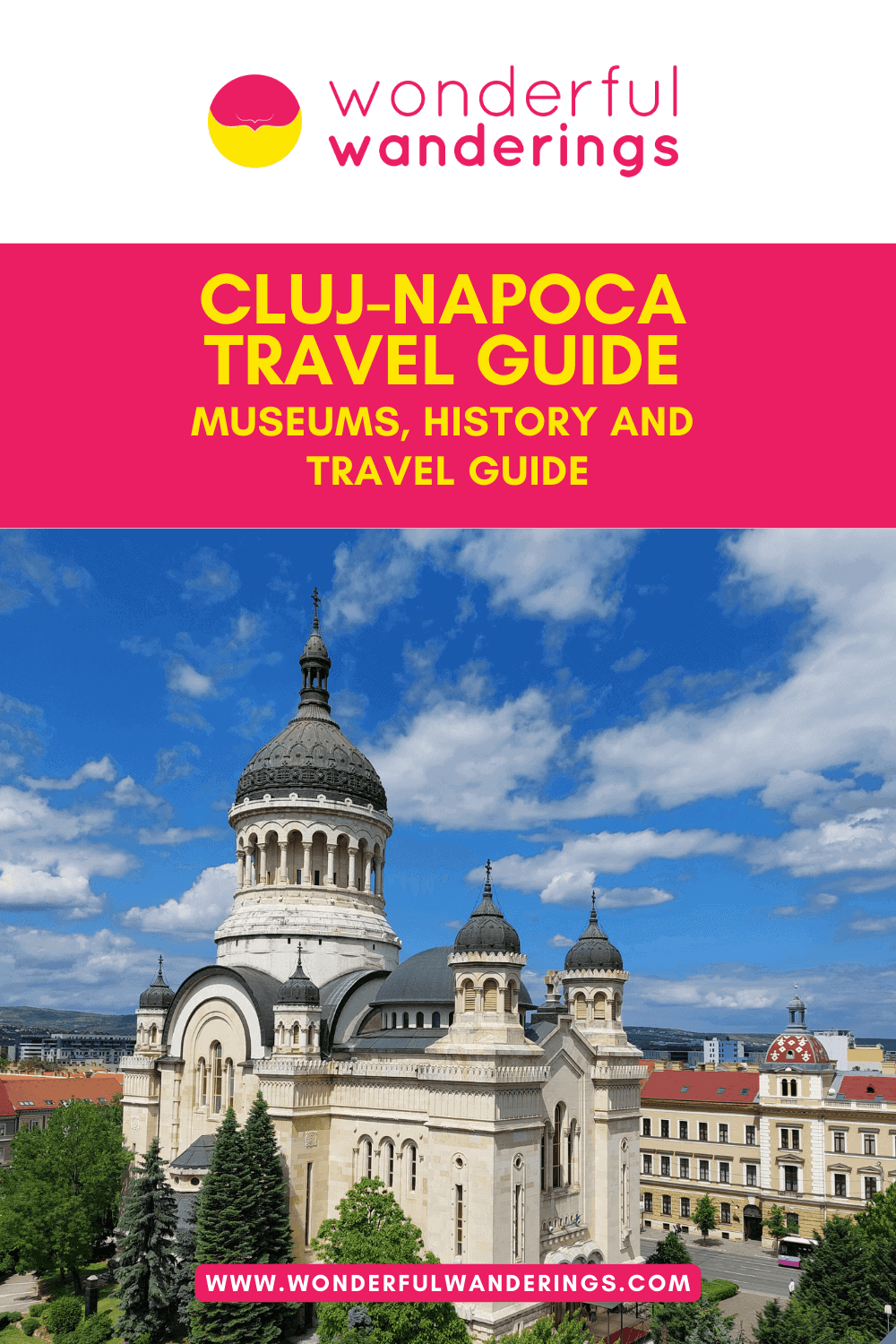
Find below the best posts about Romania.

16 Best Destinations in Romania to visit all year round!

19 Great Things to Do in Brasov, Museums, History and Travel Guide

18 Best Things to Do in Constanta: Museums, History and Travel Guide

17 Cool Things to do in Timisoara: Museums, History and Travel Guide

18 Top Things to do in Bucharest, Museums, History and Travel Guide

Celebrate Halloween in Romania on a 7-day Transylvania tour
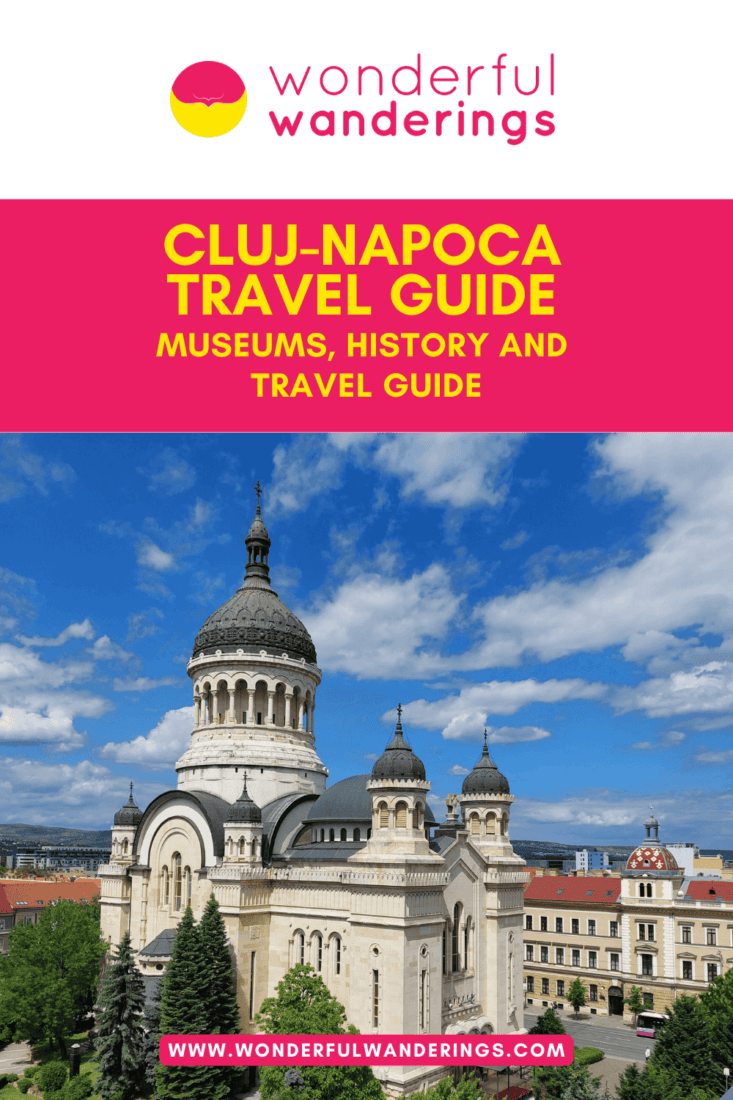
The editorial team at Wonderful Wanderings brings together travel experts with backgrounds in travel writing, web development and digital marketing. The team, through their collaborative effort, provides readers with relevant travel experiences and up-to-date digital content. The vast expertise within the team ensures an informative blend of travel stories and useful online travel guides and trip experiences, built on a foundation of both industry recognition and hands-on global adventures. Learn more about Wonderful Wanderings
Your email address will not be published. Required fields are marked *
Join 58,000+ other Wonderful Wanderers!
As an Amazon Associate I earn from qualifying purchases.
Must-see attractions in Cluj-Napoca

Fabrica de Pensule
Cluj-Napoca
More of a living, breathing creative space than a gallery, Fabrica de Pensule teems with just-made artwork by local and foreign creators who use this…

St Michael's Church
The showpiece of Piaţa Unirii is 14th- and 15th-century St Michael’s, the second-biggest Gothic church in Romania (after Braşov’s Black Church). Its neo…

Parcul Etnografic Romulus Vuia
Traditional architecture from around Romania has been faithfully reassembled at this open-air museum, 5km northwest of central Cluj. Most impressive is…
Pharmacy History Collection
Cluj-Napoca’s oldest pharmacy building holds an intriguing collection of medical miscellany. ‘Crab eyes’, skulls and powdered mummy are just a few of the…
Alexandru Borza Botanic Gardens
These wonderfully relaxing gardens comprise rockeries, neoclassical statues peeping from tangles of rose, and a Japanese-style garden with a crimson…
Statue of Matthias Corvinus
Hogging the limelight in front of St Michael’s Church is a bulky 1902 statue of horseback Matthias Corvinus, the famous 15th-century Hungarian king.
Hungarian Cemetery
Founded in the 16th century, this stately cemetery is a memorable place to stroll among elegant tombs and mausoleums of Transylvanian poets and composers,…
National Art Museum
The permanent collection of this sizeable gallery has creaky rooms featuring 18th- and 19th-century art, mostly portraits of nobles and their bewigged…
National History Museum of Transylvania
Within this museum of regional history you’ll discover Dacian artefacts, mostly from Sarmizegetusa’s archaeological sites, including glass blow pipes,…
Hungarian Reformed Church
Commissioned by the king of Hungary, Matthias Corvinus, in 1486, this church took more than 20 years to complete. Its interior seems spare at first glance…
Franciscan Church
On the eastern side of Piaţa Muzeului, the rosy, gilt-edged decor within this sanctuary is worth a peep; look up for trompe l’oeil frescoes.
Tailor's Tower
Rotating exhibitions of local art within this stone tower can be somewhat threadbare. But it’s still worth wandering inside this pointy-roofed former…
Ethnographic Museum of Transylvania
On the upper floor of a renovated neo-Gothic building, dating to the 16th century, find well-tended exhibitions on Romanian peasant life throughout the…
Matthias Corvinus House
A block south of the National History Museum is the birthplace of Matthias Corvinus, a 15th-century Hungarian king. This Gothic building is now the…
Metropolitan Museum
Housed beneath a gleaming white cathedral, this museum exhibits religious icons and other artwork.
Synagogue of Deportees
The late-19th-century synagogue on this spot was rebuilt and restored after WWII. Topped with silver onion domes, the Moorish-style building (closed to…
Statue of Baba Novac
A statue of Serbian revolutionary Baba Novac, who plotted against the Ottomans, stands outside the 15th-century Tailor's Tower.
Museum of Zoology
An encyclopedic collection of bottled, jarred and taxidermied specimens from butterflies to waterfowl.

34 Incredible Things to Do in Cluj-Napoca
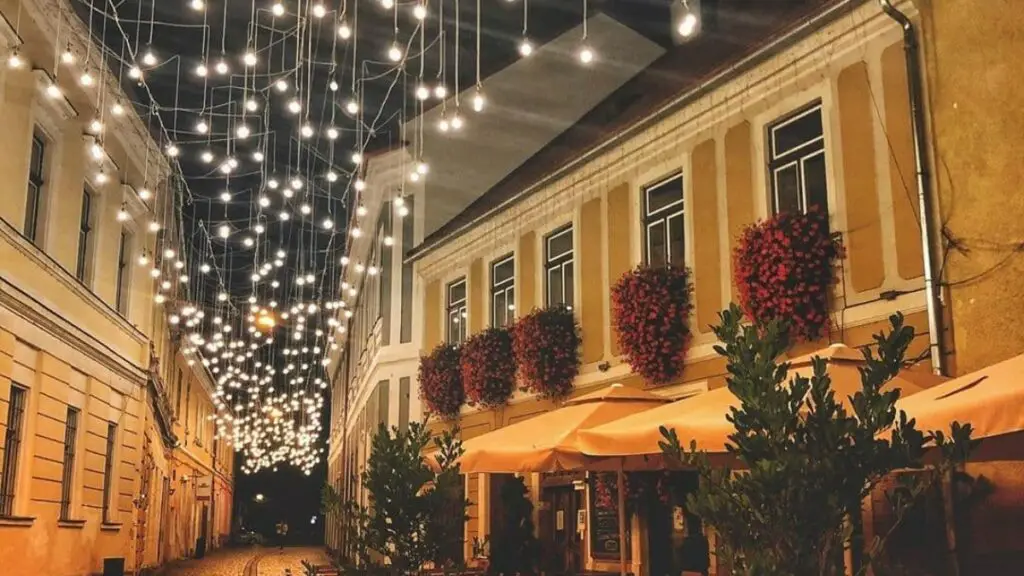
This post may contain affiliate links. At no cost to you, purchases made through these links may result in a small commission for Traveling Transylvania. We never recommend products that we don’t know and trust. Thank you for your continued support!
Here it is! The long-awaited guide to Cluj-Napoca, Romania, the city that has become my most recent home. I’ve been living here since June 2020, never expecting that this would be where I wound up.
Cluj-Napoca is an amazingly friendly city, and one of the best destinations for digital nomads . It’s affordable , got widespread and reliable internet, and making friends here is easy. Plus, there are a ton of amazing day trips from Cluj-Napoca , including the incredible Turda Salt Mine .
My experience in Romania has been a whirlwind. I’ve lived in Sibiu, Cluj-Napoca, and Sighisoara. I’ve adopted 2 additional dogs, had two babies, and got married.
It’s given me an incredibly different perspective than your typical tourist, or than a local who was born and raised here. So, without further ado, please enjoy my unique perspective of Cluj Napoca things to do as both a foreigner and a resident .
People Watch at Piaţă Unirii
Picnic at parcul central simion bărnuțiu, check out piaţă muzeului at night, take in the views from parcul cetățuia, photograph piaţă mihai viteazul, pick up authentic romanian gifts at piaţă avram iancu, spend a saturday morning at piaţă oser, stroll along the someş, lock down your love on elisabeth bridge, take a flamingo boat ride at iulius park, check out the matthias corvinus statue, stop and smell the roses at grădina botanică, admire the matthias corvinus house, catch an event at cluj arena, visit the flower market on strada potaissa.
- Indulge at One of the City's Best Place to Eat or Drink
Get Lost in Hoia Forest
Take a free walking tour of cluj.
- Visit the Exhibits at Tailors' Bastion
Sample Varza a la Cluj
Catch a performance at the romanian national opera, …or at the hungarian opera house, take a day trip to bánffy castle, explore the oldest pharmacy in cluj, visit the transylvanian museum of ethnography, experience traditional romanian village life at the romulus vuia park, hear tales of yore at the jewish museum, visit the second largest church in transylvania, explore jewish heritage at the neolog synagogue, check out the reformed church in cluj-napoca, admire the architecture of the dormition of the theotokos cathedral, see world-renowned musicians at electric castle, get your dance on at untold, catch a film at tiff, things to do in cluj napoca: explore the city.
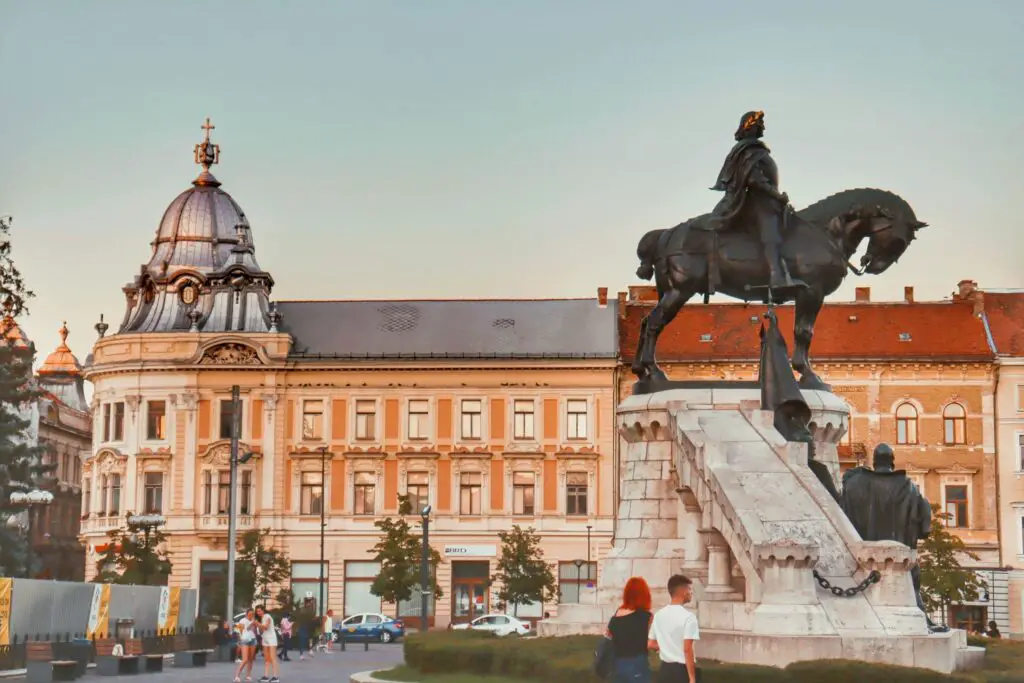
Piaţă Unirii (Union Square) is a great place to visit when in Cluj-Napoca. Located in the center of the city, it’s always full of life and activity.
The square features an ornate sculpture of Matthias Corvinus . Beautiful trees and benches line the perimeter for visitors to relax and enjoy the scenery. In the backdrop lies St. Michael’s Roman Catholic Church.
There are also plenty of restaurants, bars, cafes, and shops around the square that offer something for everyone. These restaurants tend to be among the most expensive in Cluj given their prime tourist retail, and the quality there can be a bit generic. Nuka is great for breakfast, but there are plenty of other eateries with lower prices and better quality throughout the city . Still, Union Square itself is a popular spot for locals and tourists alike who come to take in all that Cluj-Napoca has to offer.
There are always fun happenings in Piaţă Unirii , from book markets, to the annual Cluj-Napoca Christmas Market , to TIFF (Transylvania International Film Festival), and more.
Enjoying a picnic at Central Park is the perfect place for a day out with friends or family. With its picturesque views, running paths and tree-lined lanes , it’s the ideal spot to escape from the hustle and bustle of everyday life.
Enjoy the tranquility of nature by having a picnic near the lake. Chios, the restaurant nearby provides delicious food with breathtaking views of the park . So why not come down and enjoy some quality time in this beautiful area? Bring your own snacks, or pick up something from one of the local vendors to make your picnic complete!
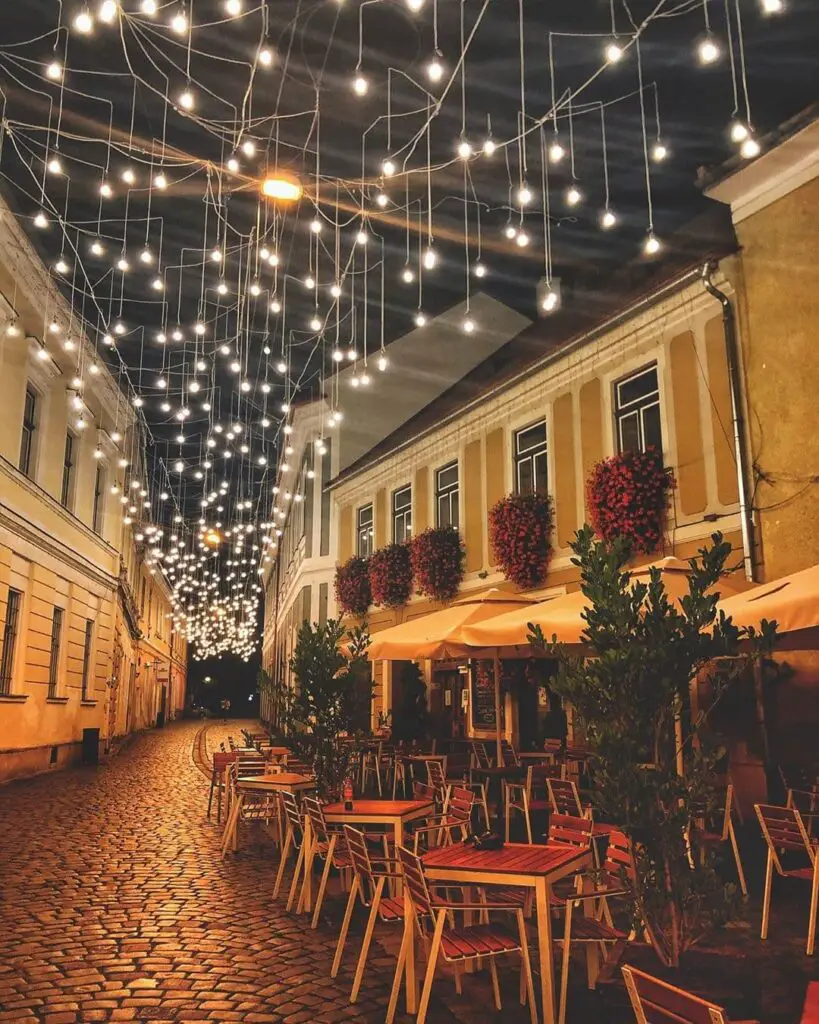
When you visit Piata Muzeului Cluj at night, it’s truly a magical experience. The cobblestone streets are lit up with the iconic strung lights, creating an enchanting atmosphere .
The restaurants and pubs have a lively ambiance that spills into the street. They’re always packed with locals and tourists who come to enjoy a good meal or just to hang out. Hanging out here is one of the best things to do in Cluj at night.
My personal favorite place in Muzeului is Casa Veche . They offer delicious traditional Romanian food and friendly service (which, I’ll admit, is sorely lacking in Romania). And if you’re looking for something cultural, don’t miss Matthias Corvinus House during the day, where one of Hungary’s most famous kings was born! It’s worth visiting this historical site while exploring Piaţă Muzeului, though entrance is only permitted during the day.
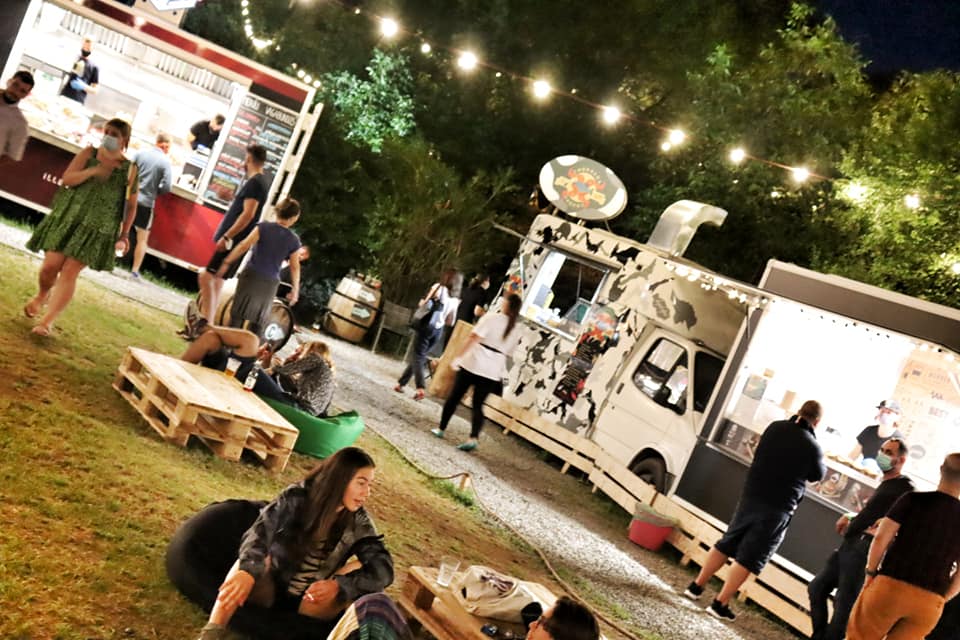
Cetățuia was my go-to spot, as I spent a considerable amount of time there when my husband was working at the Food Truck Park. It’s an idyllic hill located on the other side of the river from Old Town. The stairs may be intimidating at first glance, but they are well worth it to experience its beauty and tranquility!
Cluj’s most breathtaking vistas can be seen from here, as well as the Cetățuia Food Truck Park . However, if you have limited mobility, it is suggested that you take a Bolt to get there as public transportation may require climbing stairs.
Despite the fact that the food truck park is no longer in operation, making the trek up the seemingly never-ending stairs is and taking in the views is one of the best things to do in Cluj Napoca.
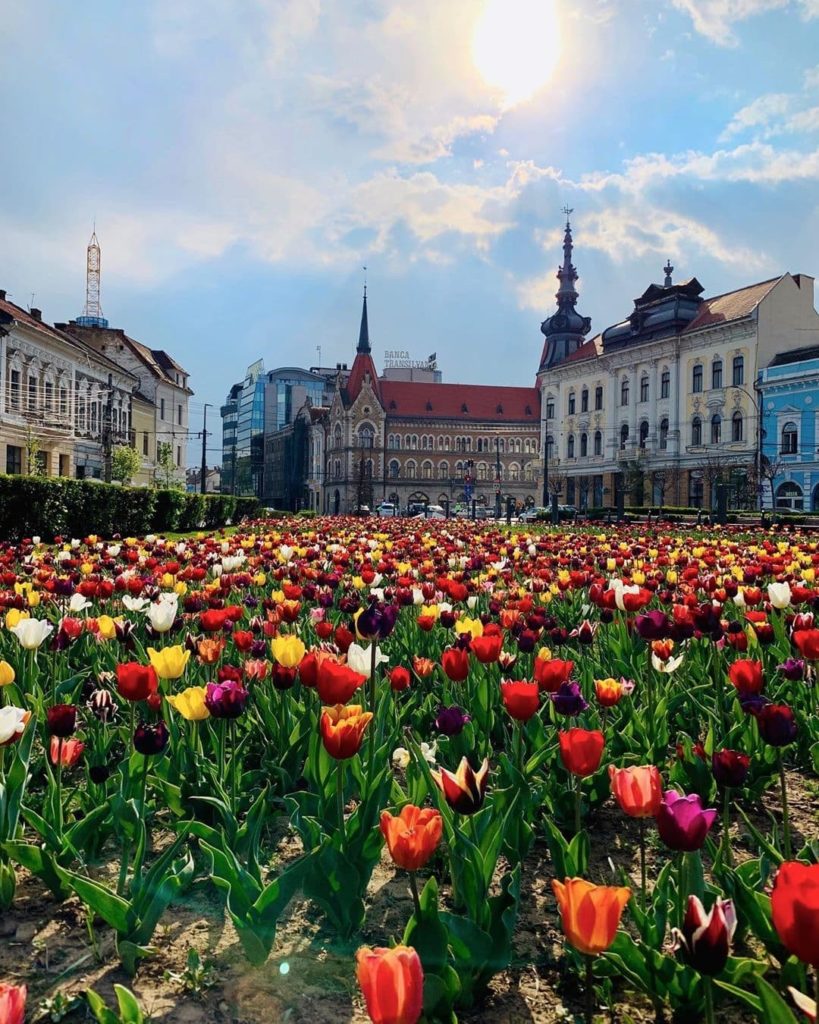
Set your sights on Piaţă Mihai Viteazul for stunning photographs! Located in the heart of town, this square is a popular hub with many bus stops located nearby. You can marvel at the grand statue and fountain as well as bask in vibrant colors from cheerful buildings that adorn the area—a delightful backdrop perfect for any photography enthusiast .
The imposing statue is that of Mihai Viteazul (Mihai the Brave) himself, perched atop his noble steed. Born as Mihai Pătrașcu, Michael the Brave is renowned in Romania as one of their most heroic figures .
He was a brilliant prince who held positions and power in Wallachia, Moldavia, and Transylvania. Throughout the country, you’ll see squares and streets that boast his name. He is a great source of pride for Romania.
Located directly in front of Cluj’s breathtakingly grandiose Dormition of the Theotokos Cathedral, Piaţă Avram Iancu is a sight to behold. During summer months, visitors can bask in the cooling mist which emanates from its captivating turquoise fountain- offering a welcome respite from the scorching heat!
During the summer months, you don’t have to look far for a memorable market experience. At an open-air kiosk from local vendors in Romania, I found amazing buys. Everything from authentic Romanian dishes and local honey to spices at great prices!
Last year I bought some beautiful bone earrings that are my absolute favorite (for just 60 lei or around $13.25 USD). If you’re looking for unique goods and experiences with friendly merchants that won’t break your budget – this is not only one of the best options but it’s also very authentic.
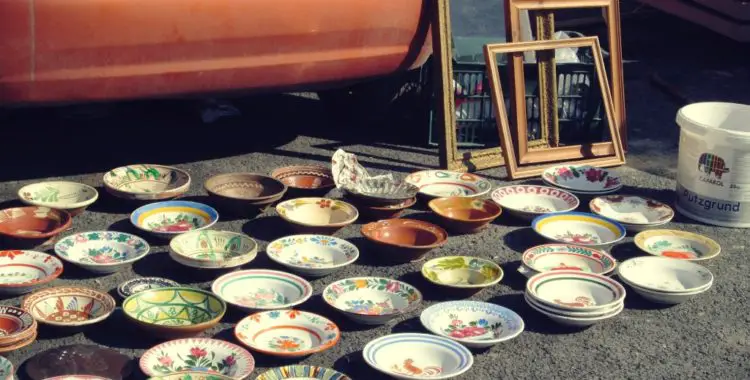
Piaţă Oser is a great place to spend a Saturday morning! You’ll find everything from fresh produce, clothes and shoes, to antique home décor. The atmosphere is vibrant and buzzing with activity–you can hear the sound of merchants haggling over prices and locals chatting about their day.
Pick up some grilled mici for lunch (some of the best in town), or just take in the sights and sounds of this bustling market. Whether you’re looking for a quick bite or an interesting conversation, Piaţă Oser has something for everyone.
Definitely wear a mask if you’re not comfortable in such close proximity to strangers. There is little-to-no personal space at Piaţă Oser, and it can feel a bit cramped.
Also, be sure to go around 7:00 AM if you want the best selection of goods without spending so much time waiting for parking. If you’re not going to shop, you can get there later in the afternoon to avoid the crowds. At this time, however, many of the great finds may already be sold.
Don’t forget to get some grilled mici on your way out (or in) for a yummy snack. A Saturday morning at Piata Oser ranks high on our list of Cluj things to do.
Take a leisurely walk and explore the beauty of Someşul Mic river. While there may not be many attractions in the immediate vicinity, make sure to hunt for Elisabeth Bridge if you are making your way from Parcul Central to Parcul Cetățuia—you won’t regret it!
It’s the perfect place to get lost in your head and escape the hustle and bustle of Cluj.
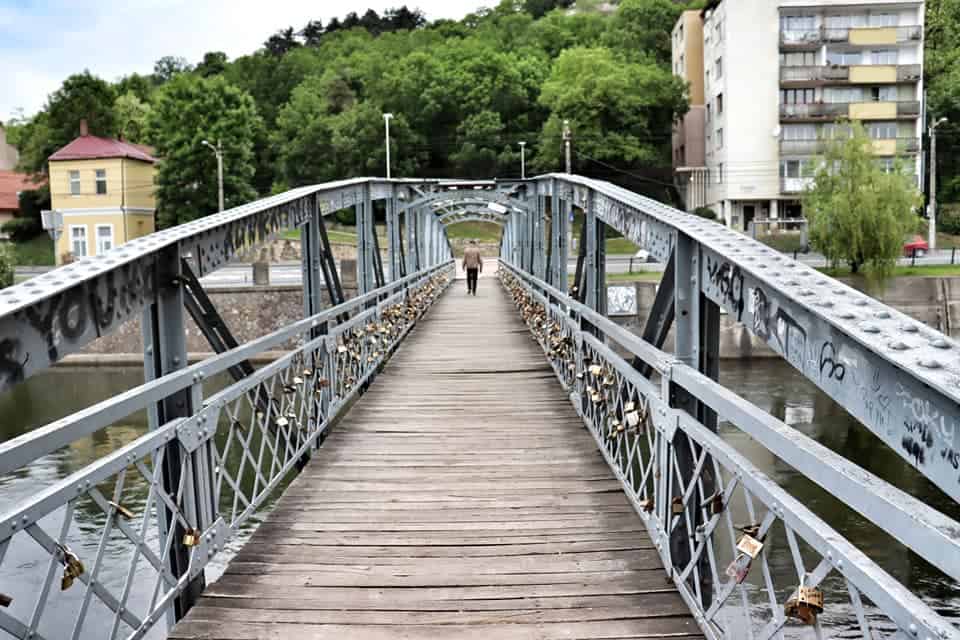
On my first outing in Cluj, the place that would eventually become home to me, I found a stunning sight. Lovers had taken great care when affixing their locks onto the bridge as a representation of their never-ending loyalty for one another (Szilard and I don’t have our lock on the bridge – not yet, anyway!). I couldn’t help but be entranced by this romantic idea and spent ample time taking it all in.
Whether you’re visiting here alone or with a partner, it’s a really romantic location that deserves a stop and a moment of contemplation.
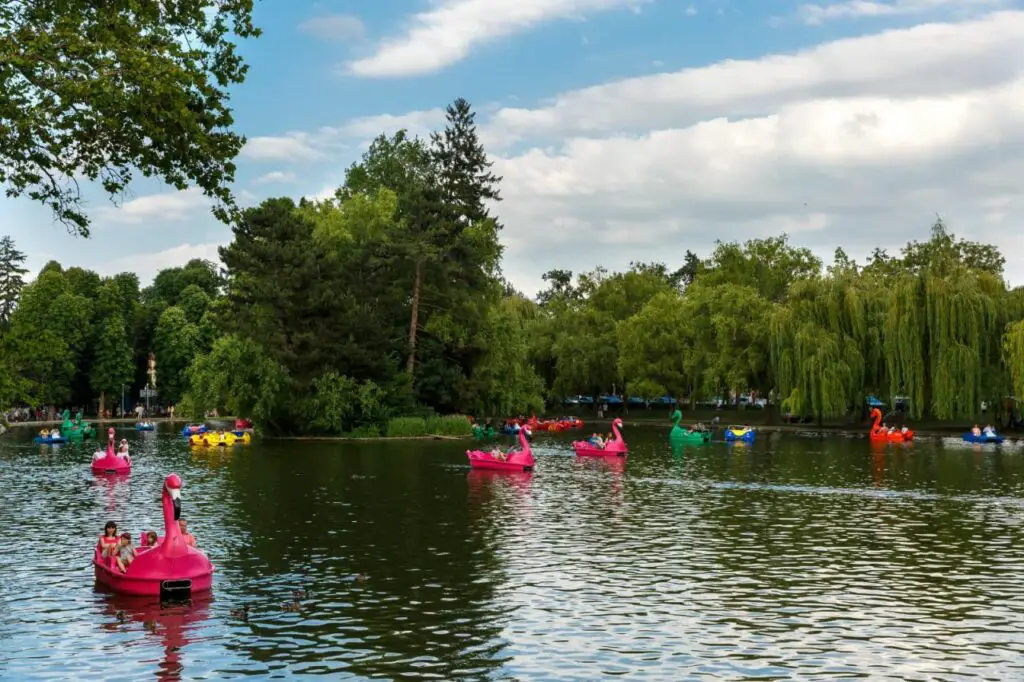
Experience a calm and romantic boat ride at Iulius Park, located next to Iulius Mall in Cluj-Napoca, Romania. Take in the beauty of the the small pond among the swans while you enjoy a leisurely hour on the Flamingo or Swan Pedal Boats . The boats are equipped with comfortable seating and easy-to-use pedals to wander your way around the pond.
You’ll have plenty of time to take pictures and admire the stunning views of nature all around you. And don’t forget to bring along your camera; you won’t want to miss out on any photo opportunities! So, grab some friends and come experience all that Iulius Park has to offer for an unforgettable boat ride.
Once you’re done, grab a snack at one of the many food trucks . Alternatively, head across the street to Iulius Mall to check out what sales are going on at your favorite stores.
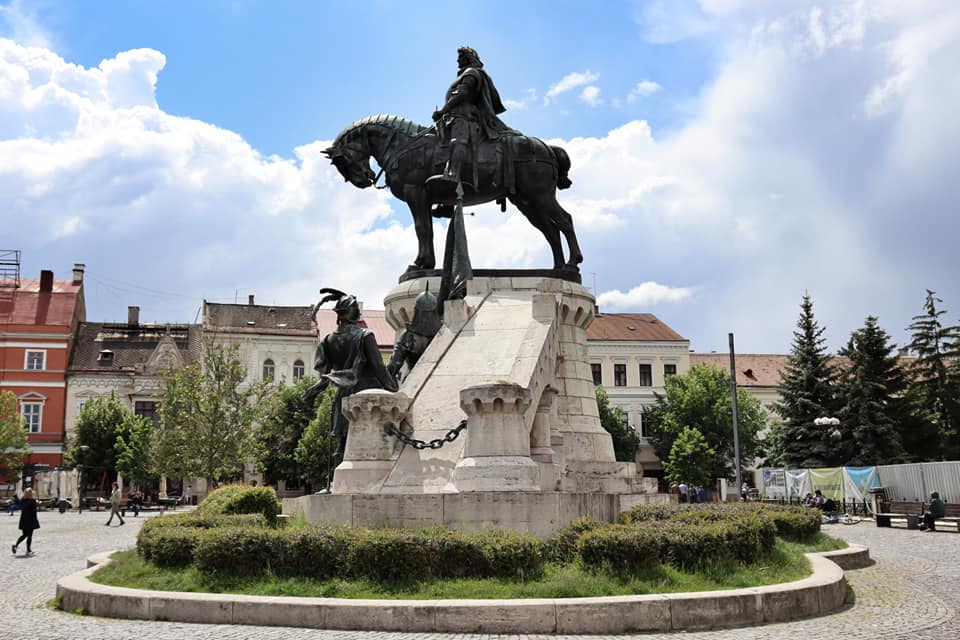
Matthias Corvinus, born in 1443, was a Hungarian king who reigned from 1458 until 1490. He is often referred to as “Matthias the Just” for his fairness when ruling and treating his subjects.
During his reign, he successfully defended Hungary against Ottoman invasions, expanded royal power throughout much of central Europe, and encouraged economic development through progressive taxation laws . His efforts made him one of the most powerful rulers of the 15th century.
After he died in 1490, Matthias Corvinus was posthumously recognized as one of Hungary’s greatest kings and revered by many Romanians and other Europeans alike. He was born in Cluj-Napoca, with his birth house being just down the street at Piaţă Muzeului.
The statue located at Piaţă Unirii serves not only as a reminder of his accomplishments, but also pays homage to him as a symbol of strength and justice . The Matthias Corvinus Monument is a great stop for anyone looking to learn more about the history of the region or take some memorable photos!
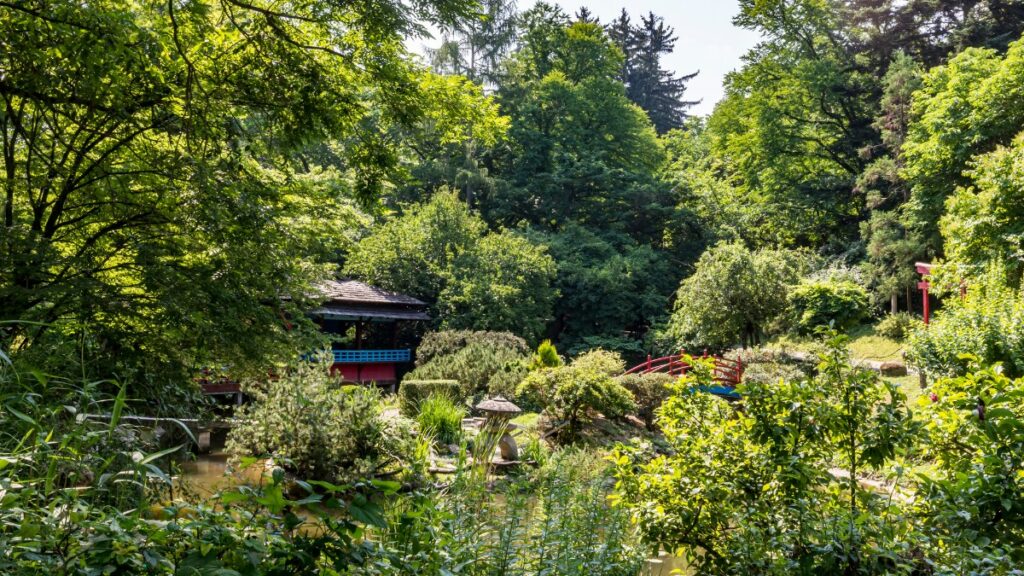
Behold the extraordinary beauty of Cluj’s Botanical Garden! Not only is it admired by locals, but also residents from other counties and tourists visiting from abroad. Spanning across 14 hectares (34.5 acres) with both indoor and outdoor gardens , this treasure encompasses an impressive 10,000 species of plants from around the globe – making spring a particularly magical time to visit when most varieties are in full bloom. Don’t forget to check out the stunning Japanese garden!
Genral entry for one adult is only 11 lei (roughly $2.75 USD). Reduced rates are available as well: children, students and seniors can access the area at a discounted price of 5 lei!
The Matthias Corvinus House is a must-see destination when in Cluj-Napoca! Its fascinating history dates back to the 15th century, and it has served many different purposes over time. Today, you can visit the building and explore its interesting exhibits related to Matthias Corvinus’s life.
As an added bonus, the institute hosts events throughout the year such as seminars, lectures, exhibitions, and more . So even if you’re not interested in learning about Hungary’s past kings, there’s something for everyone to enjoy.
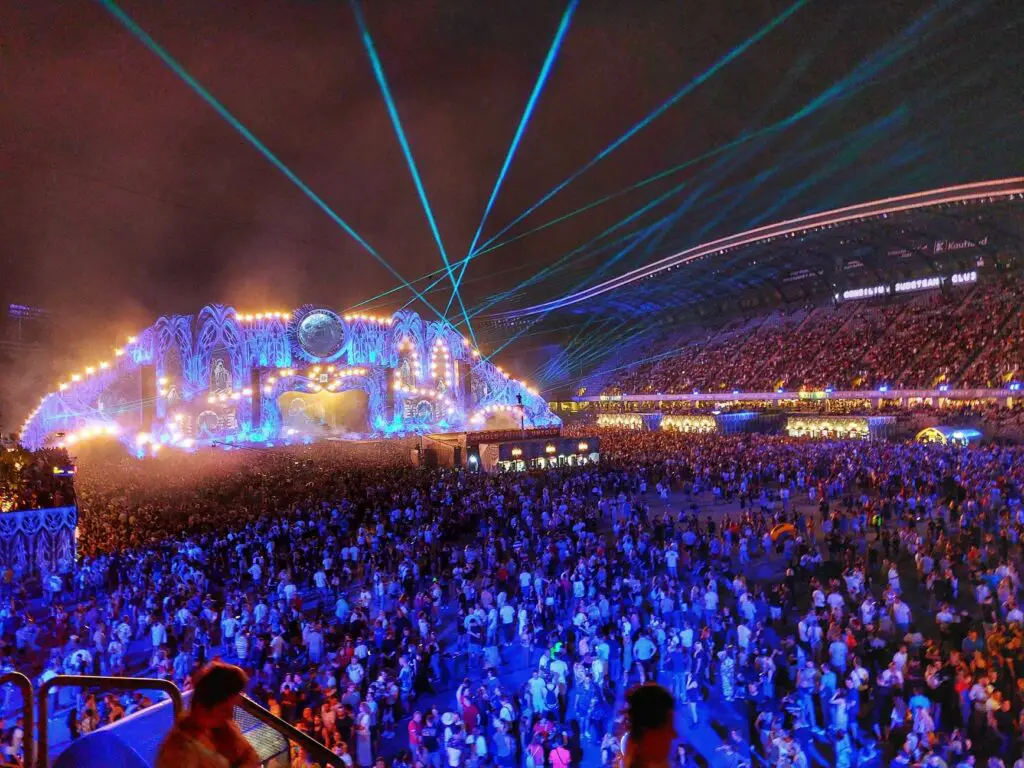
Cluj Arena is the perfect place for a night out, whether you’re looking for some good music or a competitive football (soccer) game. Besides Untold Festival (pictured) and concerts from world-renowned artists such as Sting and Andrea Bocelli , there are plenty of other great events held here as well!
From exciting sports tournaments to live comedy shows, there’s never an excuse not to stay entertained in Cluj. Make sure to check out the Cluj Arena event calendar before planning your trip, so that you don’t miss out on any amazing opportunities!
For an abundance of blooming beauty, make sure to visit Potaissa Street when you’re vacationing in Cluj during the hot months. It is one of the most attractive streets in town and hosts Altfel Flower Market every weekend from 10:00 AM till 11:00 PM. Be prepared for a visual feast!
As the market has flourished in recent years, vehicular traffic is now limited. However, you can still find workshops and performances as well as beautiful bouquets of flowers, potted plants for your home or herbs to cultivate a gardening paradise !
A visit to the Flower Market is one of the best outdoors activities in Cluj Napoca.
Indulge at One of the City’s Best Place to Eat or Drink
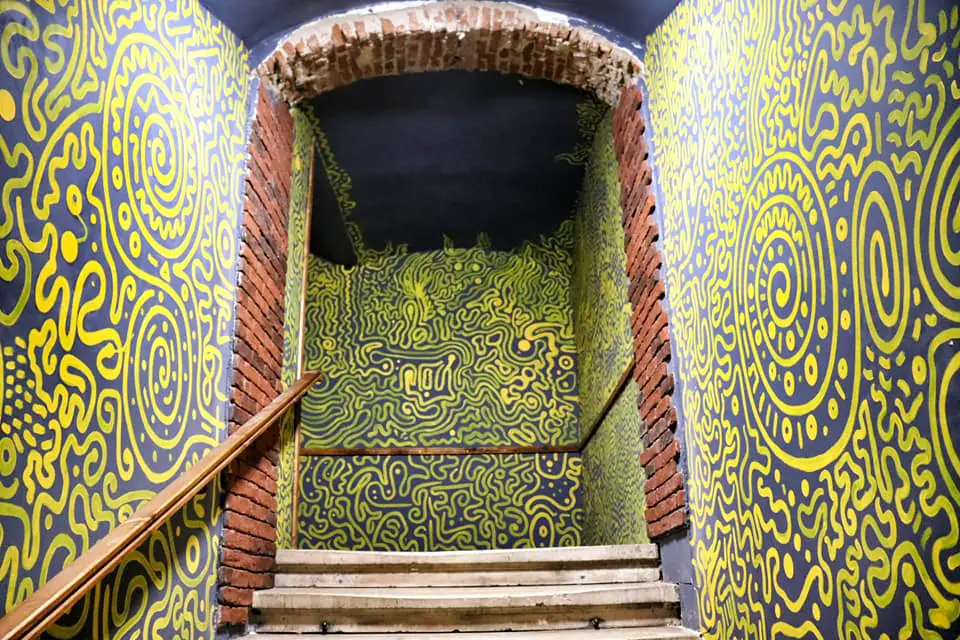
While Cluj isn’t as gastronomic a city as Sibiu, for example, there are still fun places to go that serve up quality food and delicious drinks. For more detailed information, check out our article on where to eat and drink in Cluj.
My personal favorites for food include Casa Veche, Roata Faget, Casa Boema, Rod, Little Hanoi, and Boega del Taco. For a fun-filled night of libations, try Insomnia, Sisters, Joben Experience Bar, or Klausen Pub. Pictured above is the totally Instagram-worthy stair entrance to Insomnia.
Hoia Forest has attained a notorious renown throughout the years. It is regularly listed among the most haunted forests on Earth . Known for its paranormal events and UFO sightings, this eerie woodlands remains popular to travelers seeking supernatural thrills.
Since the first UFO sighting in the late 1960s, Hoia-Baciu Forest has become a mecca for avid supernatural fans. It’s no surprise that mysterious lights, energies and other unexplainable phenomena have been relayed from within its borders ever since.
Never venture alone in any forest, be it haunted or not! Hoia Forest is situated near the open-air part of the ethnographic museum. Take advantage of that and pay a visit to both spots on one day .
I’d recommend carrying a large stick or something of those sorts. The last time I went, the entrance to Hoia was ‘guarded’ by a pack of street dogs. They felt threatening enough that I didn’t go any further.
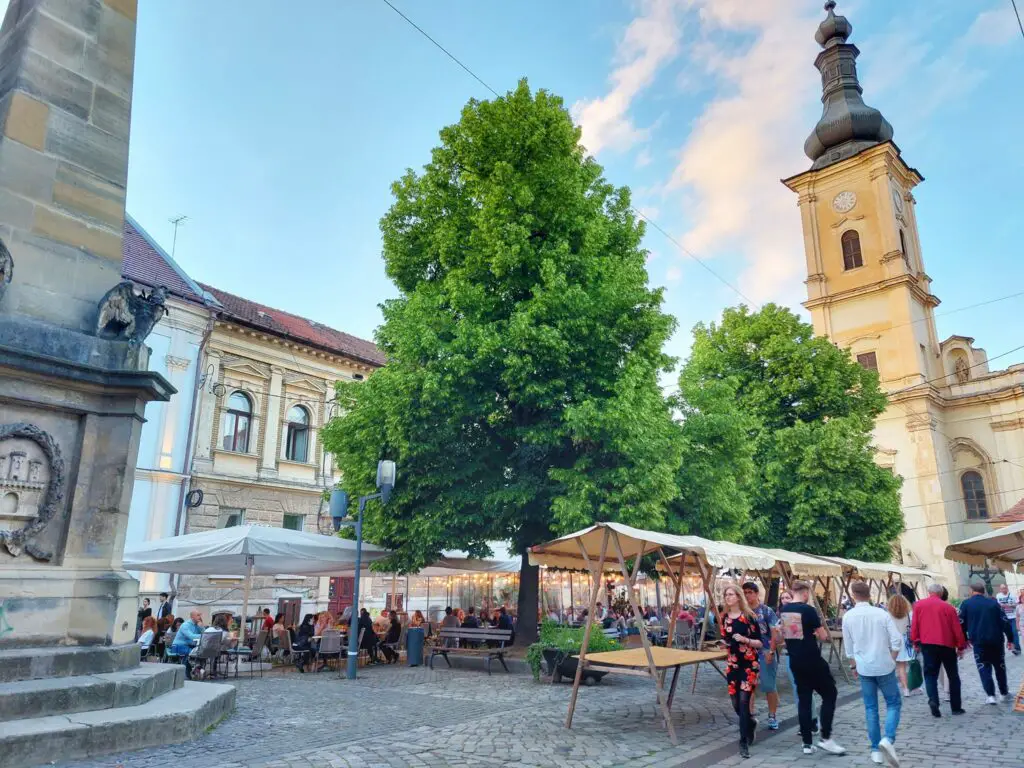
Uncover the secrets of Cluj and its inhabitants by taking a city tour. Whether you choose to follow a guide or go on a self-guided walking journey, there are plenty of options for exploration! Marvel at the multitude of stunning architecture and learn about the unique history that makes this diverse city so special.
Free walking tours are great initiations to new cities. It’s the perfect way to get the lay of the land as well as a bit of history about the area. A walking tour is one of my favorite things to do in any city, and one of the best things to do in Cluj Romania. If you’re taking a guided free tour, don’t forget to tip your guide!
Visit the Exhibits at Tailors’ Bastion
Once forgotten and abandoned, the Cluj-Napoca Tailors’ Bastion has been restored to its former glory. Located near the southeastern tip of Old Cluj, this tower now serves as a Center for Urban Culture with impressively interactive exhibits on each floor. A visit here will give you a glimpse into local culture that is sure to be both fascinating and memorable!
If you find yourself liking the city and want to familiarize yourself a bit more, the Center for Urban Culture at Tailors’ Bastion is one of the best things to do in Cluj.
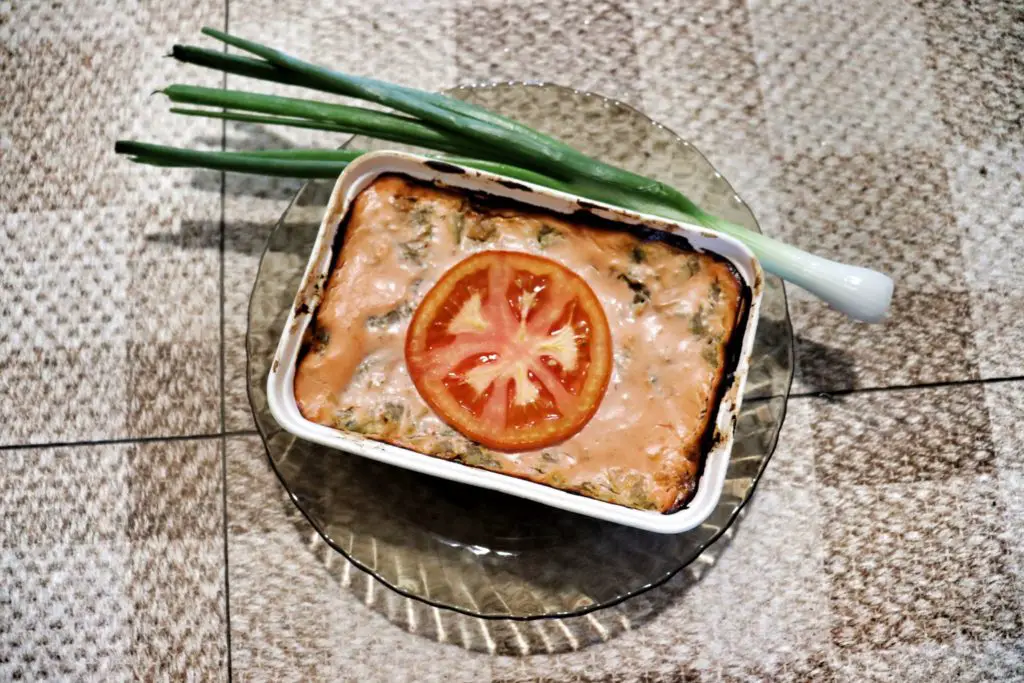
From its aromatic smell to its succulent taste, cabbage undeniably reigns as a staple ingredient in Romanian cuisine . Yet, there’s something special about the Cluj-Napoca rendition! It is crafted with ground meat, onion, cabbage and rice and finished off with a very unique sour cream mix.
Every family and restaurant has their own twist on this recipe. You’ll definitely find some variations if you sample it from different places around town. The absolute best Varza a la Cluj can be found at Zama or Roata (in my honest opinion), but many restaurants in Cluj-Napoca offer this local treat. Pictured is take-out from Zama.
Things to Do in Cluj Napoca: Museums & Entertainment
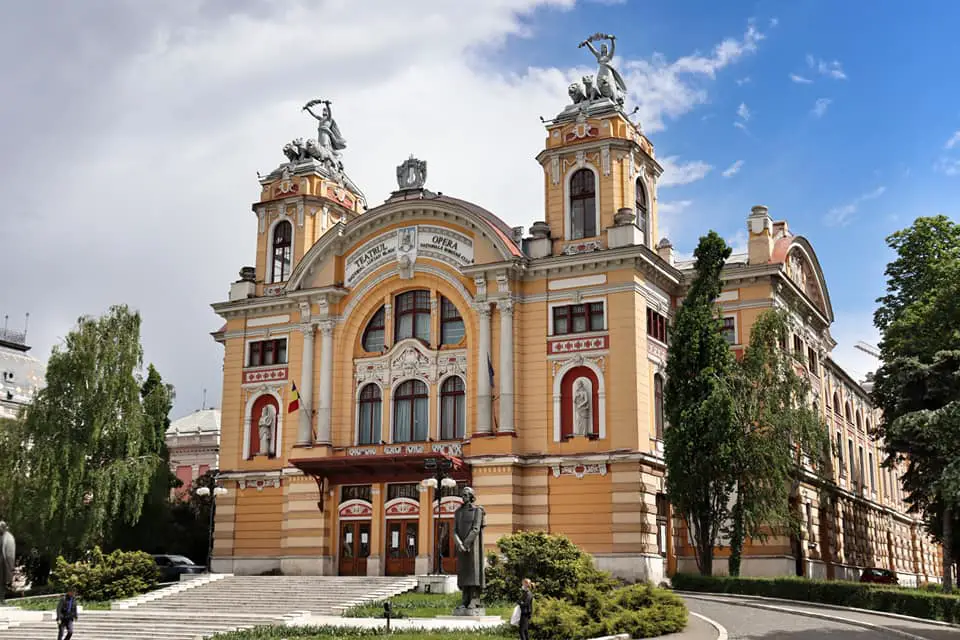
The Romanian National Opera in Cluj-Napoca is a stunning building steeped in history. Located across from Piaţă Avram Iancu, it was established at the start of the 20th century and has been delivering performances ever since.
The neoclassical architecture heavily influences the interior design of the theatre, with sweeping staircases and opulent ceilings. The auditorium itself is impressive – there are around 1,100 seats split between two levels, offering an intimate space for performance art.
At the Romanian National Opera you’ll find both opera and ballet performances throughout the year. You can purchase tickets online or just turn up on the day and see what’s playing – either way you’re sure to have a memorable experience.
The Hungarian Opera House in Cluj-Napoca is a city institution which shares the same popular location as Parcul Central. It’s close to many restaurants, downtown, and nearby hotels. Though the façade is anything but ornate, you can still catch quality performances here.
This theatre hosts some of the most prestigious shows in Romania; from classical music events such as Mozart’s Requiem to theatrical spectacles like Rigoletto . Whether you’re looking for a casual night out or seeking cultural enrichment, this venue has something for everyone.
If you’re looking to catch a performance at the Hungarian Opera House in Cluj-Napoca, make sure to check out the online schedule . Tickets are usually reasonably priced and range from small concerts to full scale operas and ballets. So, get ready for a night filled with culture and entertainment!
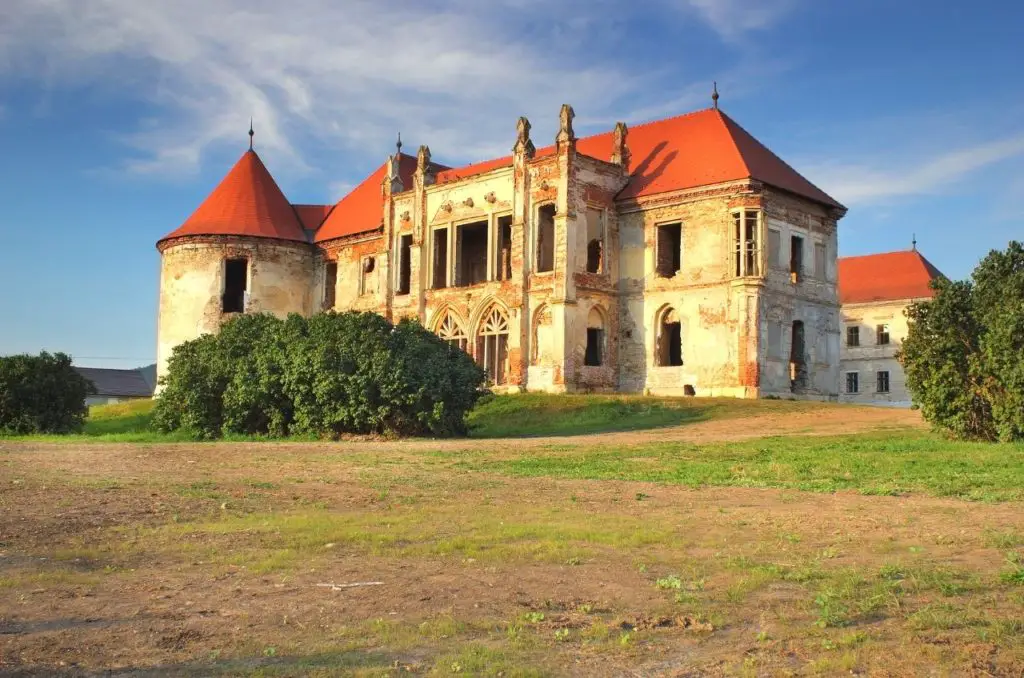
Located in the village of Bonţida, Bánffy Castle is a spectacular Transylvanian castle that lies just beyond Cluj’s city limits. Though it was ravaged by German troops in the 1940s, this magnificent edifice has since been restored to its former glory.
For centuries, this historic building has been utilized in a variety of ways. It’s served as everything from medical facility to driving school, and even as a co-op farm! More recently it was transformed into Cluj’s acclaimed Electric Castle Festival . Since 2013 the site continues to make its mark on history with this much beloved event.
Although not located within city limits, a visit to Banffy Castle is among the best things to do around Cluj.
Set inside the ‘La Sfântul Gheorghe’ or Hintz Pharmacy, the oldest pharmacy building in Cluj, is a museum dedicated to preserving and showcasing its history: The Pharmacy History Museum.
Since the 16th century, the museum has held onto some truly remarkable sources of healing within its walls. To treat rheumatic disorders there was Syrian asphalt, plus to increase calcium intake they used coral powder and lobster eyes! It is astonishing how long these methods have been around without fail.
The Transylvanian Museum of Ethnography in Cluj is composed of two distinct sites. Firstly, the Reduta Palace downtown houses captivating displays that encompass items and garments typically employed by rural Romanian people as well as an awe-inspiring historical photo archive.
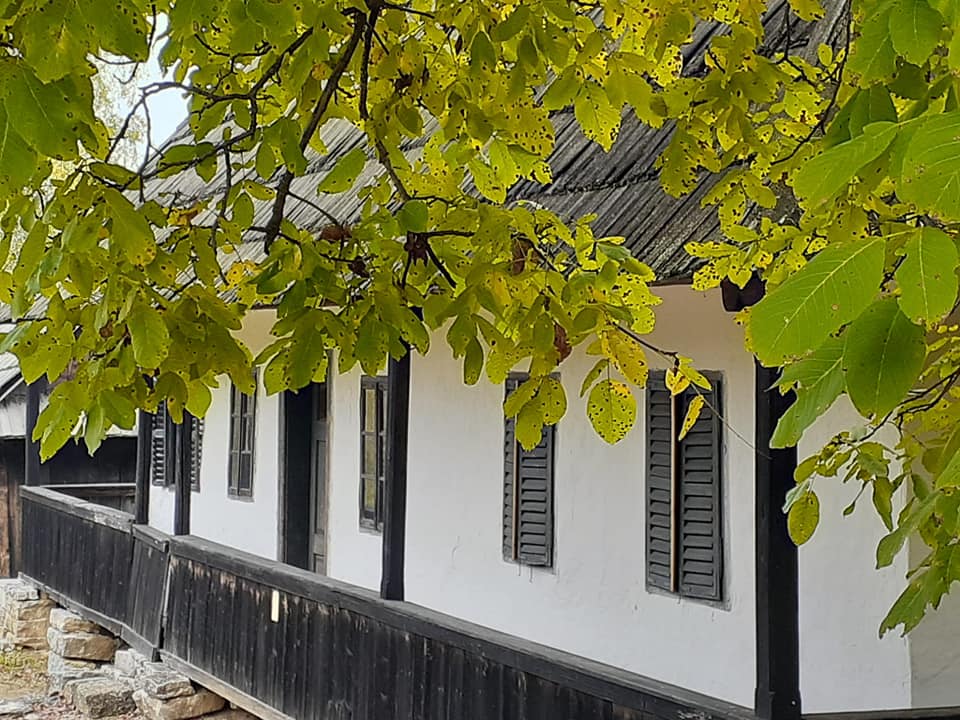
Gather your family and explore the second site of the Transylvanian Museum of Ethnography. It’s slightly further afield, located at Romulus Vuia Park. Here you can immerse yourself in a unique open-air museum. The site features authentic farms from various parts of Transylvania , historic mills, wooden churches, and interesting workshops that showcase traditional rural life.
The Jewish Museum in Cluj-Napoca, Romania is a unique museum located in the heart of the city. It houses many interesting artifacts, but its main focus is on stories of past generations. Muzeon brings to life tales from centuries ago through personal anecdotes and family histories recorded and preserved over time . Visitors can explore the history of Jewish culture in Romania by listening to these stories told by knowledgeable guides who help bring them to life.
The exhibits are interactive and often include multimedia elements such as videos, audio recordings, photographs, and other materials . The experience is enhanced with guided tours that provide insight into the historical context behind each story. Aside from this, there are various activities available for visitors like workshops or seminars hosted by local experts.
Whether you’re interested in Jewish history or simply looking for a unique experience, the Jewish Museum in Cluj-Napoca is worth visiting. It provides an immersive journey through the past and invites visitors to explore the lives of generations long gone. With its engaging storytelling approach, it truly is something special!
Things to Do in Cluj Napoca: Religious Institutions
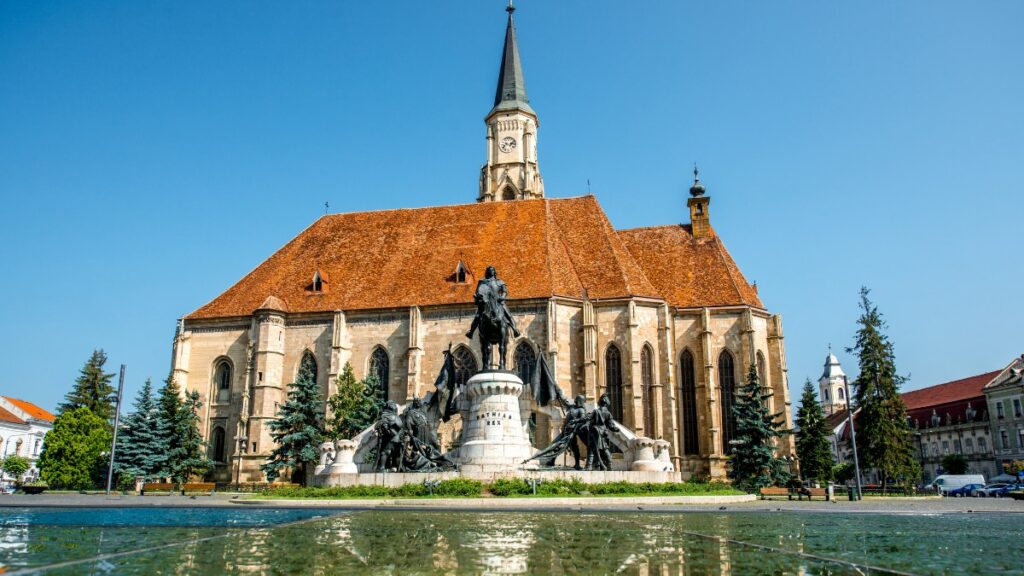
A visit to St. Michael’s Church in Cluj-Napoca is an opportunity to experience a piece of Transylvanian history. The imposing Gothic church, built in the late 1500s and second only in size to the Black Church of Brasov, stands tall as a testament to centuries past.
Though renovations are still ongoing, visitors can take some time to appreciate the beauty of its architecture. Imagine how it must have looked during elections for the Princes of Transilvania hundreds of years ago!
The church holds another momentous spot in history: on May 24th 1944, Áron Márton, then bishop of the Roman Catholic Church in Transilvania, gave a speech here that condemned the deportation of Jews and brought hope to those affected by Nazi oppression .
It’s easy to see why St. Michael’s Church is such an important landmark in Cluj-Napoca. If you find yourself in Transylvania, be sure to make a stop here! The scaffolding finally seems to be disappearing so you can actually see this magnificent structure.
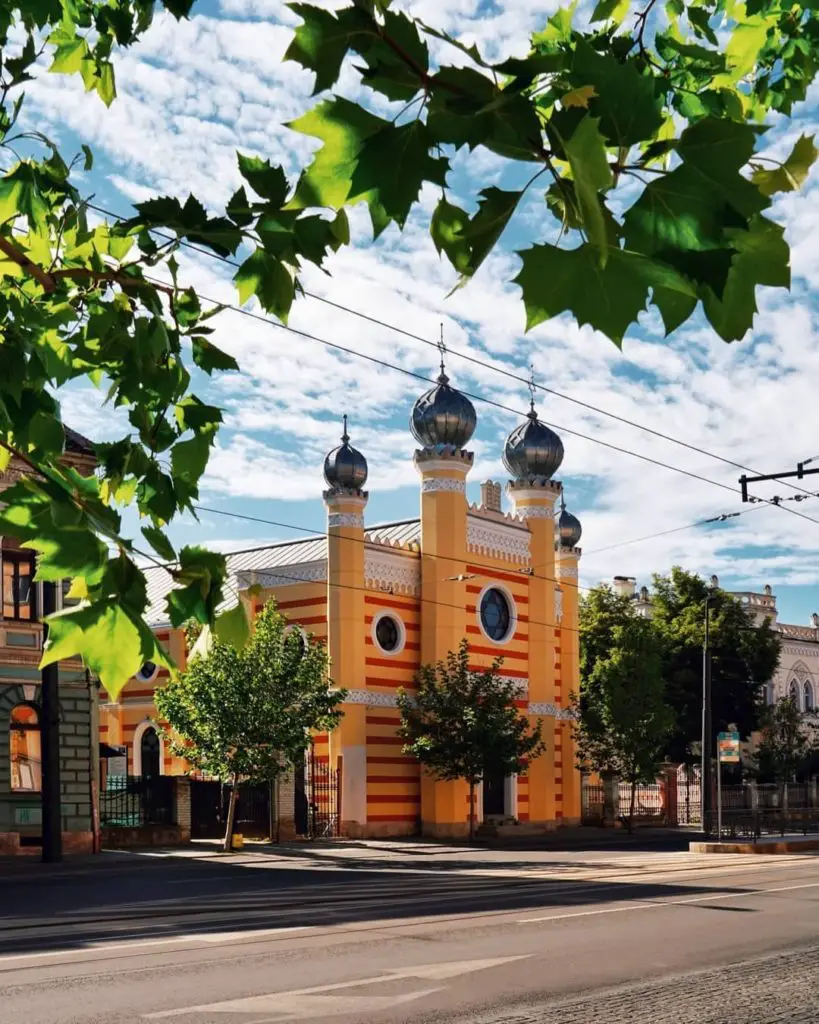
The Neolog Synagogue is an important part of Romanian history, and serves as a reminder of the city’s Jewish heritage. Visitors can explore its intricate Moorish-style architecture , as well as learn about its turbulent past. Guided tours are available to provide further information on how this synagogue has been affected by both World Wars, the Iron Guard attacks in 1927, and other significant events throughout its history.
The synagogue is a popular attraction for things to do in Cluj-Napoca. Not only does it provide insight into the city’s Jewish history, but its picturesque façade makes for an excellent photographic opportunity too. So don’t forget your camera when you visit!
The Reformed Church in Cluj-Napoca is a great place to visit if you’re looking for things to do in the city. Its impressive architecture and history make it an interesting attraction. The church claims ownership of much of Cluj-Napoca. This includes several key landmarks like the Statue of Matthias Corvinus, the Palace of Justice and many churches throughout the city.
Visitors can learn about its rich heritage and explore its stunning interior with guided tours available by appointment. The church is also a popular spot for religious events and activities, such as baptisms, weddings or memorial services.
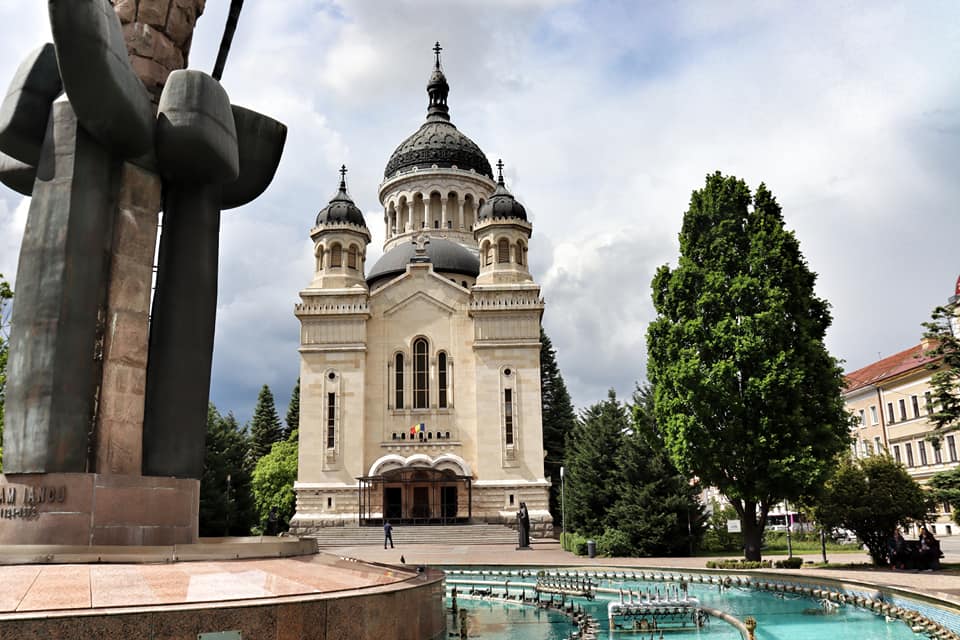
The Dormition of the Theotokos Cathedral is a must-see when visiting Cluj-Napoca. Built in the 1500s, it is an impressive example of Renaissance and Byzantine architecture . From its two bell towers to its ornate façade, this stunning building will leave you in awe!
Inside the cathedral, you’ll find beautiful frescoes, intricate mosaics, and stained glass windows. Its ornately decorated interior makes it one of the most magnificent things to see in Cluj-Napoca.
Be sure to take some time to explore the area around the cathedral too. There’s a fountain adjacent to the main entrance where you can relax and enjoy the atmosphere. Plus, Piață Avram Iancu has market stalls during the summer months .
If you’re looking for things to do in Cluj-Napoca, be sure to add a visit to the Dormition of Theotokos Cathedral to your itinerary ! With its remarkable architecture, fascinating history, and spectacular interior design, plus the fact that it’s my absolute favorite building in Cluj, mean it’s sure to make for a memorable experience.
Things to Do in Cluj Napoca: Events & Festivals
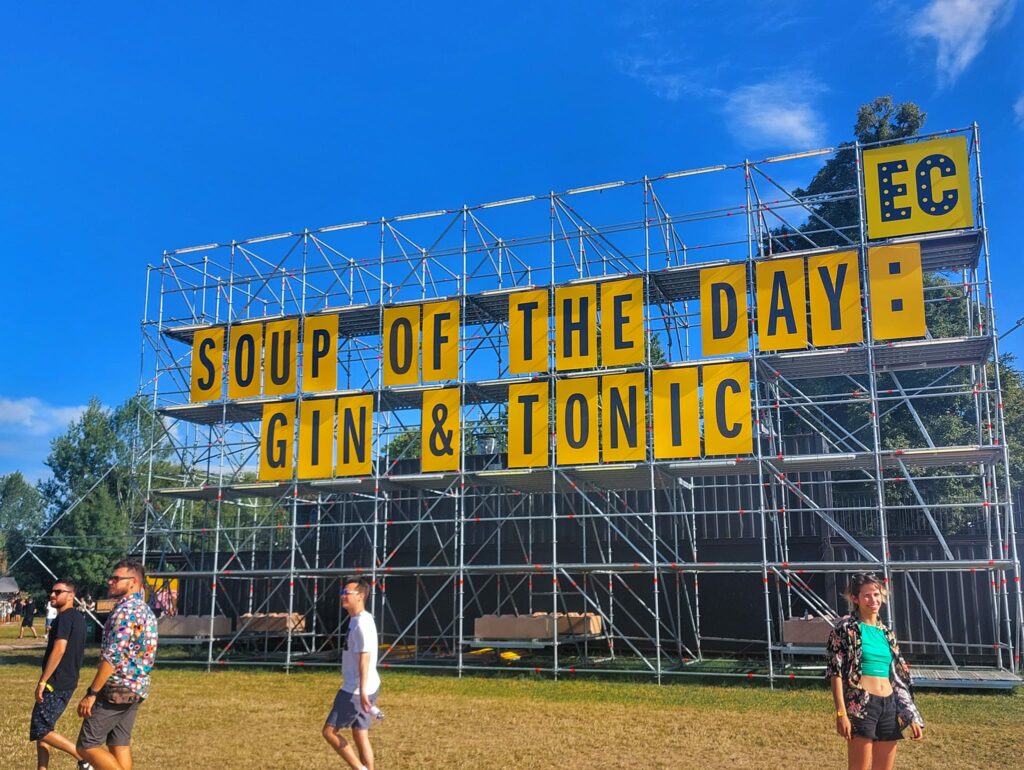
Every year, Electric Castle comes alive at Bánffy Castle to bring all kinds of musical genres together – rock, indie, hip hop, electronic music and techno beats collide with art installations for a festival experience reminiscent of its US counterparts.
With ten stages, every show is an unforgettable experience! Catch international superstars such as Florence + the Machine, Skrillex, Deadmau5, alt-J and more at this incredible event. Take a ride on the iconic Ferris Wheel, dance the night away with friends, and create memories to last a lifetime – all with the perfect soundtrack to go along with it.
Mark your calendars for mid-late July 2022! Get ready to rock as Electric Castle announces their headliners: The Deftones, Gorillaz and Twenty-One Pilots – a show you won’t want to miss.
**It’s now around a year after this article was originally posted. Deftones wound up canceling for the 2022 lineup, but we had a great time seeing Disclosure and Aurora, in addition to Gorillaz and Twenty-One Pilots!
2023 artists have begun to be unveiled! The lineup features Iggy Pop, Tash Sultana, The Chemical Brothers, George Ezra, Sigur Ros, and Nothing But Thieves (among plenty others).
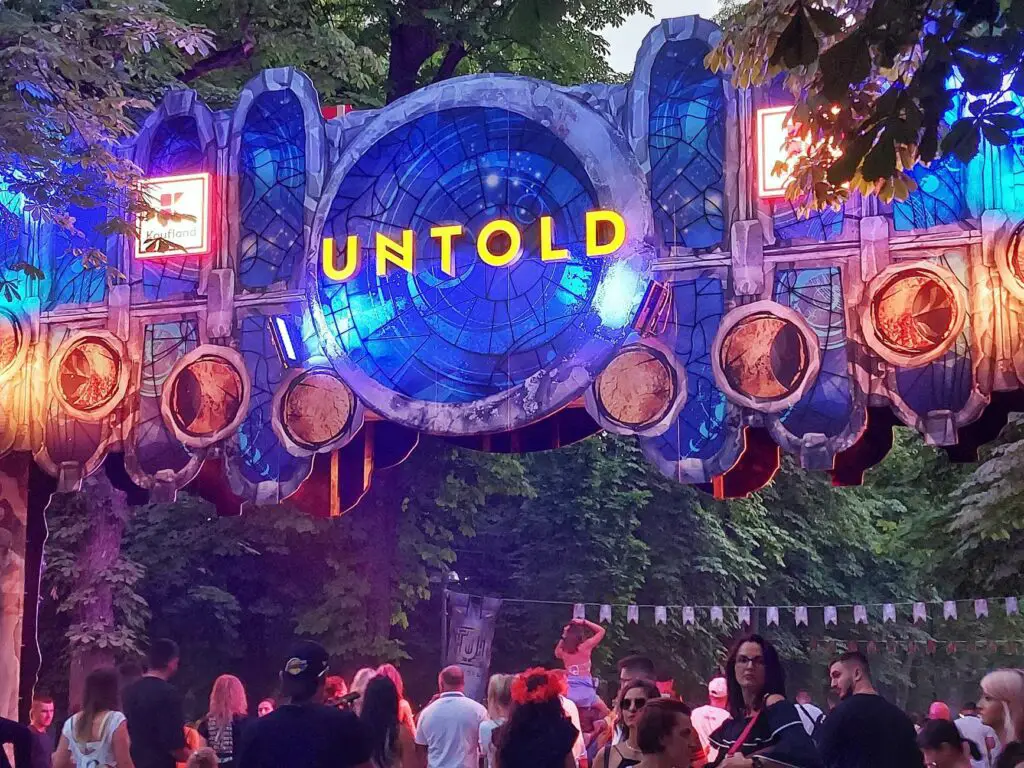
Untold Festival is one of the premier music festivals in Romania, taking place at Cluj Arena each August. It’s a must-visit event for electronic music fans from all over Europe and beyond.
The festival’s lineup boasts some of the biggest names in EDM like Armin van Buuren, Avicii (RIP), Chainsmokers, Tiesto, David Guetta, Bonobo, Afrojack and Steve Aoki. With such an incredible lineup of artists every year, you’re sure to have an unforgettable experience!
Confirmed (so far) for 2023 are Steve Aoki and Imagine Dragons. I know, I know, not exactly EDM – but definitely a good time!
My best advice for Untold is this – book your accommodation SUPER early ! Considering what an inexpensive and affordable country Romania usually is, the prices of accommodation for Untold will come as a serious shock.
Cluj’s famed Transylvania International Film Festival , or TIFF as it is better known, has been the most celebrated film event in Romania ever since its inaugural year of 2002 .
Every year, the TIFF festival is celebrated throughout multiple sites across Cluj city, from open-air to hidden spots. In 2020, due to social distancing requirements that would have been more difficult with EC or Untold festivals, it was decided that the only event taking place in Cluj should be TIFF.
Keep an eye out for celebs – the likes of Nicholas Cage and Catherine Deneuve have been spotted here.
Sharing is caring!
- Pinterest 8
Leave a Comment
You must be logged in to post a comment.
Privacy Overview

- Living In Croatia
- Croatian Recipes
- Balkan Recipes

Home > Discover The 14 Best Things To Do in Cluj-Napoca City In Romania
Discover The 14 Best Things To Do in Cluj-Napoca City In Romania

Written by our local expert Guru
Written by a local specialist we know and trust to bring you the most up-to-date travel information.
Here, we have a list of the best things to do and what to see on your trip to Cluj-Napoca. We’ve got suggestions for what to see when you are wandering around the city center as well as those who want to venture out to the forest.
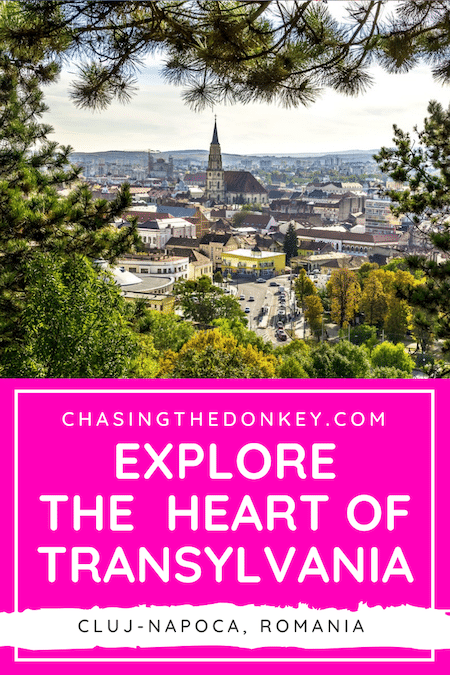
Skip Ahead To My Advice Here!
Visiting Cluj-Napoca
Cluj-Napoca is the unofficial capital of Transylvania, a region known for its spooky Dracula legends , beautiful landscapes, and rich heritage . As the second-biggest city in Romania, visiting Cluj-Napoca is an essential part of any Romania itinerary .
Once the heart of the Transylvania region, Cluj-Napoca has now transformed itself into a charming city with vibrant nightlife (partly thanks to the several universities in town). However, dotting the idyllic streets are still many historic buildings that tell the tales of its long history.
That is why we have written this post to showcase some of the best things to do in Cluj-Napoca so that you can discover the best of Cluj on your visit !
Best Things To Do In Cluj-Napoca: Top Attraction Ideas
We’ve made a list of the top attractions in Cluj-Napoca, Romania, for you!
1. Explore Hoia-Baciu, One Of The Most Haunted Forests In The World

Hoia-Baciu is one of the biggest attractions in Cluj-Napoca, but it has nothing to do with Cluj’s history. Hoia-Baciu earned its fame by being one of the most haunted forests in the world. Paranormal activities are rumored to occur there regularly, and many documentaries feature Hoia-Baciu.
Some call it the “Bermuda Triangle of Transylvania” or “Romania’s Most Haunted Forest.” Others refer to it as a mysterious natural wonder.
Many features of the Hoia-Baciu forest make it so strange. First of all, none of the trees grow straight inside, but rather in a peculiar twisted shape. To this day, scientists don’t know why they grow in this shape and pattern.
Secondly, the Hoai-Baciu is a dense forest, except for one oval-shaped area known as “The Circle” or “The Clearing,” where no vegetation grows. Scientists have researched the soil here and found no discrepancy between the soil quality from The Circle from the rest of the forest.
There are rumors of people disappearing from Hoia-Baciu, unexplained lights, UFO sightings and mysterious shadows. However, this doesn’t stop tourists from visiting this forest, and interested visitors can find daytime and nighttime tours to Hoia-Baciu from Cluj.
If you’re planning to visit Hoia Baciu, prepare for an adventure that’s both thrilling and eerie. The forest is easy to access from Cluj, making it a popular destination for both locals and tourists. As you step into the woods, you’ll be greeted by dense vegetation and a sense of being in a place where the ordinary rules might not apply.
While the forest’s reputation for the supernatural might pique your curiosity, taking precautions is essential. Always visit during daylight hours, and let someone know about your plans. Stick to marked trails and avoid wandering off the beaten path.
- Best Things To Do In Romania (Including Hoia-Baciu Forest!)
2. Admire Transylvanian Architecture At Saint Michael Church
Also known as Biserica Sf. Mihail, this church is a stunning example of Transylvanian architecture while being rather beautiful at the same time. You’ll see pictures of St. Michael’s church in literature promoting Cluj-Napoca for tourism.
Be sure to check out the beautiful interior and the church tower, which soars for 80 meters.
3. Take A Peaceful Stroll Through Cluj’s Central Park
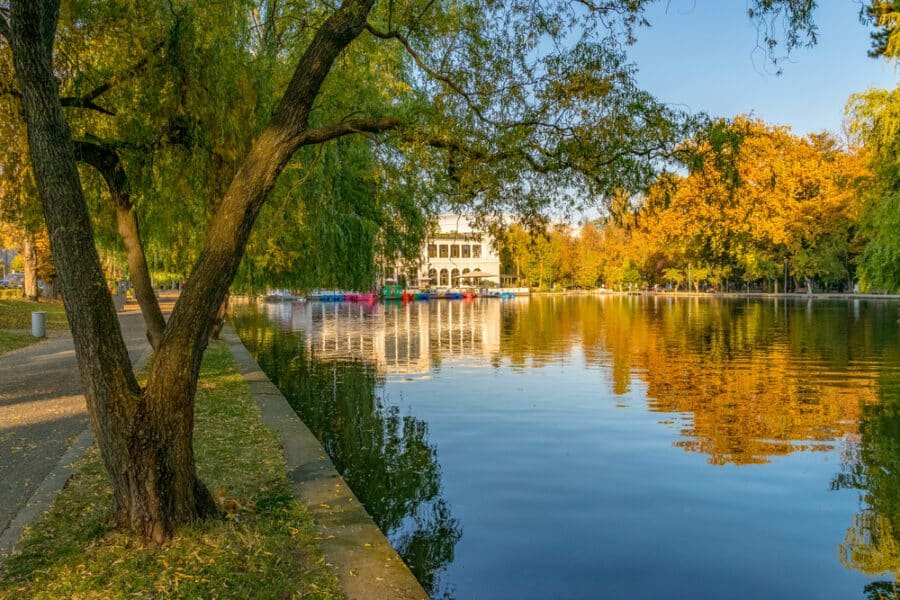
Situated in the historical center of Cluj is Cluj’s biggest public park, the Cluj Central Park. Founded in 1827, Cluj Central Park has served as a prime recreational space for all the residents of Cluj since then. The lush park is perfect for a relaxing evening stroll, allowing guests to reconnect with nature without having to go far briefly, one of those simple yet super-enjoyable Cluj-Napoca activities.
The Central Park of Cluj is often filled with beautiful plants and flowers, but those are far from its greatest attraction. Situated inside the Central Park is a small pond where visitors can ride a hydro bike and paddle across. On the pond’s perimeter, guests will find cafes and restaurants where they can enjoy some delicious refreshments and admire the peaceful views.
The historic Casino is also situated in Central Park of Cluj. Once the perfect place for gamblers, it is now a place for art exhibitions and ceremonial purposes. If you are looking for a relaxing afternoon in the city, Central Park is one of Cluj’s best places to visit .
4. Immerse Yourself In Art At The Cluj-Napoca Art Museum
Art and architecture fans should definitely head to this museum as it’s a wonderful blend of both. The building dates back to the 18 th century and is designed in baroque style. It’s also very easy to reach, as it’s right in the center of the city.
Inside, you’ll find paintings and decorative art by famous artists, including Grigorescu, Luchian, and Paciurea, to name a few.
5. Discover Unirii Square (Union Square), The Biggest Square In Cluj
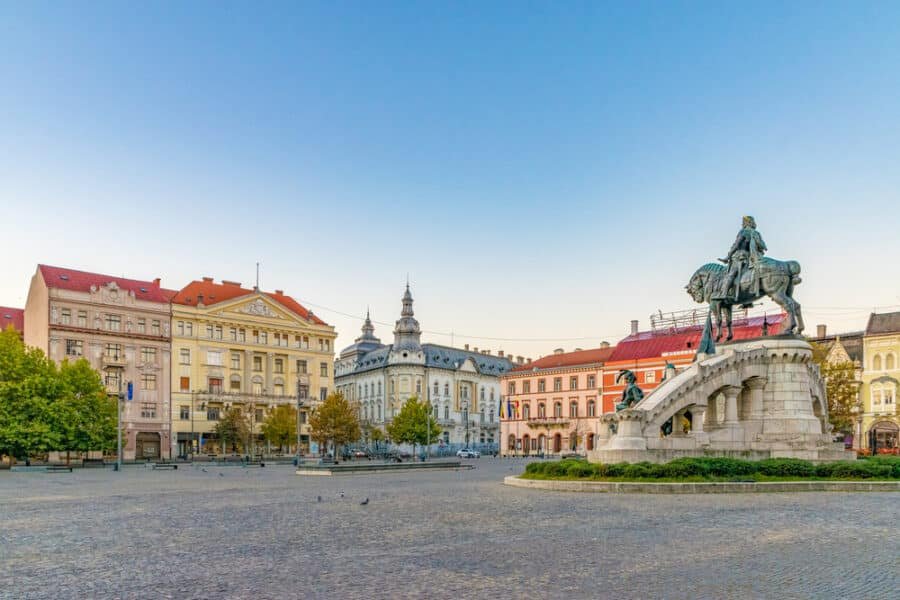
The most crucial feature of Cluj’s historic center is Unirii Square, the largest square in Cluj-Napoca. Union Square contains some of the most historical Cluj-Napoca attractions, such as the Roman Catholic St. Michael’s Church and the statue of Matthias Corvinus, King of Hungary, from 1458 to 1490.
If you don’t have a tour guide with you, you might not grasp Unirii Square’s historical significance. That is why it is important to have a tour guide for this part of Cluj, and there are many walking tours around the city at your service. If you are exploring Cluj without a tour guide, you can still enjoy some of Unirii Square’s biggest attractions, such as checking out St. Michael’s Church.
At 50 meters wide (at the nave) and 80 meters high, St. Michael’s Church is the second biggest church in Transylvania (just after the Black Church in Brasov ). The tower sits 80 meters high (including the 4-meter high cross) and is the highest in Transylvania. On the exterior, the masterful Gothic architecture looms over the Unirii Square, casting its beauty on anyone that passes by.
Exploring the inside of St. Michael’s Church is a must (and free). Visitors will find gorgeous stained glass and numerous artworks in the interior of this architectural masterpiece. When visiting, don’t miss the chance to go up to the church tower, where you will find a stunning bird’s-eye view of the city.
So, if you’re wondering what to see in Cluj-Napoca, we suggest starting at this landmark-dotted square.
6. Understand The Past At The National Museum Of Transylvanian History
Everyone is fascinated with the Transylvanian area, and this museum tells you about it in one easy-to-visit place. There are more than 400,000 artifacts to explore, dating back thousands of years. There are also temporary exhibits from time to time.
The National Museum of Transylvanian History is highly regarded as a European institution, so it’s a spot you should place on your visit list.
7. Learn Romanian Heritage At the Ethnographic Museum Of Transylvania
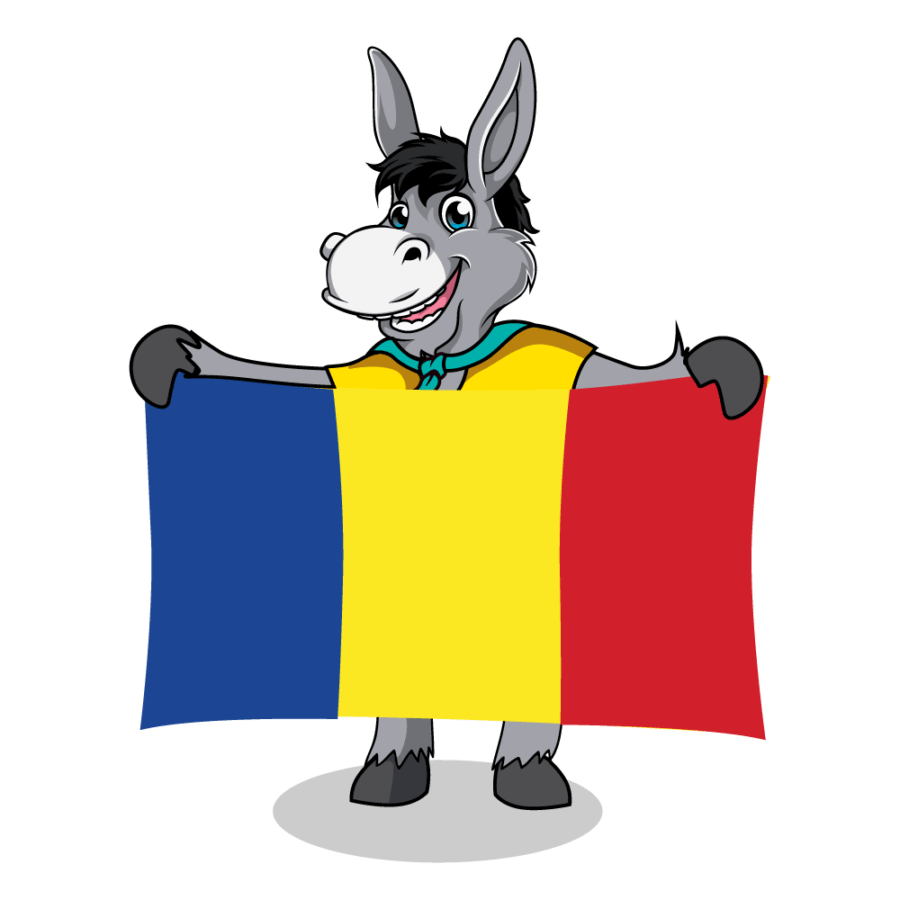
As the capital of the Transylvania region , Cluj-Napoca is the ideal place to learn about its heritage. There is no better place in the city to do so than the Ethnographic Museum of Transylvania.
The Ethnographic Museum of Transylvania consists of two exhibitions: the indoor museum in the historical center of Cluj and the outdoor open-air museum located 10 minutes away. Both are among the greatest Cluj tourist attractions and come highly recommended.
The indoor exhibition is located in Palais de la Redoute. Visitors will find a huge collection of items used throughout Romanian rural life’s history. The collection includes clothes, tools, photos, and a wide selection of scholarly journals and magazines.
The second part of the museum is located about a 10-minute drive (or 40-minute walk) from the Piața Unirii. Known as the Ethnographic Park Romulus Vuia, it is the first open-air museum in Romania . Most objects date back hundreds of years, with the oldest dating to 1678.
In the wide-open space, visitors will find many traditional Transylvania elements, such as old farms, mills, workshops, churches, and various buildings from different parts of Transylvania. Though visitors are not allowed to enter the buildings, just seeing them from the outside and getting close to them is like you have stepped into a time machine! It’s one of those uniquely cool places in Romania .
- Romania’s Historical UNESCO Sites
8. Head Inside Tailors’ Tower
Tailors’ Tower is part of the old fortress, and back in the 15 th century, it was funded by the tailors’ guild to defend the city against invaders. Inside, you’ll find a museum to learn more about the area and the tower itself, but it’s a pretty impressive spot and one of the oldest towers.
9. Check Out The Amazing Hilltop Views From Cetatuia Park
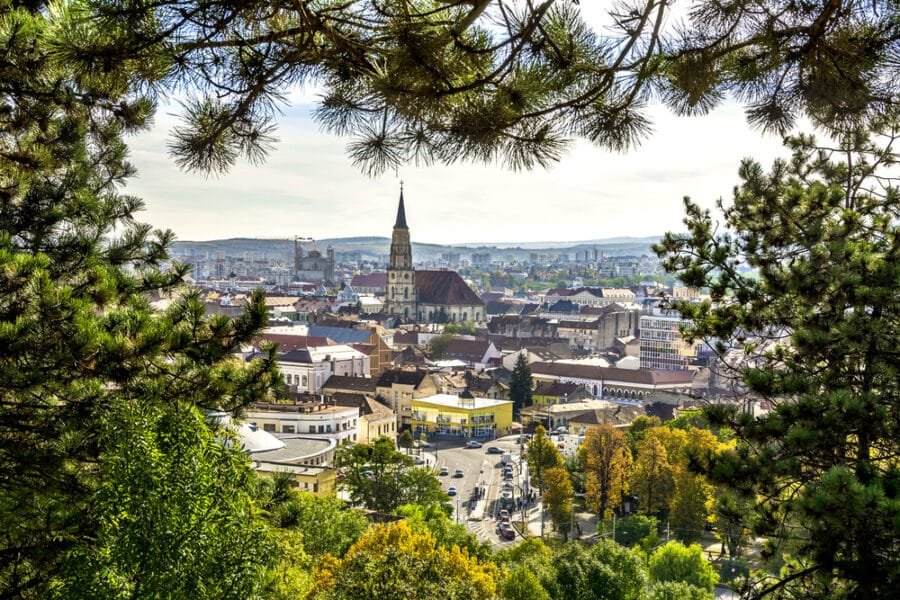
Located across the Someșul Mic River, away from the Old Town of Cluj, is another one of the city’s pristine parks: the Cetatuia Park. A popular destination on Cluj sightseeing excursions, the Cetatuia Park is perched over the hill and offers visitors panoramic views of the city and the surrounding landscape from above.
Lights from every crevice of Cluj illuminate to offer visitors a unique view of Cluj. Its wide-open spaces are particularly ideal for photographers, as they can photograph Cluj from many different angles. Though the views in the daytime are gorgeous, the night views are more sought after. It is no wonder why you will still find plenty of people in Cetatuia Park at night.
In the daytime, locals love to hang out in the Cetatuia Park for some fresh air, walk along the short hiking trails , and enjoy some of the excellent restaurants inside the park.
10. Gather With The Locals At The Statue Of Matthias Corvinus
Matthias Corvinus was a Hungarian king between 1458 and 1490. He was also a Cluj native, having been born there in 1443. The statue was built to commemorate his reign, and you can also head to Hunedoara Castle if you want to learn more, as he was the second son of one of the kings there. Incidentally, the castle is one of the largest in the region.
The land around the statue itself is well worth a visit as it’s a calm and relaxing spot where many locals gather.
11. Take A Day Trip To Salina Turda Salt Mine

Salina Turda is genuinely one of the hidden gems of Cluj Napoca. It is one of the best hidden gems in the entire world. Business Insider has personally ranked Salina Turda as one of the “25 hidden gems across the world that are worth the trek.”
Salina Turda is one of the oldest salt mines in the world. First mentioned in 1075, the Turda Salt Mine remained operational until 1932. Nowadays, you won’t get any salt production here; however you will find that this ancient salt mine has two main reasons to visit.
First, its underground galleries and large, high-ceiling caverns host an unusual amusement park.
Inside the Rudolf Hall of the Salina Turda, you will find bowling alleys, ping pong tables, billiards, theaters, mini-golf courts, and more entertainment to keep everyone in the family entertained. However, that isn’t all. Its most iconic feature is the 20-meter-tall Ferris wheel that makes you question, “How did they get that thing in here?”
Descend from Rudolf Hall into the Theresa Mine, and you will find the 6-meter deep underground lake. Visitors can rent a boat and row it around for 20 lei, taking in the gorgeous views and health-enhancing salty air.
Visitors will also enjoy the artificial lighting installations. Everything was designed to highlight the salt mine’s natural beauty and artificial galleries and give visitors a magical experience.
Second – well known among Romanians but less so by foreign tourists – is that inhaling salty air is good for your lungs and treats respiratory diseases. This is something even the Romans knew! Romanian doctors regularly prescribe salty air therapies and Turda Salt Mine, along with other salt mines such as Praid or Ocnele Mari, is a preferred destination for this.
What do you have to do to get these health benefits? Nothing! Just spend 2-4 hours in the mine. Take a tour to learn about its salt exploitation history and the interesting tools used, play some games or bring a book with you. Beware, though, as no food or drinks (other than still water) are allowed inside the mine as they will interfere with the air!
Salina Turda, is located about 45 minutes from Cluj-Napoca by car, making it an excellent day trip . If you haven’t rented your own vehicle, taking a taxi or an organized tour is recommended to get there. This is a fantastic excursion if you’re spending a weekend in Cluj.
- Peaceful Places To Visit In Romania
12. Visit The Assumption Cathedral, AKA Dormition Of The Theotokos Cathedral
The Assumption Cathedral (also known as Dormition of The Theotokos Cathedral) is a beautiful Romanian Orthodox Cathedral located in the heart of Cluj-Napoca. Constructed between 1923 and 1933, the cathedral is built in a Romanian Brâncovenesc style, combining Renaissance and Byzantine architecture.
Visitors can admire the 64-meter-high structure at the Avram Iancu Square. They will also find the National Theater and a statue of Avram Iancu, a prominent figure in the Austrian Empire Revolutions.
When you are done admiring its eight towers and four bells from afar, make sure you visit inside. Though the exterior is the most stunning part of this structure, the interior is far from lackluster. It is also completely free to enter, so there is really no reason to miss out!
13. Parcul Central – Parcul Cetátuia
Parcul Central in Cluj-Napoca, Romania, is the quintessential urban oasis that beckons both locals and visitors alike. Nestled in the heart of the city, this sprawling park offers a breath of fresh air and a slice of nature’s tranquility.
As you step into Parcul Central, you’re greeted by a vibrant sea of greenery—lush lawns, towering trees, and colorful flowerbeds that set the stage for a perfect picnic or a leisurely stroll. But the park has more to offer than just its verdant beauty.
A picturesque lake takes center stage, inviting you to hop on paddleboats and bask in the sun during warmer months. Nearby fountains lend a soothing soundtrack to your visit, creating an atmosphere of serenity.
Among the park’s many treasures are statues and monuments, including the Monument of the Heroes, a poignant reminder of Cluj-Napoca’s rich history and the sacrifices made during World War I.
For families, Parcul Central is a playground haven, complete with play structures that keep kids entertained for hours. And if you’re inclined to stay active, well-maintained walking and cycling paths provide the perfect backdrop for exercise and outdoor adventures.
When you need a break, the park’s cafes beckon with refreshments and snacks. Plus, Parcul Central is a hub for cultural events and festivals, adding a touch of local flavor to your visit.
But perhaps the park’s most valuable asset is its ability to offer relaxation amid the urban hustle and bustle. It’s a place to unwind, dive into a good book, or savor the serenity.
In Parcul Central, Cluj-Napoca offers not just a recreational space but a cultural haven, a natural retreat, and a breath of fresh air in the heart of the city. It’s the perfect locale to spend a leisurely day in the great outdoors, surrounded by the beauty of this vibrant Romanian city.
14. Cluj-Napoca Botanical Garden, AKA Alexandru Borza Cluj-Napoca Botanical Garden
If you have extra time on your visit to Cluj, don’t hesitate to pay a visit to the Cluj-Napoca Botanical Garden. Spanning over 14 hectares in area, this Botanical Garden is home to over 10,000 different species of plants worldwide. Visitors can learn about the Romanian flora and vegetation from Transylvania and the Carpathian Mountains , one of the nicest things to do in Cluj if you have an extra day.
Besides a wide variety of plants, the Botanical Garden is set up with themes in mind. For example, the most popular theme is the Japanese Garden, where visitors will find plants native to Japan and a traditional Japanese house. Another popular theme is the Roman Garden, where there stands a statue of Ceres and prominent plants in Romanian agriculture.
If you are traveling with kids in Cluj, consider visiting its Botanical Garden! The entrance fee is 5 lei per person (at the time of writing).
Brands We Use And Trust
What food to eat in cluj.
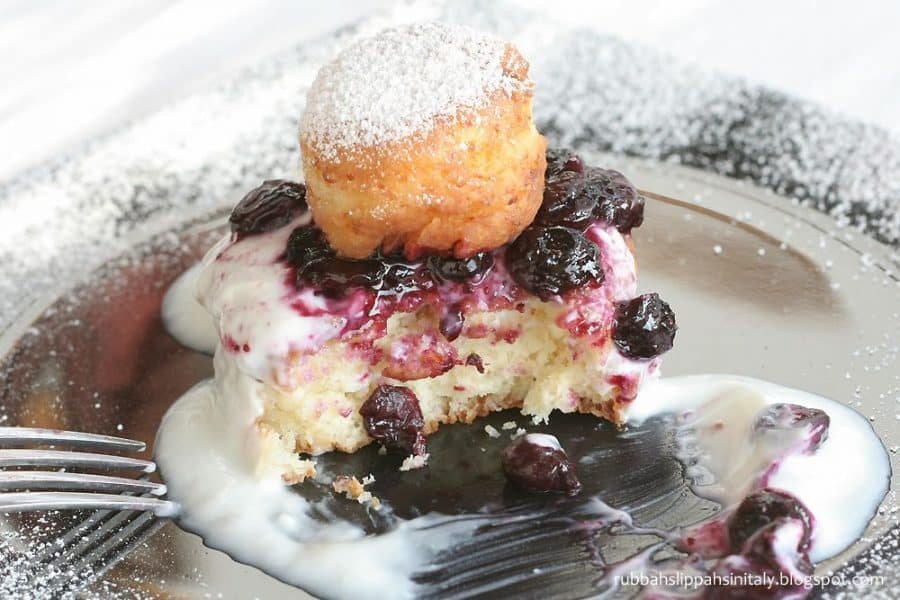
When in Cluj-Napoca, Romania, you’ll have the opportunity to savor a variety of traditional food options in Romania . Here are some of the places to eat all the must-try foods in Cluj:
- Mămăligă cu Brânză și Smântână. A traditional Romanian dish, mămăligă is a cornmeal porridge similar to polenta, often served with brânză (cheese) and smântână (sour cream). It’s a comforting and hearty option
- Sarmale. These are pickled cabbage rolls stuffed with a flavorful mixture of minced meat (usually pork or beef), rice, and spices. They are often served with smântână
- Mici. Known as “Mititei,” these are small grilled sausages made from a blend of minced meat (typically a mix of beef and pork) seasoned with garlic, paprika, and other spices. They are a popular street food.
- Varză a la Cluj. This is a local specialty in Cluj, consisting of cabbage rolls filled with a mixture of minced meat, rice, and spices, simmered in a tomato-based sauce
- Ciorbă de Perișoare. A sour meatball soup, typically made with beef or pork and flavored with sour cream and herbs
- Papanași. A delicious Romanian dessert, papanași are fried or boiled dumplings made from cottage cheese, covered with sour cream and fruit preserves. They are a sweet treat worth trying.
- Țuică: This is a traditional Romanian plum brandy, a strong alcoholic beverage often served as an aperitif or alongside meals
- Local Pastries. Explore local bakeries for a variety of pastries and desserts, such as cozonac (sweet bread), plăcinte (pastries filled with cheese, apples, or other ingredients), and clătite ( pancakes ) served with various fillings
To experience the full range of flavors in Cluj, consider dining at local restaurants, exploring street food vendors, and trying dishes that showcase Romania’s rich culinary traditions.
How To Get To Cluj-Napoca
Getting to Cluj-Napoca, a major city in Romania’s Transylvania region, can be done via several modes of transportation, depending on your starting location and preferences:
Avram Iancu Cluj International Airport (CLJ) is the main gateway for international and domestic flights. The Cluj-Napoca airport is well-connected with major cities across Europe through regular flights operated by various airlines, including low-cost carriers. From the airport, you can take a taxi or bus, or rent a car to reach the city center, approximately 10 km away.
To reach Cluj-Napoca by train, you can start in Bucharest (the capital), as well as other major cities in Romania and some neighboring countries. The train station is centrally located, and trains offer a scenic, albeit slower, mode of reaching the city.
Numerous bus companies operate services to Cluj-Napoca from Romanian cities and various European destinations. Buses usually terminate at the central bus stations, which are conveniently located within the city.
If you’re coming from within Romania or neighboring countries, driving to Cluj-Napoca is a viable option. The city is accessible via major highways and roads. The A3 motorway connects Cluj-Napoca with Bucharest and other parts of the country, offering a fast and convenient route for drivers.
Move This Adventure To Your Inbox & Get An Instant Freebie

No spam. Unsubscribe at any time.
Where To Stay In Cluj
Accommodation in Cluj Napoca is varied and inexpensive; here are just a few suggestions to get you started.
Luxury Nook
Location: City center.
Why book: Tastefully decorated apartment, centrally located, air-conditioning, high-speed wifi, and is one the best places for affordable luxury. Check out the hotel & prices here ↳
Hotel Platinia
Location: Near Ursus Brewery, Central Park, and Cluj Arena.
Why book: Five-star luxury, well-equipped rooms with free wifi, hardwood floors, comfortable fabrics, walk-in showers, dressing room, sofa, television, and prime location near attractions. Check out the hotel & prices here ↳
Villa-Hotel Escala
Location: In a residential area.
Why book: Warm and welcoming owners, large air-conditioned rooms, quiet garden with a pool, and useful information from the owners, it’s a lovely place. Check out the hotel & prices here ↳
Sungarden Golf & Spa Resort
Location: Countryside.
Why book: Outdoor pool, sauna, relaxation room, Turkish bath, 9-hole golf course, outdoor bars, spacious rooms with luxury amenities, and private terrace. Check out the hotel & prices here ↳
Apartment Vintige
Location: In the heart of Cluj.
Why book: Close proximity to St. Michael’s Church and cafes, beautifully decorated apartment, and complimentary bike for easy exploration. Check out the hotel & prices here ↳
Garden City Apartment
Location: A little further out of town.
Why book: Ridiculously cheap residential apartment with a quiet garden and fully-equipped kitchen. Check out the hotel & prices here ↳
FAQs About Visting Cluj Napoca
What landmarks can i visit in cluj, romania.
Notable attractions include Parcul Cetátuia for its beautiful city views, the Romanian National Opera House for a rich cultural experience, and St. Michael’s Church for its historic significance.
What outdoor activities are there in Cluj?
Outdoor activities in Cluj are plentiful, including visiting the Botanical Garden, attending a CFR Cluj football game, and participating in several walking tours.
What food is unique to Cluj?
A local delicacy that you must try is “papanași”, which are Romanian doughnuts.
Can I take a day trip from Cluj?
Yes, there are numerous day trip options, which include visiting the Turda Salt Mine and exploring the Apuseni Mountains.
Can I experience art and cultural events in Cluj?
Indeed. Cluj hosts numerous music and art festivals and is home to the Bánffy Palace Museum of Art.
Where can I shop for souvenirs in Cluj?
The local market in Cluj is a great place for souvenir shopping, where you can find traditional items like Romanian embroidered shirts.
We hope this Cluj-Napoca guide filled with things to do around Cluj has given you the proper information to plan your visit to this hidden gem in Romania!
- Romanian Food
- What To See When You Visit Romania
- Things To Do In Romania
- Bucharest Tours
- Things To Do In Brasov, Transylvania
- Where To Stay In Brasov
- Things To Do In Maramures
- Weekend Itinerary In Oradea
- UNESCO Villages With Fortified Churches
- Where To Stay In Bucharest
- Winter Travel In Romania
Initially written by Sean Lau of LivingOutLau and updated by the Chasing the Donkey team.
Leave a Reply Cancel reply
Your email address will not be published. Required fields are marked *
Save my name, email, and website in this browser for the next time I comment.
This site uses Akismet to reduce spam. Learn how your comment data is processed .
Subscribe To Unlock Your FREE Customizable Travel Packing List & All Our Best Tips!
Unlock Your FREE Customizable Travel Packing List!
Subscribe Now For Instant Access To Stress-Free Packing

- Two Castles in One Day Tour – 12 hours
- Bucharest City Tour by Night – 1.5 hours
- Bucharest City Tour & Wine Tasting – 2.5 hours
- Bucharest Evening Tour & Traditional Dinner – 3 hours
- Unhealthy Food Tour of Bucharest – 4 hours
- Half-Day Tour of Bucharest – 4 hours
- The Last Days of Communism Tour – 4 hours
- Mogosoaia Palace & Snagov Monastery Tour – 5 hours
- Wines of Wallachia Tasting Tour – 8 hours
- One Day Tour from Bucharest to Constanta – 10 hours
- The Real Dracula Tour – 11 hours
- Experience Bulgaria Tour – 11 hours
- Transylvania Break Tour – 2 days
- Danube Delta Tour – 2 days
- Transfagarasan & Medieval City of Sibiu Tour – 2 days
- Medieval Transylvania Tour – 3 days
- Private Half-Day City Tour of Bucharest – 5 hours
- Private Full-Day Sightseeing Tour of Bucharest – 8 hours
- Slanic Salt Mine & Wine Tasting Tour – 8 hours
- Peles Royal Castle & Wine Tasting Tour – 9 hours
- In the Footsteps of Dracula Tour – 11 hours
- Private Trip to Peles Castle & Bran Dracula Castle – 12 hours
- One Day Tour to Bulgaria – 11 hours
- The Black Sea & Danube Delta Tour – 2 days
- Medieval City of Brasov Tour (Kronstadt) – 2 days
- Medieval City of Sibiu Tour (Hermannstadt) – 2 days
- Bucovina & Transylvania Tour – 3 days
- Romanian UNESCO Heritage Tour – 4 days
- Magic Transylvania Tour – 4 days
- Transylvanian Medieval Castles & Fortified Churches Tour – 4 days
- Maramures, Bucovina & Danube Delta Tour – 5 days
- Transylvania – 12 tours
- Bucharest – 9 tours
- Muntenia Wallachia – 8 tours
- Danube Delta – 3 tours
- Bucovina – 3 tours
- Bulgaria – 2 tours
- Maramures – 1 tour
- Tour Search
10 Best attractions in Cluj Napoca That You Shouldn’t Miss
The 10 best attractions in Cluj Napoca ? If you are the explorer that we know you are, and you happen to want to check out the fairyland that is Transylvania, a pit stop in Cluj Napoca is a definite must. Home to some of Europe’s most famous festivals, be it music or film, Cluj Napoca is a vivid place, one that will fill you up with good energy.
We have put together the 10 best attractions in Cluj Napoca . Either if you want to see the tourist attractions in Cluj Napoca , or want to see it as a local, you are in for a treat. Here are the best places in Cluj Napoca .
Explore the 10 best attractions in Cluj Napoca
What you should know, before anything else when you decide to visit Cluj Napoca (often called Cluj) you should know that, like most cities in Europe, Cluj Napoca is a combination of historical landmarks, modern architecture, and future like hotspots.
So, to be honest, deciding to name 10 best attractions in Cluj Napoca was not an easy task, but we managed to narrow it down to the following:
1. Union Square – Saint Michael’s Church and the Statue
Situated in the center of Cluj Napoca, Union Square is one of those meeting points, everyone knows where it is! Why is it one of the best attractions in Cluj Napoca? Well, it’s rather great to grab a pretzel and a coffee, and lay in the sunshine.
Union Square is home to open-air events in Cluj Napoca, such as the well-known TIFF Festival . Saint Michael’s Church is one of the most visited tourist attractions in Cluj Napoca , and it’s situated in Union Square. It now serves as a catholic church hosting multiple gatherings throughout the week.
Saint Michael’s Church is over 600 years old, impressive by size, architecture, and inside details, and one of the top tourist attractions in Transylvania .
Right by Saint Michael’s church, you can see the impressive statue of horseback Matthias Corvinus, a famous Hungarian king of the 15th century. Going to Cluj Napoca’s Union Square makes to cut off your list three of the best attractions in Cluj Napoca .
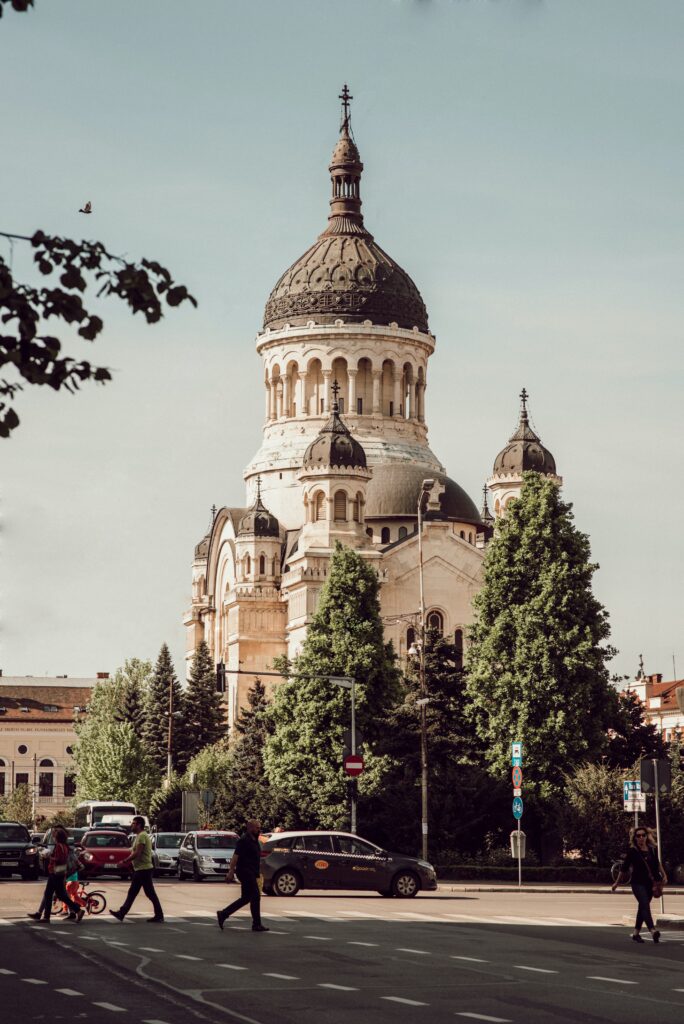
2. Museum Square
This top attraction in Cluj Napoca is a favorite of ours, for good reasons. But let us starts with the beginning, shall we? The Museum Square, located in the center of the city, is one of the oldest markets in the city. It gets its name after the Transylvania History Museum located within the square.
Although it is not a huge area, it is one of the top attractions in Cluj Napoca because of the density of historical landmarks and buildings. Also, plenty of restaurants and cafes- the perfect place to spend a day. Have we mentioned it’s 100% pedestrian? It is loved equally by locals and tourists as it is a top tourist attraction in Cluj Napoca .
Within the square you will find the Franciscan monastery church building- is one of the oldest buildings of the city. Read more about it here .

Here are a few amazing restaurants that you should check out when in Museum Square:
1. Charlie Pub & Restaurant
- Address: No.3 Museum Square, Cluj Napoca
- Contact: +40 741 055 821
- Email: charliepub.ro

Marty Restaurants Muzeului
- Address: No.2 Museum Square, Cluj Napoca
- Contact: +40 736 368 791
Muura Steak House
- Address: No.2 Franklin Delano Roosevelt Street, Cluj-Napoca
- Contact: +40 733 051 562
3. Avram Iancu Square
Avram Iancu Square is situated in the western part of the old city walls and it was initially a market. It is one of the best attractions in Cluj Napoca because of the rich history of the place, and the special meaning that it has today.
The square is guarded by three bastions and gates. At the end of the 19th century, the walls and gates were demolished, and a small park was arranged in the square.
Today, some of the top tourist attractions in Cluj Napoca are located in the Avram Iancu Square area: National Theater , the Orthodox Cathedral, the office of the Cluj Prefecture, or The Palace of Justice.

4. Botanical Garden
Are you a fan of the wonder that is Mother Nature? Brace yourself for an absolute must on our best attraction of Cluj Napoca list.
The Botanical Garden is located in the south of Cluj Napoca. It covers an area of 14 hectares, and it is home to over 10000 species from all around the world. So yes, you can easily spend an entire day in this top attraction in Cluj Napoca .
Inside the garden, there is a Botanical Museu m- over 635 000 species of plants can be examined and admired here. Besides the museum and the garden itself, you will find glasshouses, which ensure a proper environment for exotic plants. Interesting fact : it is believed that smokers cough a lot when they enter the glasshouses.
- Opening hours: 15 May-15 Sept, from 9.00-20.00; glasshouses: 9.00-18.00
- Opening hours: 16 Sept-14 May, from 9.00-17.00; glasshouses: 9.00-16.00
- Contact: +40-264-592-152
- Email: [email protected]

5. Cetățuia Hill and Park
Cetățuia Hill is definitely one the most popular attraction in Cluj Napoca. And it’s not just because of the view, which is, by the way, an absolute delight for the eyes and soul during sunset. The perfect view over the city center, an out-of-the-box way to admire the city’s architecture.
But this is not the only reason why Cetățuia Hill is one of the best attractions in Cluj Napoca . This is the place where a majestic fortress was built by the Habsburgs . You can still see some of the old gates of the fortress. Even if you are not a history fan, you would still thank yourself for coming here and escaping the noise of the city.
6. The Pharmacy History Museum
Here is a different kind of a museum- not hard to understand that it wasn’t hard to introduce it on our best attractions in Cluj Napoca list.
The Pharmacy Museum or The Pharmacy History Collection is today located in the oldest pharma building in Cluj Napoca, built-in 1573. The collection of over 1,800 pieces is a display of pharma activity in Transylvania between the 16th and 20th centuries. In order to keep the pharmacy rooms as close to the original settings as possible, the furniture inside dates back to the 17th century as well.
Such a delight for both locals and visitors. Convinced that the Museum of Pharmacy is a top tourist attraction in Cluj Napoca yet?
7. Central Park
Home to Untold Festival , to Sunday walks and brunches. Central Park is a sanctuary for locals and a top tourist attraction in Cluj Napoca. It was founded in 1827 and it’s the main green oasis in Cluj-Napoca.
Yet another great thing about Central Park is that it has a lake right in the center. If you feel like exercising, you can rent a boat.

8. Turda Salt Mine
Without any doubt, one of the best attractions in Clu j. The Salt Mine is located close to the city of Turda, which is about 30 km from Cluj Napoca.
Turda Salt Mine has a history of over 2000 years, well-preserved galleries, and a futuristic attraction deep underground. It is the largest salt mine museum in the world, and, needless to say, incredible.
We are not the only ones to say that, Business Insider ranked Turda Salt Mine as the most beautiful underground place in the world . There is no place for boredom! Amongst the things you can find there, we would like to mention: an amphitheater, an underground lake that anyone can explore with paddles, a Ferris wheel, bowling alley, table tennis, pool tables, spa treatment rooms with natural aerosols.
So if it’s considered one of the coolest places on Earth, who are we not to consider it a top tourist attraction in Cluj. We have written an entire article about Turda Salt Mine, you can read it here.
9. Hoia Baciu Forest
For the fans of the supernatural, or for those who are just curious, Hoia Baciu Forest occupies a leading position in our list of best attractions in Cluj Napoca.
Hoia Baciu Forest became famous after, legend has it, a Shepard went missing with his 200 sheep, never to return.
Later on, in 1968, the forest gained international attention after a military technician stated he saw a UFO above a part of the forest. The zig-zag shaped trees that no scientist was able to explain, the strange noises, feeling of nausea, fatigue, and failure of electronic devices is what makes Hoia Baciu Forest a top tourist attraction in Cluj.
If you decide to check it out, you should know that there are tours around the forest, and you can even camp overnight. Are you in?

10. Ethnographic Park Romulus Vuia
The ethnographic park was the first open-air museum in Romania and it was established in 1929, by the ethnologist Romulus Vuia. There were outlined 4 thematic sectors: one with regional types of farmsteads and with monuments of architecture, one with peasant workshops, a botanic sector, and a zoological sector with animals of local breed.
A perfect place to learn more about Transylvanian culture and customs, which is why we believe it’s one of the best attractions in Cluj Napoca.
You might be interested to learn more about the top things to visit in Cluj county, Transylvania .
Best places to taste traditional Transylvanian food in Cluj Napoca
Of course, you cannot make a list of the best attraction in Cluj Napoca and not include food and places to eat. A warm recommendation is to try Panemar – they are specialized in bread and pastry products.
Almost every local buy their daily bread from a Panemar kiosk. There are dozens of Panemars all around Cluj Napoca, so it would be rather hard not to find one. We heartwarmingly recommend their bread, sandwiches, and croissants. Now let us have a look at a few restaurants:
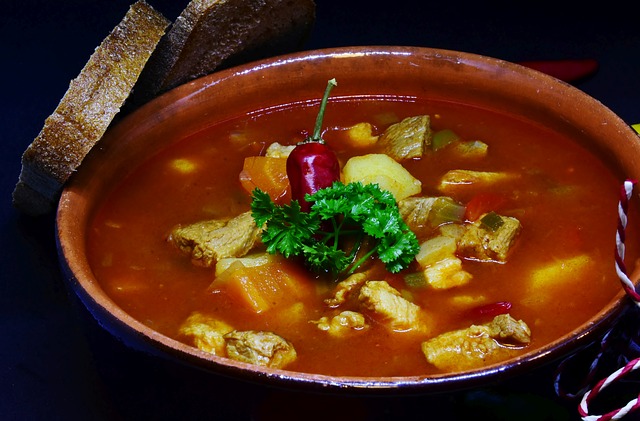
1. Rod Restaurant
- Specialty: Fish Soup (Storceag de peste)
- Address: No.160 Calea Turzii, Cluj Napoca
- Phone: 0737 732 425
2. Roata Restaurant
- Specialty: mititei and ciorba de burta
- Address: No.6 Alexandru Ciurea Street, Cluj Napoca
- Phone: 0264 592 022
3. Valachia Restaurant
- Specialty: beef belly steak
- Address: No.27 Govora Street, Cluj Napoca
- Phone: 0264 427 588
4. Varzarie Restaurant
- Specialty: varza a la Cluj (Cluj-Style cabbage)
- Address: No.37 Eroilor Blv., Cluj Napoca
- Phone: 0264 595 064
5. Zama Restaurant
- Specialty: Transylvanian potato salad/ Transylvanian omelette + elderflower beverage
- Address: No.16 Napoca street, Cluj Napoca
- Phone: 0755 080 777
All of the above-mentioned restaurants have takeaway options. Nonetheless, we highly recommend going there. All of them have traditional Transylvanian decor, for a genuine experience.
Best time to visit Cluj Napoca, Transylvania
Now, we know you want to make the most out of your trip. And let’s face it, in order to really enjoy the best attractions in Cluj Napoca , the weather has to be on your side.
Romania’s climate is temperate-continental, with four seasons- you can read an entire article about the weather in Romania here. Here is something to keep in mind when visiting Cluj Napoca, and Cluj county in general. The location is central-northern, near Apuseni mountains in the west. This means that temperatures would be a little bit lower than in the southern part of the country, for example.
So, to make the most out of the top tourist attractions in Cluj Napoca , we recommend visiting:
- March to May- spring season , if you want to take hikes, walks in the forest ( Hoia Baciu Forest or Turda Gorges , for instance)
- June to August- summer season , if you are into music festivals (such as Untold or Electric Castle ), film festivals (such as TIFF ), or open-air shows and museums.
- September to November- autumn season, if you want to focus your visit on museums, castles, and art galleries
- December to February- winter season , if you are a fan of winter sports.

Free walking tour in Cluj Napoca
To be honest, there is no better way to learn about a place than by discovering it with a local. And if you feel more comfortable not having to look up places to see in Cluj Napoca , we have some good news.
Cluj Guided Tours offers free walking tours for anyone who is interested. The team is all local, passionate, and super nice- something typical for Transylvanian people. They also have other types of tours:
- Thematic tours
Specialty coffee shops in Cluj Napoca
Specialty coffee is a rather young concept in Romania, but gaining speed fast.
Cluj Napoca was the first city in Transylvania, and 3rd in Romania to have a specialty coffee roastery. Today the number increased by a dozen, and specialty coffee shops are in high demand. Coffee is the fuel humans run on, so we had to include it on our list of best attractions in Cluj Napoca .

1. Meron Coffee
- Address: multiple locations across Cluj Napoca and Romania. This is one: No.19 Ștefan cel Mare Square, Cluj Napoca
- Contact: https://www.meron.coffee
- Origins: Brazil, Ethiopia, Panama.
2. YUME Coffee
- Address: No.21 Victor Babeș Street, Cluj Napoca
- Contact: https://yume.coffee
- Origins: Brazil, Guatemala, Rwanda, Ecuador, Columbia, El Salvador.
3. Tucano Coffee Puerto Rico
- Address: No.19 Eroilor Blv., Cluj Napoca
- Contact: https://www.tucanocoffee.com/en/
- Origins: Ethiopia, Kenya, Honduras
4. The Green Specialty Coffee
- Address: No.2 Matei Corvin Street, Cluj Napoca
- Contact: https://www.facebook.com/thegreenspecialtycoffee/
- Origins: Kenya, India, Ecuador.
Shopping in Cluj Napoca
Either we like to admit it or not, the truth is we all love shopping. It just is something about buying things when traveling, isn’t it? And not just souvenirs… everything and anything. If you agree with us, these are best attractions in Cluj Napoca when talking about shopping:
1. Iulius Mall Cluj Napoca
- Shopping: over 60, amongst which ZARA, The Body Shop, Sephora, Massimo Dutti, Guess
- Dining: over 30, amongst which Dashi Japanese, Cartofiserie, Salad Box, Chopsticks
- Entertainment: Carturesti Bookstore, Cinema City, Air Hokey, F1 Simulator
- Address: No.53B Alexandru Vaida Voievod street, Cluj Napoca
- Website: http://iuliusmall.com/cluj/?lang=en
2. Vivo Mall Cluj Napoca
- Shopping: 110, amongst which Aldo, Tom Tailor, Oysho, Pandora, H&M, LEGO, Lacoste
- Dining: over 40, amongst which Wasabi Running Bar, Pep&Pepper, Marty, Ciao Ragazzi, KFC
- Entertainment: Dino Land, Thron Games, Zoo Karting, Cinema City
- Address: No.500 Avram Iancu Street, Floresti, Cluj
- Website: https://vivo-shopping.com/en/cluj-napoca
That’s a wrap for best attractions in Cluj Napoca. In hope that you found this article useful, we really do want you to fully enjoy your trip to Cluj Napoca.
If you are interested in top things to do and see in Transylvania read more about it in this article.
Feel free to let us know if there is any additional information you might need. Contact us and we will answer as soon as we can.
Why Book With Us?
- Small-groups always
- Certificate of Excellence
- Fun & Friendly local guides
- Customer care available 24/7
- 15+ years experience
Tour Categories
Tour destinations, blog categories.
Top Things to Do in Cluj-Napoca for the First Time Visitor
Home » Visit » Travel Ideas » Top Things to Do in Cluj-Napoca for the First Time Visitor
- Attractions in Transylvania
- Travel Ideas
- things to do
- Transylvania
- travel tips
Diana Condrea
If you are planning a trip to Transylvania, be sure to save a few days for Cluj-Napoca. You’ll be delighted for sure as this is today one of the trendiest cities in Romania for the young. Our insider guide to the top things to do in Cluj-Napoca will help you make the best out of your time in this cool place that dates back to ancient times.
1. See the city from above
This should definitely be on your list of things to do in Cluj-Napoca. In fact, we suggest you do it before visiting the city. You’ll get the best view from an old fortification point known as Cetatuia that dates from the time of the Habsburg Empire. The fortification was built in 1735, on q taller hill outside the city, as a strategic point of defense and observation.
Catch the sunrise from Cetatuia for some great photos of Cluj-Napoca.
2. Visit the Botanical Garden
A visit to the Botanical Garden is one of the great things to do in Cluj-Napoca for a first-time visitor. One of the must-see attractions, the Botanical Garden was founded by Professor Alexandru Borza from the University of Cluj-Napoca back in 1925. It’s today one of the most popular places in the city, with over 150,000 visitors every year.
The Botanical Garden
3. An evening at the National Theater or the Romanian Opera
Spending an evening at the National Theater or the Romanian Opera will be one of your favorite things to do in Cluj-Napoca if you enjoy cultural events. Across the street, in Avram Iancu Square, you’ll see the Metropolitan Cathedral, built between 1920 to 1930, the third-largest cathedral in Romania and a symbol of the Orthodox Church in Transylvania.
Check the events schedule on www.operacluj.ro
The Opera House
4. Visit Saint Michael Church
Unirii Square is the central attraction of the city and the place where you can find the second largest Gothic church in Romania. The construction of Saint Michael Church began in the 14th century and the monument remains until today one of the most impressive in the country. The church is guarded by the statue of Matias Corvin, one of the greatest rulers of the Hungarian Kingdom, the son of Ioan of Hunedoara, a true hero of the anti-Ottoman wars.
You can discover more about the two princes at Corvin Castle .
Saint Michael Church
5. Relax in the Museum Square
The dense network of small streets in this area makes it a great place for walking around the historical part of Cluj-Napoca. Important old monuments you’ll see are Matias Corvin’s house, the 13th-century Franciscan church, Mikes Palace, and the 1817 Obelisk dedicated to Francis the 1st and his wife, Carolina, the first Austrian emperors who visited the city.
6. Travel back in time
A visit to the open-air Romulus Vuia National Ethnographic Museum is for sure one of the top things to do in Cluj-Napoca. The traditional houses and installations people used back in the day will take you on an interesting and interactive cultural trip. You will see what methods were used for woodworking, grinding grains, modeling clay, how gold used to be obtained, and many other bygone activities.
7. Walk as much as possible
Cluj-Napoca has lots to offer, especially if you take longs walks and you let it surprise you. Check the Central Park, ride a bike, or just experience the feeling of being surrounded by nature right in the middle of a crowded city. Lose yourself on the streets and don’t be shy to ask for advice, locals are friendly and proud to show off their beautiful city.
Decorative elements, historical house
8. Engage in an original pubbing experience
Not only the city has some of the best universities in the country, but also some of the coolest pubs. For sure, one of the best things to do in Cluj-Napoca is to explore its trendy pubs and bars where you can grab a beer or enjoy a delicious meal. You have plenty of options to keep your evenings occupied.
9. Join the festival fever
Romania is quickly becoming a major festival destination, and Cluj-Napoca is no exception. The city hosts some of the most popular events. Are you a film fan? There is Transylvania’s International Film Festival with select international participation. Do you love jazz music? There is Jazz in the Park. And let’s not forget major music festivals like Untold and Electric Castle .
Untold Festival
10. Go outside Cluj-Napoca
There is plenty to see and do everywhere in Transylvania, including close to Cluj-Napoca. You can visit the world-famous salt mine from Turda, spend a day at Belis Lake, or take a one day trip to Apuseni Mountains. Horseback riding, paragliding, and hiking are among the best options for an active day away from the city.
Turda Salt Mine
Photo by Cristian Bortes via ro.wikipedia.org
We hope our guide to the top things to do in Cluj-Napoca for first-time visitor will make you curious because the city has so much more to offer.
If you’re already planning your vacation in Cluj-Napoca, don’t forget to book your accommodation in time especially if you’re going to one of its many festivals.
Where to stay
You have many options, depending on your budget and preferences. If you prefer a hotel, we recommend Hotel Capitolina City Chic and Lol et Lola Hotel . Booking an apartment is also a solid option as there many available choices. We recommend Cluj Apartments , Apartament Belvedere , Cluj ApartHotel , and Central River Apartment.
Related posts
Seven romanian castles and palaces you shouldn’t miss, best things to do in romania for first-time visitors, the most beautiful roads in romania you should drive, leave a reply cancel reply.
Your email address will not be published. Required fields are marked *
Save my name, email, and website in this browser for the next time I comment.
I have read and accepted the Privacy Policy *
Travel tips
Location: Cluj-Napoca, Cluj County
Nearby attractions: Turda Gorges, Apuseni Mountains
Access: International Airport Avram Iancu, E81 from Bucharest
- No translations available for this page
Automated page speed optimizations for fast site performance

Best things to do in Cluj-Napoca, Romania, in one day (A Complete Cluj Travel Guide)
Cluj-Napoca has become one of the top cities to visit in Romania since it evolved into a vibrant and artsy cultural centre of Transylvania.
Many hear about it when the notorious music festivals started to attract international music lovers, and it transformed it into a destination for travellers looking for the comfortable but affordable city life in Romania. After visiting Cluj a few times, I want to share with your some of the top places and best things to do in Cluj-Napoca.
You can save all the places for later on your Google Maps (the complete Cluj-Napoca travel guide on Google Map ):
Don’t have time to read all about Cluj now? Save this post for later on Pinterest!

What are the best things to do in Cluj-Napoca?
Cluj-Napoca is the second-largest city in Romania , after Bucharest, the capital city. But in the last decade, Cluj has been lucky enough to absorb all the great lifestyle influences of the western lifestyle, as it is closer to Budapest than it is to Bucharest.
Today, I find Cluj more similar to central-European cities, not judging just by the appearance of the city, but also by the way the people act and live their lives in general. Coming from Bucharest, I can clearly see a difference between the two cities, and I understand why many adults choose to move to Cluj from Bucharest.
With that in mind, let’s discover the best things to do in Cluj-Napoca.
Cetatuia (Parcul Cetățuia)
Cetățuia Park is one of the top places to see when visiting Cluj-Napoca as it offers a beautiful view of the city. It is a popular meeting place for couples and teenagers during the evening to admire the lights of the city.
This hilly park is actually a 1735 military fortification that has star-shaped walls, that used to have several bastions protecting it. It was built during the Habsburg occupation, to protect the city. Over the years, the fortification has been through many transformations, being used as a prison, serving as a home for the poorest inhabitants in Cluj and then chosen as the ground for the Belvedere Hotel during the communist era.

Unirii Square (Piața Unirii)
Right in the centre of Cluj-Napoca, you will find Union Square (Piața Unirii). This is the largest square in Cluj and it also stands between the medieval walls of the fortress and the historical centre of the city. Right in the middle of the square, you’ll find Saint Michael Church and the statue of Matia Corvin. On the sides of the square, you’ll find fascinating buildings, such as Banffy Palace which is home to the Art Museum, the National Bank and Continental Hotel, which was built in 1894.

Saint Michael Church (Biserica Sf. Mihail)
This is a Roman-Catholic church and it is one of the most representative monuments of gothic architecture in Transylvania. It is probably one of the most famous buildings from Cluj and you can see it on most postcards and videos from Cluj. The church is 70 meters wide and the church’s tower reaches a high of 80 meters. The church is part of the Romanian patrimony.
The Statue of Matthias Corvinus (Statuia lui Matia Corvin)
Matia Corvin, or Matthias, was one of the Hungarian kings and he ruled the kingdom between 1458 and 1490. He was born in Cluj in 1443 and was the second son of Ioan of Hunedoara, and one of the Kings of Hunedoara Castle , one of the largest medieval castles in Eastern Europe, that still stands today.
The Central Park (Parcul central Simion Bărnuțiu)
The Central Park in Cluj. commonly known as Parcul Mare (The Big Park) is the main green space in Cluj. The park is spreading on on 13 hectares and has a history starting from 1827.
But the locals love this park because it’s the perfect place to unwind and disconnect from the city’s traffic and agitation. Inside the park, you’ll find the old Casino’s building, where many cultural activities often take place.
Ethnographic Park of Transilvania (Parcul Etnografic al Transilvaniei)
The ethnographic museum of Transilvania has two components – the Ethnographic Museum (located on 21 Memorandumului Street, close to the centre) and the Ethnographic Park (Taietura Turcului Street).
While the museum might be considered boring by some, the park (Parcul Etnografic National Romulus Vuia) is a must-see, as this was the first open-air museum in Romania.
Cluj-Napoca Art Museum (Muzeul de Artă Cluj-Napoca)
The Cluj-Napoca Art Museum is hosted in a beautiful 18th-century Baroque building, right in the heart of the city. If you’re an art lover, you’ll be pleased to discover the many valuable and gorgeous pieces exhibited here. Inside, you’ll find paintings, graphics and decorative art.
The permanent exhibition includes pieces of art signed by famous Romanian painters, such as Nicolae Grigorescu, Ștefan Luchian, Dimitrie Paciurea, Theodor Pallady, Camil Ressu, Vasile Popescu.
National Museum of Transylvanian History (Muzeul Național de Istorie a Transilvaniei)
The Transylvanian History Museum exhibits over 400,000 valuable pieces belonging to the historical heritage of Transylvanian culture. This is one of the most prestigious archaeological institutions in Europe and foresees the diggings from the Dacian settlements from Ulpia Traiana Sarmizegetusa (I posted a video about this place) and several other Roman camps from Transylvania.
Tailors’ Tower (Turnul Croitorilor)
While discovering the old town of Cluj, you will likely run into the famous Tailors’ Tower. It’s one of the few fortifications from the old Cluj fortress that is still standing.
It was funded by the tailors’ guild of the time, and it was customary that each guild had its own tower, to defend the city.
The tower was first built in the 15th century and it is the only one to exist today. Inside, you will find a small museum.
Matia House (Casa Matia)
The Matia House (6 Matei Corvin Street) is one of the most important historical monuments in Cluj. This is where the great Hungarian king, Matia Corvin, was born, on February 23, 1440. His statue is in the middle of the grand square of Cluj, only a few minutes away.
Matia’s father, Iancu of Hunedoara, was the ruler of Transylvania, a province of the Habsburg Empire at the time. Although the family’s main residence was at the Hunedoara Castle, Iancu chose Cluj as the birthplace for his son, as a way to cool down the opposition for the new Hungarian king, Vladislav I, also known as Vladislav III, the Polish king.
Hintz House (Casa Hintz)
The Hintz House hosts the Pharmacy Museum in Cluj, and it is located on one of the corners of Union Square. The building was used to host the first pharmacy in Cluj in 1573. Inside, the walls are still decorated with the original 1766 Baroque mural paintings.
Over the years, the building served many purposes and was even used as a pastry shop during the communist regime. You’ll notice that the corner of the building is now a pedestrian sidewalk, and the building facade is simple, missing all of its original decorations. The exhibits of the museum date from 1904. It’s well worth a stop as one of the things to do in Cluj, as it’s only a few steps away from the main square in Cluj.
Botanical Garden (Gradina Botanică Alexandru Borza)
If you’re in Cluj only for one day, and it’s not winter, then you should definitely not miss the botanical garden. The garden spreads on 14 hectares and it exhibits various plants and ecosystems from different continents and areas of our planet. They say to have over 10,000 types of plant categories.

Of course, the plants you’ll see during your visit will depend on the current season. You’ll get the chance to see various spring specific flowers, and during summer they claim to have over 350 species of roses.
The Japanese garden from the middle is one of the main attractions. But if you’re lucky enough to find the greenhouses open, don’t miss them. They host numerous tropical plants from all over the world.
Unfortunately, I visited the botanical garden in Cluj on a Monday, when the greenhouses are closed for the public. I recommended checking their current schedule before visiting the botanical garden in Cluj. (Check the schedule here http://gradinabotanica.ubbcluj.ro/en/opening-hours/ )
Here’s the vlog from Cluj, from my last visit which was in June 2021:
Where to eat in Cluj-Napoca? (Best vegan restaurants in Cluj included)
After a short stroll around the centre of Cluj, you’ll notice that there are many lovely places to sit down and enjoy a meal. But I have a few recommendations if you are looking for the best vegan restaurants in Cluj:
London Brothers
Rated as the best burgers in Cluj, you’ll find yourself in the position to actually choose what kind of vegan burger you want. The owners are two brothers who are both renowned chefs who worked in fancy restaurants in London and won culinary awards that I don’t know much about. But I can tell you this – this place will not disappoint. Vegan or not, you’ll find something to your liking and you will probably tell others about this place.

Only a few steps from the main square in Cluj, you will find this cosy vegan place with fresh veggie and fruit bowls. There are many options and sizes available. It was really yummy, the location is lovely and the staff is friendly.
Moritz
If you’re in Cluj on a hot summer day, you don’t want to miss the tasty ice cream from Mortiz. The ice cream shop is right next to the main square in Cluj and they have an impressive collection of vegan ice cream (sorbet).

Other notable restaurants to eat in Cluj are:
- Samsara. It’s a fancy Vegan restaurant, with lovely design and great staff. I feel it’s on the expensive side of things to do in Cluj.
- Da Pino. One of the fancy restaurants in town, expensive, but with great staff and food.
- Eggcetera. They serve breakfast all day long.
- Baraca. One of the most praised fine dining restaurants in Romania. It’s the place to go if you want to experience the absolute best service and food.
- STORIA Cucina Centrale. You’ll find the best Italian cuisine in Cluj at this restaurant.
- Indigo. The go-to Indian restaurant in town.
- Roata . The place to taste traditional dishes from Transylvania.
You’ll probably need a reservation for most of these fancy places, especially if you plan to go there for dinner when all places get super crowded.
Day trips from Cluj
If you got want to rent a car (or you’ve got to Cluj by car) then you will want to visit the surroundings of this beautiful city.
There are many beautiful sites not too far from Cluj, although you might not be able to see all of them in one day. Also, in some places you might want to stay for at least a couple of hours, to enjoy the place.
After exploring Cluj and its surroundings, I can recommend the following places to add to your day trips from Cluj itinerary:
- Bontida Castle (Banffy Castle)
- Turda salt mine (Salina Turda)
- Tarnita Lake (Lacul Târnița)
- Sic reed (Stufarisul de la Sic)
- Baciului Gorges (Cheile Baciului)
- Baciu Hoia forest (Padurea Hoia Baciu)
Since you cannot visit all of these in one day and I will try to group them to make an itinerary for your day trip. However, if you have more time and want to explore some more, I also recommend checking out this 5-day Romania itinerary , which includes some of these place, and more (castles, ancient Roman ruins and natural wonders).
Cluj day trip option 1: Visit Turda salt mine
The mine is located in Turda, a city only 30 km away from Cluj. Turda salt mine is considered to be one of the most spectacular underground formations shaped by humans. While I’m not a big fan of underground attractions, this place is one of the top attractions in Romania and it’s well worth a visit. You can stay as long as you want, but know to read the latest announcements on their website. Also, bring some warmer clothes, as the temperature is around 10°Celsius, regardless of the time of the year.
Here’s is the vlog from Turda Salt Mine near Cluj:
If you want to visit something else around Turda, I recommend checking out the Mihai Voda monastery. This is the burial place for Michael the Brave (Mihai Viteazul), of the most prominent figures in Romanian history books. He was killed in 1601 after he united the three Romanian countries (Transylvania, Moldova and Wallachia).
Next to his grave is the lovely monastery that carries his name. Unfortunately, not a lot of people visit this place and there is not a lot of content about it. I accidentally found out about it, as I was driving by. This is a common thing in Romania, to discover amazing historical or natural places, just by driving by. There might be a small sign indicating the direction from the main road, and that’s it. The road there isn’t the greatest either and it has some potholes, but any car will make it.
Here is the vlog from the Tomb and Monestary of Michael the Brave (Mormantul lui Mihai Viteazul) near Cluj:
Other places to visit in and around Turda city are the Turda Gorges (Cheile Turzii) which are a lovely nature escape. I haven’t been there yet, but it looks beautiful and according to Google Maps, there are marked trails. I believe that Transylvania offers some of the best landscapes.
Cluj day trip option 2: Banffy Castle
Bonțida is a small village only 30 km from Cluj, and it hosts the beautiful Bánffy Castle . The castle dates from the 15th century and it has been called “the Versailles of Transylvania”.
You’ll discover that the castle grounds are absolutely lovely, and if you go in May, you’ll be mesmerised by the acacia trees in full blossom.
The castle is now under serious renovations, as it was left in the will of fate for many decades, and only the exterior is open for visitors. Even so, the location is often rented for events such as private weddings. Each year, there is an electronic music festival (Electric Castle) that attracts fans from all over the world. I’ve never been to the festival, but I hear it’s great.
If you want to explore more on this day trip from Cluj, consider adding to your itinerary the Sic reed (Stufarisul de la Sic), which is a lovely reed nature reserve. The landscape is special and the location is nice for photos. During the summer days, it might feel too hot to walk around too much, but luckily there are two wooden pavilions and a watchtower, where you can stop for a short while and cool down. Note that the wooden path is not in the best condition and you might accidentally fall off it if you don’t watch your step.
Here is the vlog from Banffy Castle near Cluj:
Cluj day trip option 3: Tarnita lake
One popular weekend escape for those living in Cluj is the beautiful Tarnita Lake (Lacul Tarnita). I have plans to go there on my next trip around Cluj, because I didn’t visit the lake yet. If you feel like you want to go on a short hike, I recommend heading to Piatra lui Lucaci (it translates Lucaci’s stone and I have no idea why.) Put it on your Maps and then hope up on the hill. The views over the lake should be glorious. If you have more time, you can head towards the Apuseni mountains, where you’ll find unreal caves and waterfalls. I’ve been to Bears’ cave a few years ago and it did not disappoint.
Cluj day trip option 4: Baciu Hoia Forest
I’ve saved the infamous Hoia forest (padurea Hoia Baciu) for the last option as a day trip from Cluj, because I haven’t been there and don’t understand the hype around this place. To be honest, I’ve heard about this place for the first time from two American girls (or at least one was American), sitting next to me on a plane (can’t really remember where I was going) and talking about this forest as if it was a world-class attraction in Romania.
I said nothing, but they went on and on about the stories they’ve heard and they were extremely excited to get to Cluj to see it. So what’s up with Hoia forest? For some reason (that we Romanian don’t know or understand) it is said that this forest is haunted. Some online travel outlets even appointed this place as one of the top haunted places in the world. I had no idea about it until recently.
The point is that some go to Hoia forest to see weird stuff happening. I’m not sure if it’s their imagination, but I have no desire to go there. In case you’re looking for something out of the ordinary to visit near Cluj, I guess this is the place. Again, I must warn you, locals will think you’re crazy.
How to get to Cluj-Napoca?
Get to cluj by plane.
Cluj is the second-largest city in Romania and it has pretty good airfare connections to major European cities. It’s probably cheaper to fly to Cluj from Italy than it is to jump on a plane from Bucharest.
When planning your trip to Romania and especially to Cluj, it comes down to what you want to do and visit. If you’re planning to visit only Cluj and its surroundings, jumping on a plane might be the best (and cheapest) option to get to Cluj.
Get to Cluj by car
Of course, you can get to Cluj by car. If you’re driving from Bucharest, then you should reserve an entire day for the trip, because it will take forever. There are some portions of highway, but you will drive through many villages and cities too and it will take a long time. According to Google Maps, there are only 455 km between Bucharest and Cluj, but it will take at least 6 hours to get there. Factor in the breaks, the traffic and you will probably spend close to 10 hours driving.
Another option is to drive from Budapest, which is roughly the same distance (460km) and it should take around 6-7 hours. But this is a matter of your travel plans. Do know that you will have to cross the border from Hungary to Romania, which might get crowded during summer. Since Romania is not in the Schengen zone, all travellers need to be checked for ID.
Get to Cluj by train
Unless you are a train aficionado, I don’t recommend this option. Trains aren’t as reliable in Romania as they are in western Europe. The most annoying thing is that they are older trains, which don’t present the best travel conditions, and they move very slow because the tracks haven’t been maintained in ages. When travelling by train in Romania, you’ll know the time you get on the train, but can’t predict the time you’ll reach your destination.
Another issue with train travel in Romania is the cost. Train tickets are ridiculously expensive. It’s true that now we have two other private companies that offer train rides, but even so, I would only recommend this option if you have lots of time to spare and you’re travelling alone (can’t share the costs of renting a car).
Where to stay in Cluj-Napoca?
Cluj has many cute and fancy hotels and accommodations. When choosing a place to stay, it comes to your budget, and type of travel. If you want to explore the city centre, where all the cool historical places are (and the great cafes and restaurants), then you should find a place close to the centre.
But if you just want to see a thing or two, and prefer cheaper accommodation, then there’s no need to splurge on an expensive hotel. Luckily, Cluj offers plenty of options for all kinds of travellers. The good news is that even those more fancy hotels have rooms starting at around 50 Euro, but prices might depend on the season and the current demand.
Best hotels in Cluj closest to the city centre:
- DoubleTree by Hilton Hotel Cluj – City Plaza (450m from downtown)
- The Square Hotel (200m from downtown)
- Hotel Beyfin (500m from downtown)
- Guest House 1568 (200m from downtown)
Best budget hotels in Cluj (under 40 Euro for a double room):
- Pensiunea Brici
- TamTam Urban
- Pensiunea Bellagio
- Pensiunea Sada
If you want to have all the comfort of a home, you can book an apartment in Cluj , that meets all your needs. You’ll find plenty of fancy apartments right in the heart of the city, but you’ll want to book those ahead of time, as most people prefer apartments, especially during summer, when they attend the music festivals in Cluj.
What is Cluj known for?
Cluj is known for many things, that relate to history, its geographical location and friendly locals. It attracts one-third of all Romanian students, has a vivid nightlife and even has a full street of bars.
Here’s an approximate list of things for which Cluj-Napoca is famous for:
- Cluj is around 2000 years old. It was one of the most important citadels from the Eastern Roman Empire.
- It stands at the heart of Transylvania, both geographically and historically.
- In 2015, Cluj was elected as the European Youth Capital.
- It has a street full of bars – Piezisa Street (strada Piezisa).
- The city has its own local dish, which most Romanians love – Varza a la Cluj (Cluj style cabbage)
- Tourists can see 15th and 16th-century medicine in the Pharmacy Museum, which contain mummy dust, as well as love potions.
- In 2014, Cluj was declared the friendliest city for foreigners. In 2021, it was named the most business-friendly Romanian city.
- Cluj is one of the top cities for IT companies, in the world, because it has a high density of IT engineers.
- The city attracts music enthusiasts from all over the world, during its famous summer music festivals.
Festivals in Cluj
Cluj is the best Romanian destination when talking about festivals, and especially music festivals.
What are the festivals in Cluj?
- Transylvania International Film Festival (TIFF) , since 2002. TIFF takes place in June and lasts for 10 days.
- Electric Castle , since 2013. Takes place in July. EG claims to be one of Europe’s few truly 24-hour festivals. Takes place on the grounds of Banffy Castle, 30 km away from Cluj.
- Untold , since 2015. Untold takes place in August. Attracts one of the biggest crowd and you need to book your accommodation a few months in advance if you want a room in Cluj during the festival.
Although I’ve never been to any of these festivals (because I can’t stand large crowds), I believe that you should be aware of these events, when travelling around Cluj during the summer. Of course, if the point is to attend one of these festivals, that’s great too, but make sure to make all the necessary arrangements ahead of time.
However, know that each one of these festivals gathers considerable international crowds. You will surely face huge traffic queues in and around Cluj, if you will plan your trip during these festivals. Another reason to carefully plan your trip to Cluj outside the dates of the festivals is that everything gets booked during those dates.
Actually, the entire area gets booked by those attending the festival. It gets to a point that there are no available rooms to book, even if you are a couple of hundred kilometres away from Cluj. I know because I was one of those tourists looking for a room around Transylvania, during the largest music festival.
Honestly, going on a road trip in Transylvania during the festivals is a total nightmare, and the traffic is beyond any expectation of preparation. I would say to avoid driving anywhere around Cluj at the end of July and the beginning of August.
Cluj nightlife
Cluj is a great city, the largest city in Transylvania and it has quite a nightlife scene. That is because of the many universities that attract thousands of new students each year. You can’t be a student without a few good bars and clubs to visit every now and then.
If you’re looking for Cluj nightlife, then you should check out:
- After eight – A fun nightclub that organises regular parties, offers good music and great cocktails.
- Booha Bar – The most popular student bar, located right in the student area of the city. Opens every day at 6 pm.
- Caro Vintage Club – During the day, this is a nice restaurant in the centre of the old town, which turns into one of the most popular (and crowded) clubs every Thursday, Friday and Saturday night.
- Charlie – This is a theme Cluj bar that promises to teleport you to the early 20th century in the US. Lots of whiskies are involved, as that is the prohibition time.
- Che Guevara Social Pub – The ‘50 Cuban decor will be a great conversation topic as you sit down. Enjoy the great food and awesome cocktails.
Things to do in Cluj-Napoca, Romania: Is Cluj worth a visit?
YES. There’s no question about it. Cluj-Napoca is one of the best cities you can visit in Romania, and you shouldn’t miss it, as there are many things to do in Cluj-Napoca, Romania.
If you only have a day or so to spend in Cluj, then I recommend spending them exploring the centre area of Cluj, or even going on a free walking tour. However, the tours might have a special program during the pandemic. Check out the website of Cluj Guided Tours for more details about the available tours in Cluj.
Let me know if this guide about the best things to do in Cluj was useful for planning your trip in and around Cluj-Napoca, and please let me know if you have any questions. You can always DM me on social media, or send me an email. Safe travels!
Iulia Vasile
Iulia is a travel expert, blogger, engineer, freelance copywriter, and a curiosity-driven personality. She sees travel as the ultimate tool for self-improvement and personal growth, and that's the main topic of her blog, Juliasomething.com.
Related posts

Can You Drive To Machu Picchu? Here’s The Closest You Can Get By Car

I Drove Up The Rainbow Mountain In Peru With A Rental Car

I Have Been To All European Countries And These Are My Top Picks For Unique Adventures You Won’t Forget

17 Cool and Unusual Things to Do in Cluj-Napoca, Romania!
If you’re not super-familiar with Romanian cities, you can be forgiven for not having heard about Cluj-Napoca – after all, its tourism scene is still developing. But don’t worry: it’s a thoroughly lovely, charming place in which to spend a few days, and you’ll soon fall in love with its non-touristy charms and awesome locals, not to mention its epic music festivals! Romania is an awesome country to explore – start off with 3 days in Bucharest – but you’ll soon discover that there’s plenty of things to do in Cluj too!
In fact, I had three days in Cluj, and could’ve happily stayed for longer. The capital of Transylvania is pretty, relaxed, and refreshingly free of crowds, and the local people genuinely welcome visitors. What’s not to love about that? Nothing, say I!
So, I’m going to let you in on all the top things to do in Cluj-Napoca, and inspire you to visit Romania! Think of this as your personal travel shopping list; the places that you really can’t leave Cluj without seeing.
Otherwise the vampires will get ya.

How to get to Cluj-Napoca
Cluj is a vivacious university town, and tourism is steadily growing, so you’ll find an increasing number of direct flights into Cluj-Napoca Airport from the rest of Europe. The UK, Germany, and Spain are particularly well-served, so if you’re coming from further afield, you’re probably best off transferring in one of those countries (check Momondo for the best deals).
The airport isn’t especially big (which is a great thing for all of us who get endlessly lost in massive airport terminals ), so you’ll be through passport control and baggage pickup in next to no time!
It’s also extremely easy to get to the city from Cluj Airport: those keeping to a strict budget can catch the train, which takes about twenty minutes and costs the equivalent of one US dollar. Alternatively, catch one of the taxis outside the terminal for the 10 minute drive – this should cost about 26 Romanian leu. Recommended taxi firms are NOVA, Diesel, Clima and Activ.
Alternatively, you can reach Cluj-Napoca by train, thanks to the city’s railway station, and trains which come from as far away as Vienna (the IR 143 service is direct). Get yourself a first class ticket if you fancy one of the comfy private compartments, which have ample legroom; you could even make two journeys of it, and spend a few days in Budapest , which is en route!

The best things to do in Cluj!
Okay, you’ve arrived in Cluj – isn’t it lovely? Once you’ve dropped off your bags at your chosen Cluj hotel – more on which later – it’s time to hit the town and check out some cool and unusual things to do in Cluj. Of which there are many, I assure you!
So here’s what to do in Cluj, in order to ensure a fang-tastic Transylvanian trip! Sorry, I just had to make that pun somewhere in this article. I mean c’mon .

Take in the views from Parcul Cetátuia
Whenever I travel, I always like to climb up to a vantage point – or a flippin’ big hill, at the least – and take in the sights.
Luckily, Cluj has you covered on all fronts, as it’s a flippin’ big hill with a vantage point on top, from which you can get a lovely vista of the whole city! It’s also very easy to get to – there’s a road running along the bottom of the hill, and a flight of steps takes you up a path flanked by trees, from which you can turn around and soak in the views.
That’s not all, though! There’s a few monuments to check out, as well as the rather fascinating tower which juts up from the back of the hill – it’s the property of the Romanian Aeroclub, and they use it for practicing their parachuting, of all things. If throwing yourself from a large metal structure doesn’t float your boat, you can instead relax at the hillside cafe of Pergola , and enjoy the view whilst you sip your coffee!

Admire the National Opera House
Grabbing the title of “fanciest building in Cluj” with both hands is the National Opera House, a glittering jewel in the Cluj-Napoca crown!
This lovely building, constructed in 1919 by a couple of Austrian architects who made darned sure that their baby was just as ornate as anything in Vienna, has been the on-off home of the Romanian National Opera all the way through its history. Changes in Transylvania’s political status meant that Cluj occasionally ended up being part of Hungarian territory, meaning that the Romanian opera needed to change their HQ sharpish, but it’s now fully settled in its spiritual home. The neo-baroque exterior is absolutely gorgeous, and fully matched by the interior, with everything that you’ve ever imagined an opera house to have. I’m talking columns, gold decoration and crimson red seats: the works.
If you’re suitably impressed by all this culture and want to take in a show, then you’re in luck: the building houses not only opera, but ballet and the occasional spot of Shakespeare too! Have a look at the Romanian National Opera’s website for more details!

People-watch in Piata Unirii Square
Piata Unirii Square is one of the nicest places in Cluj, and certainly the best for putting your feet up and watching the town’s residents go about their business!
The piazza – proof that the local town planners learnt well from their former occupiers from the Roman Empire – is an open space at the side of St. Michael’s Church, and it’s a perfect sun-trap. I spent a very nice afternoon just sitting at one of the outside cafe tables, and watching the locals go by, whether they were walking their dogs, or browsing the market stalls. It’s also something of a public performance area; there was a stage set up on the weekends hosting a traditional Romanian dance group – perfect for watching as the sun goes down.
Piata Unirii Square has a selection of cafes on one side – as well as one of the few souvenir kiosks in town – and my favourite was Toulouse . The prices were reasonable, and the food excellent – check out the very generous, and very tasty, pasta dishes!

Visit St. Michael’s Church and the statue of Matthias Corvinus
Get two bits of awesomeness for the price of one, by pairing up the splendor of St. Michael’s Church with the statue of Cluj’s most famous former resident! (unless you count the Cheeky Girls .)
St. Michael’s Church is the second-biggest church in Transylvania, outdone by the magnificently-named Black Church of Brasov, and was completed in 1487. It’s a gloriously Gothic church, with the sharp angular looks of the exterior paired with a gorgeous vaulted ceiling and intricate wood carvings on the inside. It’s also slap-bang in the city centre, and very much the heart of the city, both spiritually and physically. It also holds the distinction of having changed its denomination an impressive five times, due to political issues – it’s now settled firmly in Roman Catholicism!
Pop outside, and you’ll see Cluj’s most notable statue: the huge monument celebrating Matthias Corvinus, who was born in Cluj, and eventually became the king of Hungary and Croatia in 1464. If you’ve visited Budapest, you’ll undoubtedly have seen the beautiful Matthias Church, where he got married. This monument is no less impressive!

Check out the stunning Dormition of the Theotokos Cathedral
Located just opposite the National Opera House, this cathedral is yet another hidden Romanian gem!
Making your way past the fountain in front (with its flock of pigeons who seem determined to perch on the fountain’s jets), and pausing to check out the statues of broody-looking figures, you’ll enter the cathedral and be greeted by a beautifully-decorated Orthodox church. The frescoes on the walls really are something: they stretch all the way up, representing the celestial beings watching over you, and they give the interior a really solemn, humble atmosphere. It’s well worth going in purely to stand to one side, and watch the steady stream of people offering up their prayers with obvious devotion.
The outside is just as spectacular, thanks to being inspired by the Hagia Sophia in Istanbul – you can certainly see the influence in the cathedral’s dome! Be aware that you do get the occasional beggar outside; a firm “no” (or “nu” in Romanian) should be enough if you don’t want their company.

Relax at Central Park
Cluj’s Central Park is a beauty – it might not be big, but it provides a lovely walk!
Cluj isn’t exactly a smog-filled metropolis – on the contrary, it actually has the best air quality in Europe – but Central Park is the lungs of the city. It’s a narrow strip of green, tree-filled land between the city and the main canal passing through Cluj, and it can be a wonderfully shady refuge on a hot summer’s day. It’s also the home of a lot of Cluj’s events! When I visited, I happened to take a shortcut through the park, purely because it was a quicker route back to my hotel. To my amazement, when I entered the park, I realized that it was hosting the city’s Jazz in the Park festival. There were fairy lights and hammocks stretched between the trees, live music being played on stages, stalls selling street food and drink, and an endless sea of happy residents enjoying the evening with friends and family. It was absolutely wonderful!
But even if you’re not lucky enough to see the festival, there’s still plenty going on, including a quite gorgeous fountain and the stunning tree-lined Chios Lake. And swan pedalos, because no lake in Europe is complete without swan pedalos!

Learn about Transylvanian History at Romulus Vuia Ethnographic Park
Ready to travel back in time? Well you can put that TARDIS back where you found it: you’ll genuinely feel like you’ve stepped into the pages of a storybook at the Romulus Vuia Ethnographic Park!
Located a slight way out of town (you can easily walk it down Strada Romulus Vuia, which starts near the train station, or catch a taxi), this is the star of all of Cluj’s attractions. You’ll see why as soon as you set foot over the threshold: beyond the ticket office, you’ll walk past wooden cabins which look straight out of a Robin Hood movie, whilst a stream trickles past and red squirrels scamper in the trees. It’s simply idyllic.
The park was established in 1922 by Romulus Vuia (what a name!), and is a collection of buildings and objects which have been transplanted from their original location and put in the park for safekeeping. They come from all over Transylvania, and really do reflect the buildings and lifestyle of Romania’s rural past. At time of writing, there’s 13 traditional farms, which are all decorated inside and extremely cozy – I could happily move into one – a myriad of rural buildings such as mills and workshops, and most impressively, 3 wooden churches. These are absolutely wonderful, and so ornate both inside and out (if the door is locked when you get to a building, wait a moment and one of the seemingly-omnipotent guardians will come along and unlock it with a huge key).
There’s also a few goats and donkeys wandering around, adding to the pastoral bliss. Even if you’re not remotely interested in history (hisssss), you should definitely visit the Romulus Vuia Ethnographic Park: it’s a fantastic place just to wander, and see some genuinely interesting buildings. If it’s a sunny day, it’s even more perfect!
Check out their website before you go for opening hours – the park is also generally closed on Monday and Tuesday.

Sample a Papanași
Don’t leave this sweet treat off your list of what to do in Cluj! It needs to be experienced!
Papanași are essentially Romanian doughnuts. Except that they’re doughnuts on crack; expect more calories than you’ve ever had in your life, but an absolute taste sensation! They look like round doughnuts with a small baby doughnut on top, but when you cut into them, you’ll find them absolutely packed to the rafters with sweet, gooey filling. Mine was nutella and cream (omnom!), but you get them with soft cheese, jam, sour cream, fruits, and seemingly anything the chef can get their hands on.
I also can’t emphasize enough how big these things are. They. Are. Huge! You’re definitely better off getting one to share between two of you! If you’ve completely fallen in love with them, you can find a recipe for papanași here.
I was told by my hotel owner that Restaurant Fair Play has the best papanași in Cluj, and that’s where I tried them; I can certainly vouch for this recommendation!

See a CFR Cluj game
Celtic fans, look away now.
The mighty CFR Cluj are often Romanian football champions (or soccer, if you’re in the US), and although they can’t quite compare to European giants such as Barcelona or Juventus, they’re certainly capable of pulling off a shock. In the 2019 Champion’s League qualifiers, they were drawn against Celtic – the biggest and most successful team in Scotland. Everyone expected Celtic to win the tie. It should’ve been no contest. Everyone assumed that Celtic were practically through already.
Guess what happened? Spoiler: watch this if you want to see some very happy Romanians.
So if you want to take part in the local passion, how about going and sitting with the locals at a CFR Cluj game? Their stadium is almost in the city center on Strada Romulus Vuia, and you can buy tickets for CFR Cluj games through their website. For anyone who’s used to paying through the nose for games in other European leagues, you’ll be delighted to see that tickets cost the equivalent of €10 – that’s an utter bargain!

Take some walking tours
More than anything, Cluj is just a lovely place to take a stroll. Its famously clean air and attractive buildings mean that you can easily while away a few hours just ambling around, and taking in the sights. But what if you want to go a bit deeper?
Unsurprisingly, Cluj has an interesting history – after all, it’s the capital of Transylvania, and in a position that the city has had to change nationality various times. So it’s easy to go around and spot a historical monument here and a pretty building there, but it can be difficult to interpret what it all means. Cluj isn’t fully geared up for tourists, so it’s not like you’re going to find a vast information board outside of these places.
The best way to walk around Cluj, and really appreciate what you’re seeing, is to take a walking tour. The local guides really know their stuff, and are happy to guide you around the city and give you a full explanation of what you’re seeing – it avoids that shallow, “I don’t really understand what I’m seeing” feeling, which can be so frustrating for travelers.
Cluj walking tours are a great way to see the city, and learn more about the people and the place you’re staying in!

Take a walk to the Tailor’s Bastion and the Greco-Catholic Cathedral
Slightly to the southeast of the Old Town is the Tailor’s Bastion. It’s a scenic old structure, and well worth the short walk!
Back in ye olde medieval times, the walls of castles weren’t only guarded by soldiers. Local guilds of craftsmen would also take up their tools or weapons and guard the city, as they were equally keen as anyone else to protect their families and livelihoods. So stretches of city wall were assigned to particular guilds; that was the case for Fisherman’s Bastion in Budapest , and so it goes for the Tailor’s Bastion in Cluj. I’ll leave it to you to imagine tailors guarding the walls with very large needles and some natty armor.
These days, it’s something of a community center: it holds an exhibition detailing the history of the tailors guild, a cafe, and occasionally hosts local events. Pop in and say hello!
Whilst you’re there, you can also have a look at the Graco-Catholic Cathedral which is under construction on the other side of the main road. It’s been under construction for many years and isn’t the most photogenic building in town – it’s certainly proving to be controversial with the locals. It’ll probably be quite impressive if it ever gets finished, because it’s already ginormous!

Visit the home of a medieval king
Remember our good friend Matthias Corvinus, he of the impressive statue outside St. Michael’s Church? He of the illustrious royal career over in neighboring Hungary?
Well, he’s a local boy done good, as Matthias Corvinus was actually born in Cluj. And you can go and visit his house!
If you’re standing right outside the entrance to St. Michael’s Church, turn right, and you’ll spot a small pedestrian street on the other side of the road. It’s a particularly lovely one, with hundreds of light bulbs strung above you: go straight down here, and you’ll see a white and brown building straight in front of you. This is the Matthias Corvinus birthplace, and it’s now owned by the local Art and Design University.
So you may not be able to go in, but take a look around you – what a lovely square, right? This whole area is one of Cluj’s loveliest spots: in summer there’s plenty of outside dining in front of the cafes, and in winter the trees are strung with lights, while Christmas markets take place below them.
If you want to see somewhere else with a connection to Matthias Corvinus’ family, check out a day trip to the stunning Corvin Castle . This storybook castle was supposedly where Vlad the Impaler was held prisoner, and was featured in Halloween specials for both Ghost Adventures and Most Haunted . You’ve been warned…

Take a day trip to the Turda Salt Mine
Never mind the best things to do in Cluj Napoca – the Turda Salt Mine is one of the best things to do in Romania!
You really owe it to yourself to go on a day trip to the Turda Salt Mine . Once you’ve stopped giggling at the name (yeah okay, I bought a postcard from the mine because of the name. Sue me), you’ll soon realize that this is one of the most extraordinary places you’ll ever visit in your life. It’s genuinely one of the world’s hidden gems.
You’ll descend into the mine, which has been on this site since antiquity, down a long and rather chilly tunnel. After a few more descents down salt-encrusted staircases, you’ll emerge into the Rudolf mine – and it is insane. Stalactites of salt hang from the ceiling above a vast, vast underground chamber… which contains a Ferris wheel, ping pong tables, ten pin bowling, pool tables, a basketball court, and an underground lake which you can rent pedalos on. And a gift shop, because we might as well throw that in there too. It is one of the most amazing places I’ve ever visited, and you NEED to see it. If you don’t see anything else on this list, if you ignore my tips completely, just make sure you do this one thing and see Turda Salina. It’s stunning!
If you’re looking for other day trips from Cluj, check out Alba Iulia with its gorgeous citadel (which can also be done on a tour which includes both Alba Iulia and Turda Salt Mine ). Alternatively, you can take in both the Turda Salt Mine and the beautiful Apuseni Mountains .

Explore the haunted Hoia Baciu Forest
Imagine, if you will, that I’m turning out the lights and turning on a torch. Because it’s time for a spooky story…
In the countryside, beyond the city limits of Cluj, there lies a forest. Nestled between in a valley between two rivers, overshadowed by the mountains, the forest is dark and brooding, waiting for unsuspecting tourists to fall into its trap. For it is said that the forest is haunted by the restless ghosts of sinners, and that the area is a beacon for supernatural beings. A UFO was photographed right above it in 1968, and it is one of the most notorious areas of paranormal activity in Europe. Even the vegetation is strange, as if manipulated by some otherworldly force. A visit here is a must-do… but will you survive it?!
Okay, enough drama. But it’s all correct: Hoia Baciu Forest really is supposed to be both haunted, and an area touched by paranormal activity. You can even take a tour exploring Hoia Forest at night , with supernatural activity sensors – it makes for a perfect Halloween trip to Transylvania!
If the creepy isn’t your thing, then there’s plenty of things to do in the daytime, from scenic walks to archery and biking. Double it up with a trip to the Ethnographic Museum!

Explore nature, and confuse your friends, at the Botanical Garden
Here’s a fun game to play with your friends. Tell them you’re visiting Cluj, Romania, then send them a photo of yourself in Japan. Then another one of you in a sub-tropical mangrove swamp.
Confused? Not as much as they will be!
The answer is actually pretty simple: you can do all of this mischief-making by visiting the Botanical Garden in Cluj. These gorgeous gardens cover 14 hectares, and like to arrange their displays thematically. So their eastern examples are grouped together in a convincing Japanese Garden, whilst their tropical plants are located in a vast greenhouse, including a large pool full of huge lily pads. They genuinely look like something straight from the Amazon!
The rest of the gardens are equally impressive: there’s a soothing stream and waterfall, a garden filled entirely with cacti, and even a Roman garden which features coffins from Cluj’s former stint as the Roman city of Napoca. It’s just a lovely place to go and take a walk around – I know next to nothing about flowers, but I thoroughly enjoyed it!

Get artistic at Bánffy Palace Museum of Art
For not very much money (as with everything in Cluj; prices are cheap across the board), you can gain access to Cluj’s renowned Bánffy Palace Museum of Art!
The building used to be the home of the Governor of Cluj, and it’s a grand old pile – take a moment to stand opposite the museum, and drink in the statues of various ancient Greek deities, as well as the Bánffy family emblems. It was turned into an art museum in 1951 (the family who resided there presumably getting the option to leave), and it’s remained so ever since.
You probably won’t be conversant with many of the works held inside unless you’re particularly up on your Romanian and Hungarian artists, but does it really matter when it comes to art? It matters less whether you’ve heard of the artist, and more if you like the art they produce, and you’re bound to find something you’ll fall in love with here. Plus, how often do you get to walk around a Baroque palace? Not every day, that’s for sure!
Check out the museum’s website here , though be advised that there isn’t much in English.

Do some retail therapy and souvenir shopping at the market
Congratulations! You’ve seen Cluj’s highlights! Though you can never do more than scratch the surface of a town in a few days, you’ve navigated this quirky Romanian city and undoubtedly fall in love with it.
So it’s time to do some shopping! Head back to the Piata Unirii Square, and you’ll find a market with a wondrous variety of stalls, many selling traditional dress. These make excellent Cluj souvenirs – my boyfriend bought a traditional Romanian embroidered shirt, and wears it to work! If you’re not sure that you can pull off the style, there’s also stalls selling cute rag dolls wearing traditional dress so that you don’t have to.
Wondering what else to buy in Cluj? There’s plenty of food produce to choose from, from huge loaves of bread to jams and preserves. You can also get yourself some lángos, a fried treat which is a traditional food in Budapest , but which has continued its popularity over the border in Transylvania. You can get them either savory or sweet, but my personal favorite is to have one with cheese on top – heaven!
And that’s it! Retire to a pavement cafe of your choice, and watch the sun go down over the square. Your time in Cluj has been well-spent!
Cluj Events
Cluj-Napoca is rapidly becoming increasingly known for the quality of its music festivals! These are bringing both artists and visitors from across the world – indeed, when I was staying in Cluj, all the locals assumed that I was there for the jazz festival (which I wasn’t, but I still enjoyed it regardless!).
Fancy mixing some music with your mici ? Here’s the rundown of Cluj’s top festivals!
Jazz in the Park – See my entry on Central Park above for my experience, but Jazz in the Park is an undoubtedly lovely event. It might not get the attention of the other festivals, but it gets acts from around the world, and is a lovely excuse to spend the evening in the park. Grab a hammock and some street food, listen to the jazz, and make some new Romanian friends!
Electric Castle – featuring everything from rock to indie to hip-hop, this is where the big international names are to be found. Previous headliners include Fatboy Slim, Sigur Ros and Florence + The Machine. Usually takes place in July, at Bánffy Castle near Cluj – the ticket proceeds go towards the restoration of the castle. Rightly regarded as one of the top festivals in Europe.
UNTOLD – veering more towards dance music, this has also won a host of European Music Festival awards. Usually taking place in the huge Cluj Arena in August, its central location means that you can stay in accommodation in Cluj rather than having to camp out. If you’re not attending the festival, don’t worry – practically every house in Cluj can hear the music!

Where to eat in Cluj
Cluj has a wide-ranging variety of places to eat – you certainly won’t lack for options! The city offers everything from traditional Romanian food to burgers and sushi, and it’s all of a very high standard. The good news is that thanks to a generous exchange rate, none of them will break the bank.
Here’s my list of favorites!
Toulouse – This cafe on Piata Unirii Square is perfect for people-watching, sipping a beer or a coffee, and eating massive bowls of pasta. Does very tasty sharing platters. The inside is also nicely decorated, should it be a rainy day.
Fair Play – serving the best papanași in Cluj! Looks distinctly no-frills when you enter, and service isn’t super-speedy, but the food is worth the wait. Everything is cooked fresh, so it takes a little longer – be patient. Worth the slight walk out of town.
Roata – recommended to me by my lovely hotel owner as the best Romanian food in town – and she was absolutely right. It’s incredibly popular with locals, so advance bookings are wise. Servings are absolutely huge – my boyfriend and I had a traditional serving platter full of barbecued meat, and we really struggled to get through it due to volume. We wished we could though, because it was all delicious! Slightly hidden down a side street, but sitting outside on a sunny evening, under a terrace with grape vines growing up it, will be a highlight of your trip!
Ursus Brewery – a brewpub, as you might’ve guessed by the name, but one that sells delicious food! Ursus beer is a local, legendary beer, and you can’t go wrong by accompanying it with one of the pub’s meals. The chicken schnitzel with sweet potato fries might not be traditional, but I can give it a personal recommendation!
Farmer’s Market – self catering? Doing Cluj on a budget? Get fresh produce from the farmer’s market on Strada Arges – there’s also a Carrefour supermarket just around the corner, if you can’t find what you’re looking for!
Where to stay in Cluj
Your hotel budget can go a long way in Romania! You can either go budget and get an absolute steal, or look at the luxury hotels which might be out of your reach somewhere else. Either way, Romanian hospitality is incredibly warm and welcoming, and you’re bound to feel right at home.
Budget hotels in Cluj
Garden city apartment.
Want to stay a little further out of town, and save a bundle of money while you’re at it? The Garden City Apartment is quite ridiculously cheap, and you get a lovely, residential apartment in return. This place will charm your socks off, with a quiet garden for relaxing in, and a fresh feel indoors. It’s a perfect choice for backpackers and long-term travelers thanks to a fully-equipped kitchen with a washing machine (great for refreshing those smelly socks stuffed down the bottom of your pack). The host, Ildiko, is absolutely lovely!
Apartment Vintige
If being away from the city center doesn’t appeal, and you’d rather be right in the thick of things, check out the Apartment Vintige – you couldn’t be any closer to the heart of Cluj! St. Michael’s Church, and all the cafes surrounding it, are a mere five minutes walk – and if even that sounds like too long, how about a free bike to ride there? The apartment itself is beautifully decorated and cozy-feeling, and you’ve got the benefit of a full-size fridge and oven!
Mid-range hotels in Cluj
Villa-hotel escala.
Simply put, one of the best, and most feel-at-home places I’ve ever stayed in. The owners welcome you like you’re personal friends, and they’ll have a chat with you about your day when you return after exploring (as well as provide you with some really useful information – it’s like having your own personal travel agent / tourist information officer!). Rooms are large, comfortable, and air-conditioned. There’s a quiet garden with a pool for you to relax in, and it’s really peaceful thanks to being located in a residential area. There’s also a cemetery opposite, so you’re ensured quiet neighbors! (though this is Transylvania…)
Sungarden Golf & Spa Resort
Not too worried about being in the city center? Prefer being out in the countryside, being pampered like a celebrity? Then this is the place for you! Not only do you have an outdoor pool, a sauna, a relaxation room and Turkish bath, but you also get a 9-hole golf course and outdoor bars for relaxing in the sunshine. You get a huge bed, all of the luxury trappings, and your own private terrace. So how much is this setting you back per night? Less than €100 for a premium Queen room – at that price, it would be silly not to.
Luxury hotels in Cluj
Luxury nook.
I love this apartment’s name, because it describes it perfectly! Just do yourself a favor, and click the link – see that tasteful decoration? See that huge apartment, right in the city center, that you can have all to yourself? See that gorgeous bathtub and quality fabrics everywhere? Of course, you can’t see the air-conditioning (a must in summer) and the high-speed wifi, but you can imagine it! This is the luxury city apartment you always dreamed of – and thanks to the exchange rate, it’s extremely affordable!
Hotel Platinia
How about some true luxury? If you’re looking for a five star hotel in Cluj, then look no further than the Hotel Platinia! Located a stone’s throw from the Ursus Brewery – literally – the hotel is also close to Central Park and the Cluj Arena, making it a perfect choice! Rooms come fully equipped with free wifi, the finest hardwood floors and comfiest fabrics, a huge bed, and walk-in showers. Not to mention your own dressing room, and a sofa and television for relaxing and cocktail-sipping. But again, like everywhere else in Cluj, it really isn’t that expensive! If you want that five star luxury, and want to stay in the best hotel in Romania, this is your chance!

Cluj nightlife
You might think that because Cluj isn’t an international hotspot (yet) that there isn’t a nightlife scene. You may even think that Cluj nightlife refers only to the vampires.
Well, you’d be wrong! Cluj is a rapidly-growing university town, and it has a strong student scene. This has led to a number of bars springing up to serve them, and one street in particular has taken up the baton in order to fufill those poor thirsty students.
So if you’re looking for Cluj nightlife, get yourself to Strada Piezisa! This street, located just west of the old town, is perfect for all your nightly needs. Whether you’re on a Cluj stag do, or if you’re just keen to go out in Cluj and experience the local scene, this is the must-visit – it’s a street which is comprised of nothing but bars. Yup!
Whether it’s trendy Coyote , or the well-regarded Booha , you can have an epic night out here!
Share this guide to Cluj-Napoca!
I hope this guide to Cluj has been useful – it’s a town close to my heart! If you’re still deciding whether to visit or not, do it – you really won’t regret it!
If this has indeed helped you, how about returning the favour and sharing it using the buttons below? Or you can go one better, and save the below image to Pinterest – that way, you’ll have this list of things to do in Cluj with you when you need it!

By the way! This article may contain affiliate links. These incur zero extra cost to you, but give me a few pennies towards the running of this site. Any extra cash which isn’t spent on my site is spent trying to recreate papanasi at home!
Share this:
- Click to share on Twitter (Opens in new window)
- Click to share on Facebook (Opens in new window)
You Might Also Like...

Amsterdam – 5 Tips To Know Before You Visit

The Best Luxury Travel Gifts For Her: 10 Elegant Items That Every Girl Will Want!

British Museum Tips: How To See The Highlights In Just One Day
Wonderful, well-documented post about Cluj and the region. Thank you for sharing this valuable information with us all.
thatanxioustraveller
Hi Cezarina; thank you for your very kind words! I absolutely loved Romania – definitely heading back sometime to explore the rest of the country! 🙂
Mulțumesc! 😊❤️
Leave a Reply Cancel Reply
Save my name, email, and website in this browser for the next time I comment.
Notify me of follow-up comments by email.
Notify me of new posts by email.

3 Days In Budapest: The Ultimate Budapest Itinerary!

Italy Quotes: 87 Quotes About Italy to Inspire Your Trip!
Made with in Seattle.
(C) Copyright 2019 - Solo Pine. All Rights Reserved. Designed & Developed by Solo Pine .
17.9 ℃ London
Wednesday, 25 September 2024
Follow us on social media

Earth's Attractions – travel guides by locals, travel itineraries, travel tips, and more
Insider travel guides, travel tips, and travel itineraries – Amazing places to see in the world!
- Travel Guides
A complete travel guide to Cluj-Napoca, Romania
Cluj-Napoca, usually referred to as Cluj, is a beautiful Romanian city. Located in the worldwide famous region of Transylvania, Cluj has a lot to offer to its visitors: beautiful buildings, a small beach, a splendid ethnographic museum, a famous forest, and a beautiful, impressive salt mine close to it. I’m inviting you today to find out more about the city from this guide written by Oana and Cristian from Around the Compass . This complete travel guide to Cluj includes famous landmarks, off the beaten path attractions and things to do, where to eat recommendations, and tips.
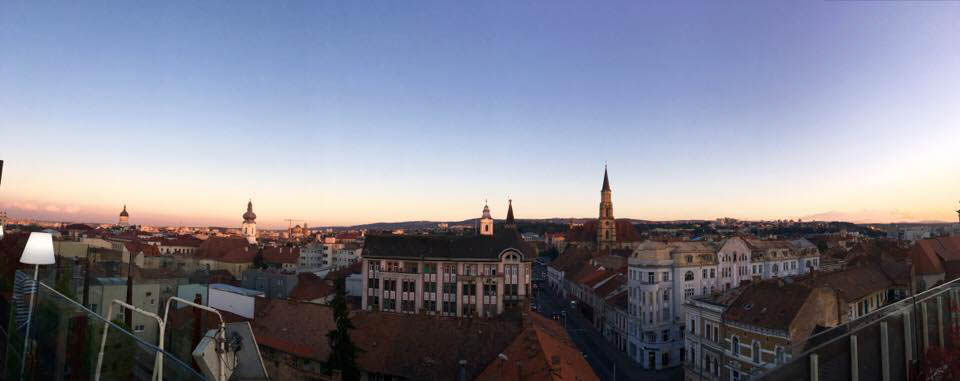
Cluj-Napoca, or just simply Cluj, is the second city after the capital, Bucharest, with regards to population and the unofficial capital of the region commonly known as Transylvania. It is home to the country’s largest university, Babe?-Bolyai, which makes the influx of students quite big. Coupled with the fact that a lot of companies are opening up offices here, especially IT, results in a very lively city with a big party scene. With an international airport, Cluj makes it easy to get to and travel around Transylvania, but it is a destination in and of itself as well, catering to everyone, from architecture lovers to food enthusiasts.
Top 5 landmarks of Cluj-Napoca
1. Old Town Centre and its pedestrian areas. The cobbled streets of the old town centre are as if taken from another time, surrounded by old buildings. These streets come to life during evenings, especially when the weather allows for outside sitting, as there are numerous cafés, restaurants, bars and pubs. During the day, multiple craftsmen set up stalls in the market region for exhibition and sale of their arts and often small concerts are held here.
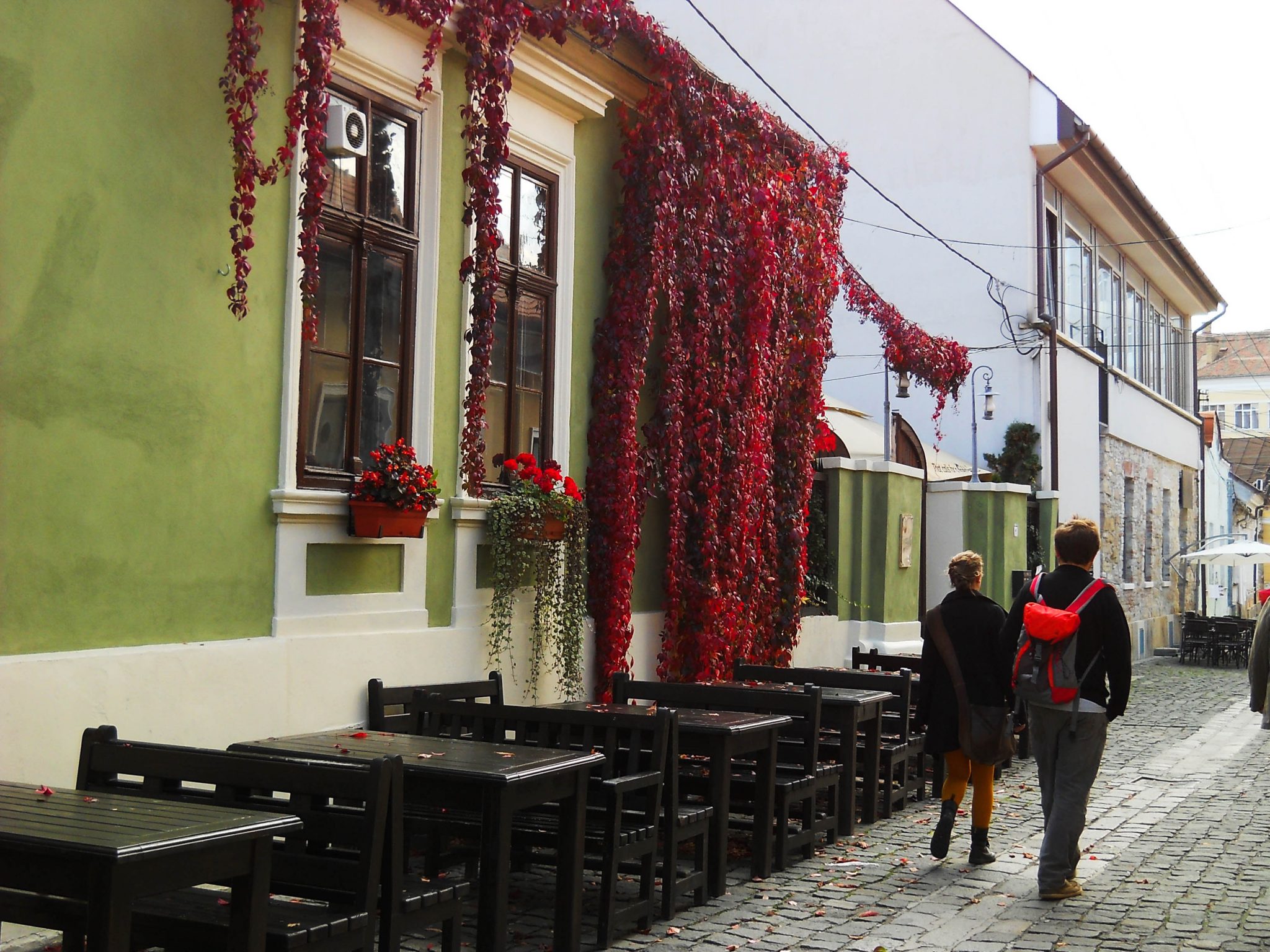
2. St. Michael’s Church & Unirii Square St. Michael’s Church is a Roman Catholic church built in a gothic style, completed at the middle of the 15th century and named after the Archangel Michael, the patron saint of the city. With its tower reaching 80 meters in height, it is the tallest church in Transylvania. The square around the church from where the city spreads out, called Unirii (Union) is used for hosting medium-sized concerts and during winter it becomes an ice skating rink and the main setting of the Christmas market.
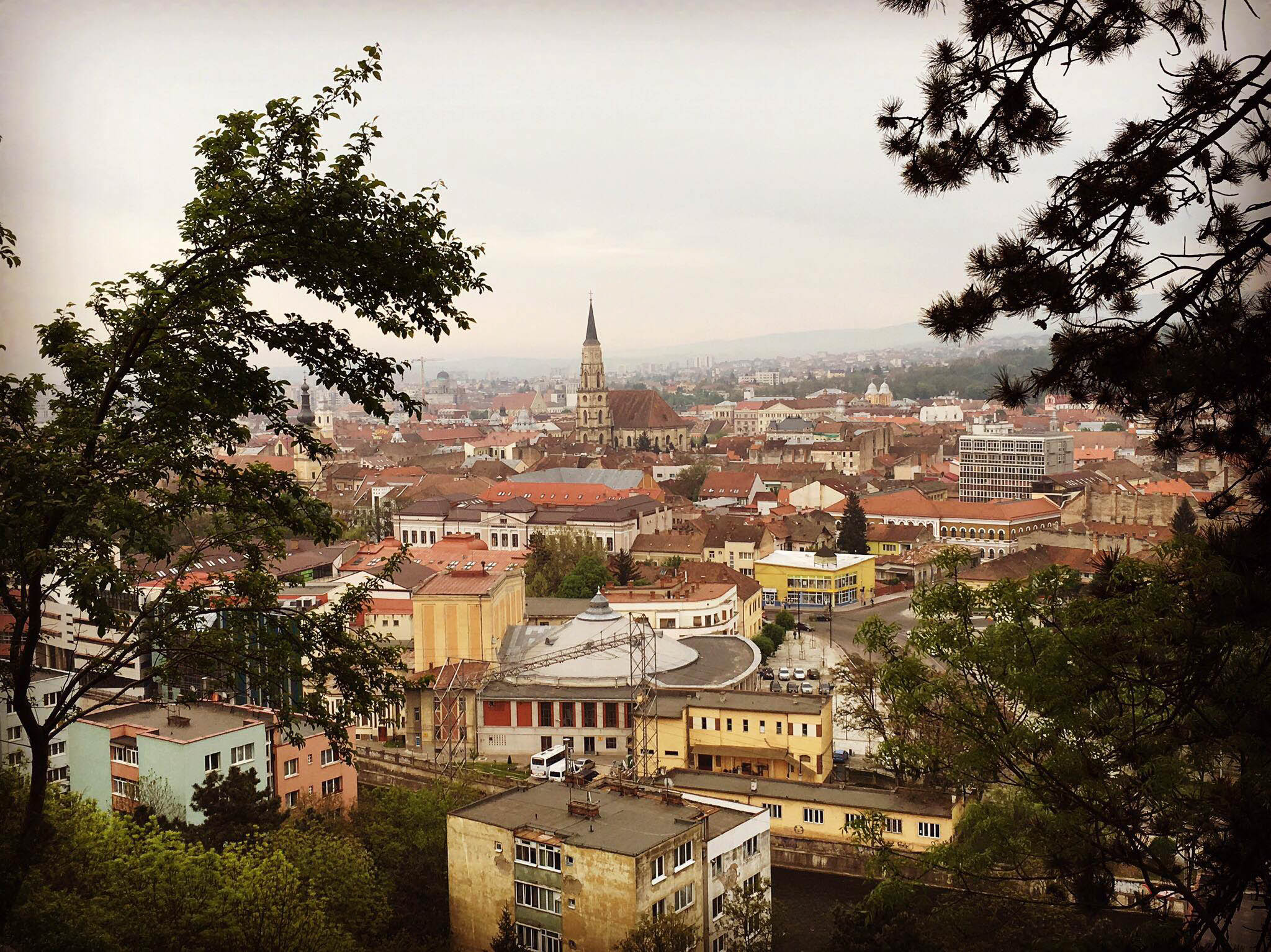
3. Central Park The park is great a stroll, be it during the day or during the night. At its western end you can find the Casino, a Viennese-inspired building, where various cultural events and concerts are organized. The lake near the Casino allows for renting out rowing boats or ice skating during winter and there is even a restaurant with a terrace overlooking the lake. All in all, the park is a great place to relax and unwind.
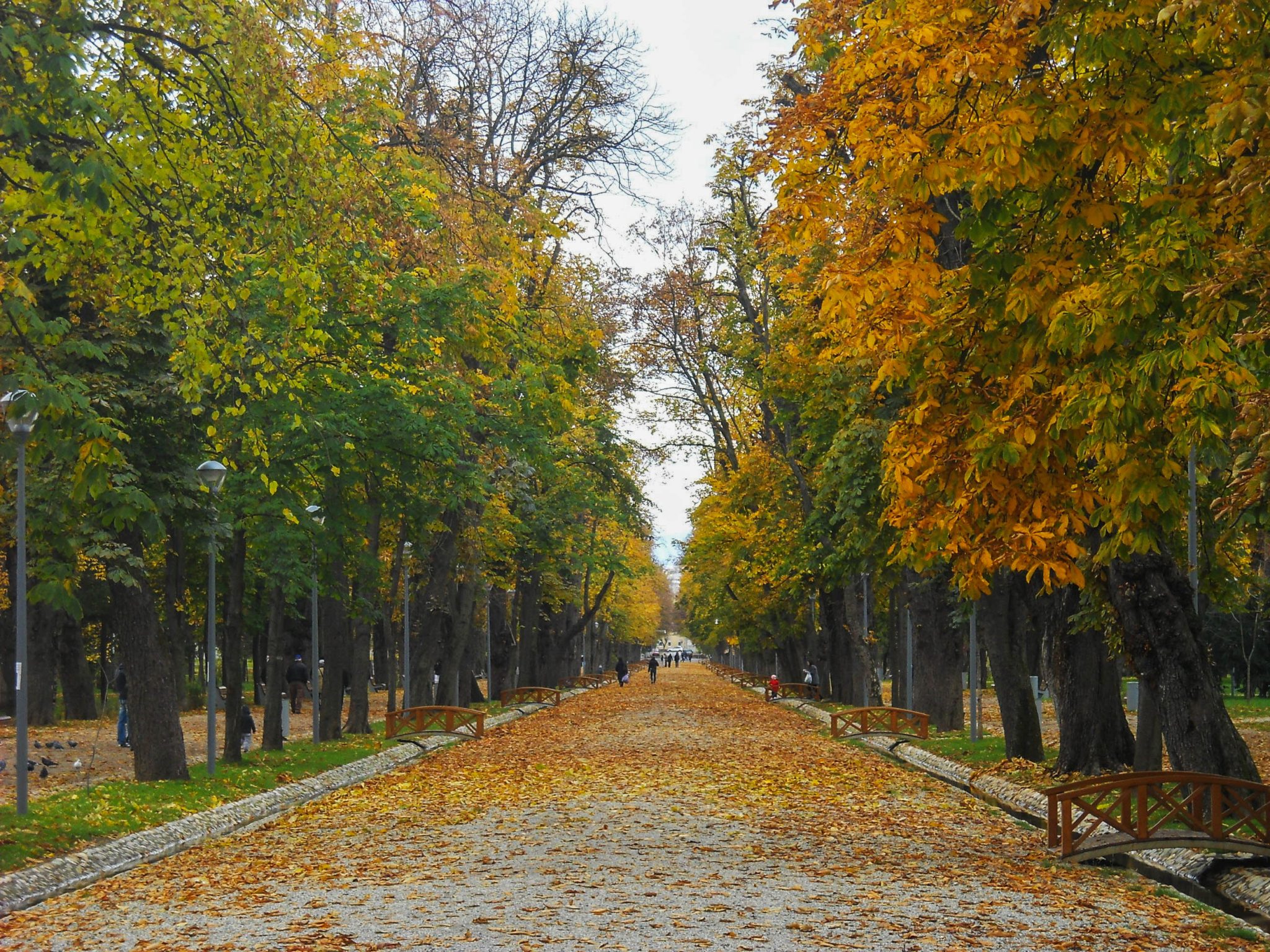
4. Botanical Garden In addition to its role as a leisure place, the garden serves as a teaching and research center for the university. It has 14 hectares and over 10.000 plants from across the world, divided into multiple sections. A main attraction is the Japanese Garden, designed with an Asian theme and a Japanese style house. Another special attraction is the Roman Garden, which also houses archeological remains from the Roman colony that used to inhabit the region.
5. Cetatuia Hill If panorama opportunities are what you’re after, look no further than the Cetatuia Hill. After a short, but rather steep climb, the whole city unwinds before you. A perfect spot for pictures or just for a stroll, it is recommended to get here both during the day and during the evening.
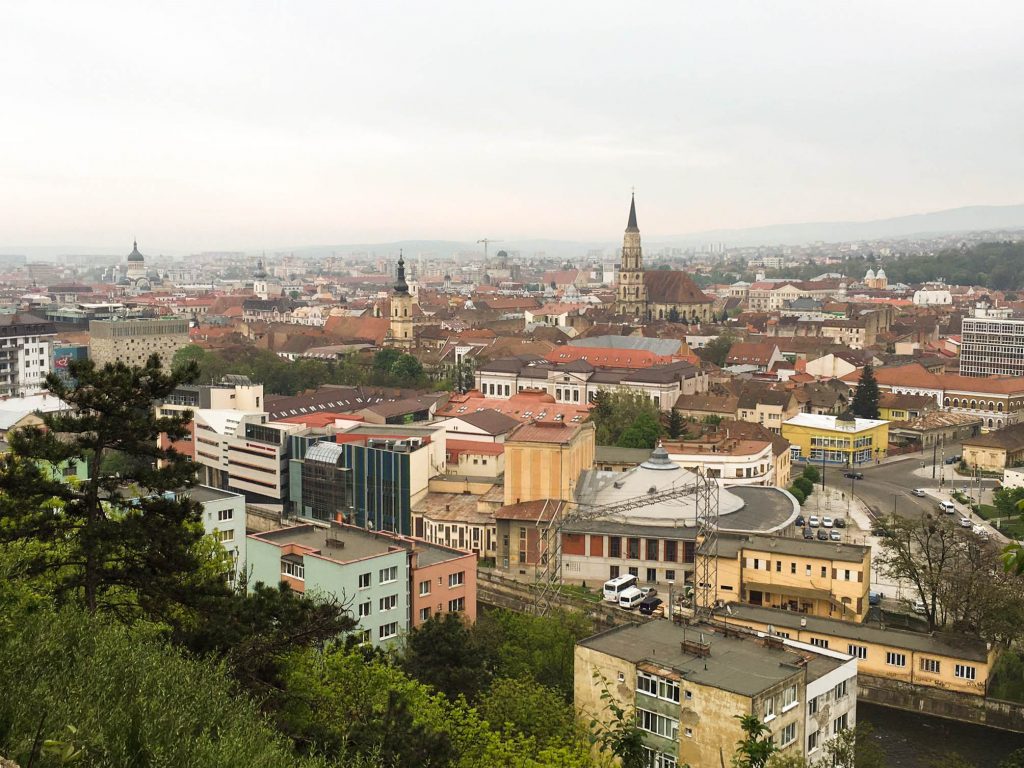
Cluj Off the Beaten Path
Cluj is crossed by the Somes river, so a walk along the car-free river side can be very pleasant and different from exploring the crowded inner city; there’s even a small beach where you can stop for a picnic/drink and just enjoy the sound of the stream.
Escape the city rush and get a glimpse of the Romanian village in the Ethnographic Park „Romulus Vuia”.
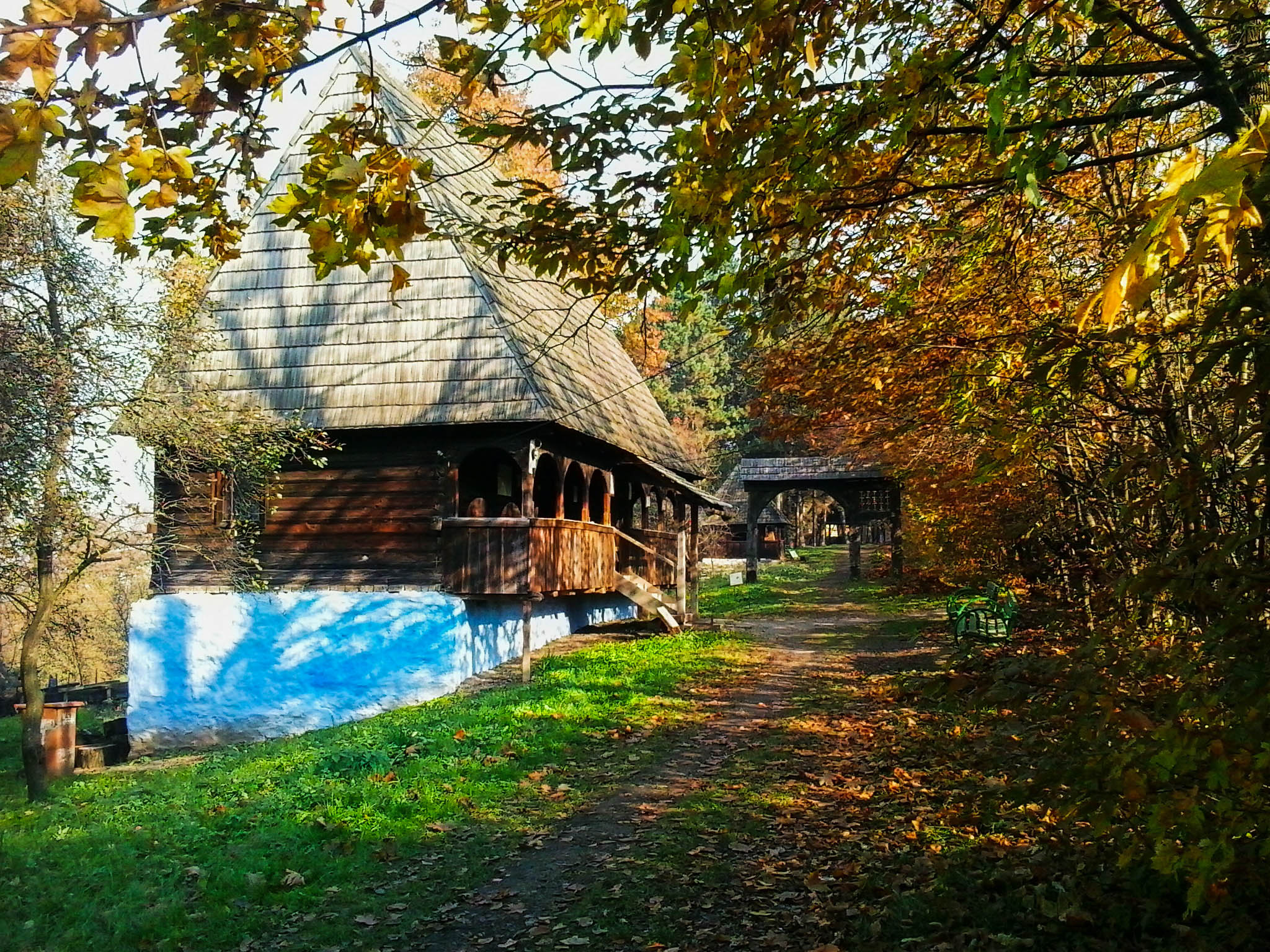
Just 10 minutes’ walk away you can trek through Hoia forest , allegedly a haunted forest due to repeated reports of paranormal phenomena. It shouldn’t be anything different than a usual walk through any other forest, but for some extra chills & thrills you can book a night tour of the forest with these guys: //hoiabaciu.wixsite.com/project .
Andrei Muresanu neighbourhood located in the south of the city center, is a very charming part of town with beautiful houses and courtyards; it’s very likely you’ll be coming across more cats than people. If you visit it in autumn, you will be charmed by the grapes’ smell coming from all the vines.
The Paintbrush Factory is an actual factory building turned into a cultural space where local artists base their galleries and activities. The galleries are opened daily and theatre and dance shows happen every weekend.
Where to Eat in Cluj-Napoca
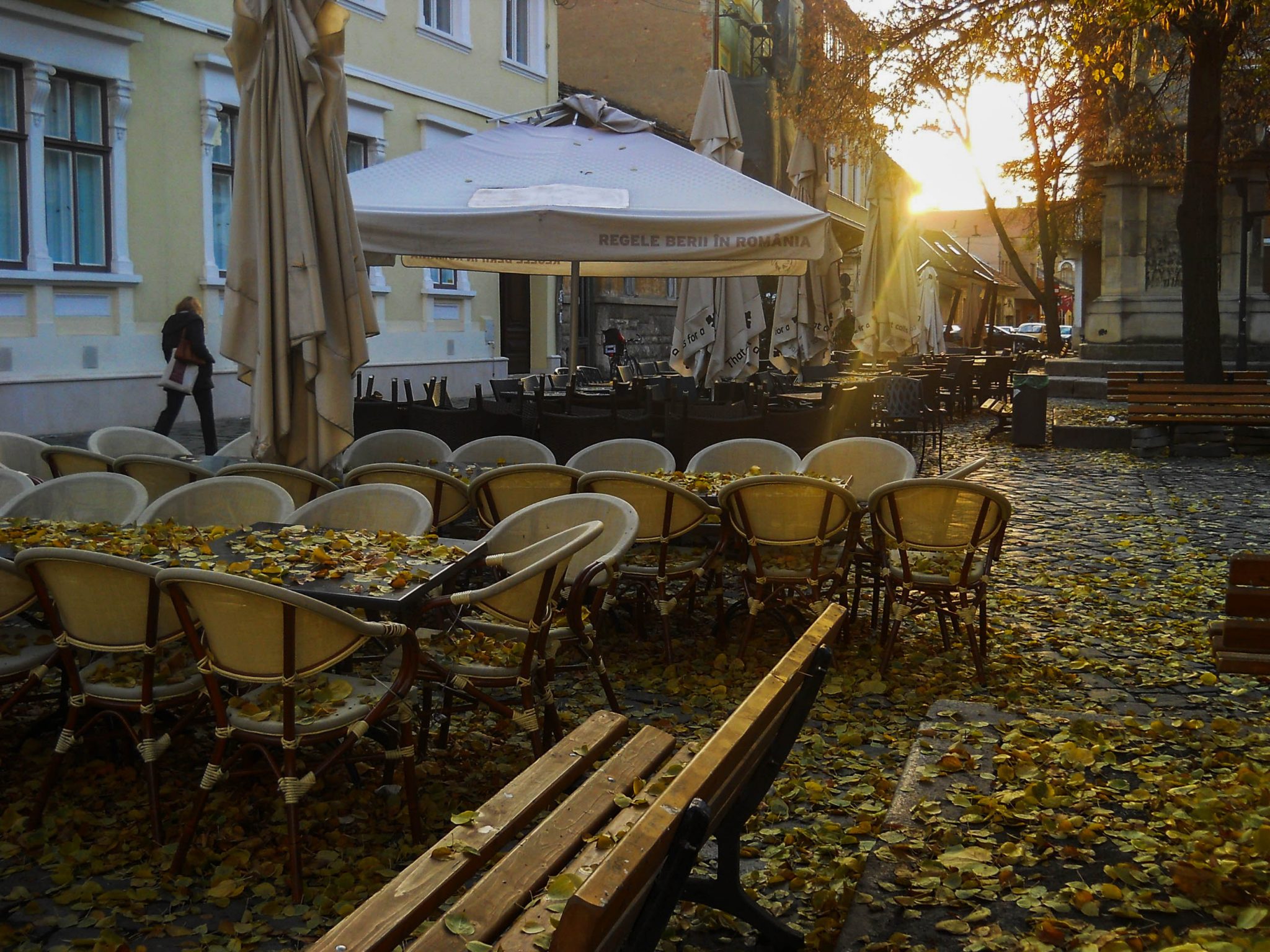
Cluj’s offering is just as rich as any other cosmopolitan European city, from posh restaurants, bistros and pubs to fast-food chains addressing the rumbling bellies of hundreds of students.
For some local Transylvanian cuisine, you cannot miss Roata Restaurant and Zama Bistro, where soups and mouthwatering Romanian dishes are at their best.
If you’re into lighter stuff, try Mint Bistro for savoury pies or the vegetarian/vegan restaurant Samsara Foodhouse.
When the sweet tooth kicks in, you can stop for deserts at Cafe Francesca located in Museum’s Square where they have the loveliest of homemade cakes and cookies and it’s the only place in town where you’ll be sharing a table with a giant teddy bear, you’ll see what I’m talking about. If the Cetatuia Hill was not enough, Klausenburger is a restaurant with a great view of the city, being at the top level of a shopping mall, and they also have their own brewery, if you want to taste some local beers.
Tips for Cluj

Cluj guided tours are free tours in English everyday starting at 6PM – meeting point is in Unirii Square.
The summer months are marked by some of the major festivals in Romania and Eastern Europe. If you’re interested in doing cultural/music tourism be sure to check : – TIFF – Transylvania International Film Festival in June – Electric Castle Festival in July – Untold Festival in August
Getting around the city is relatively easy, public transport being quite well developed and cheap.
If you’re planning on day trips from Cluj, check out Turda Salt Mine , one of the coolest underground places in the world as ranked by Business Insider, or the Turda Gorge, a canyon and natural reserve approximately 15 km south-east from Turda.
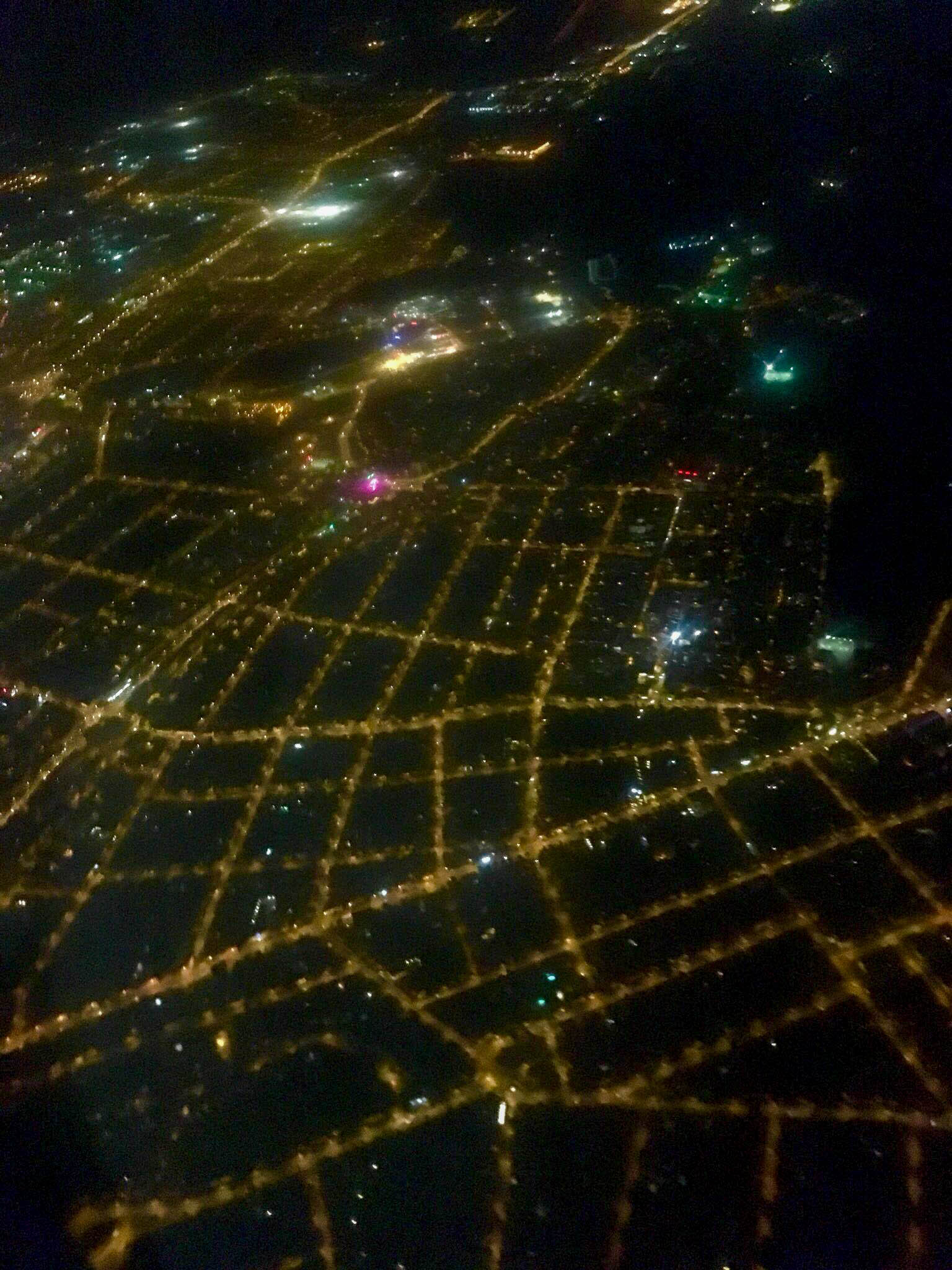
About the authors
Oana and Cristian are a Romanian couple currently living in London. They started their travel blog, Around the Compass, in May 2016. The idea behind it was coined while they were on a bus in Iceland. While still working full-time, they take advantage of every holiday to visit new places and experience new cultures. Follow them on Facebook and instagram.
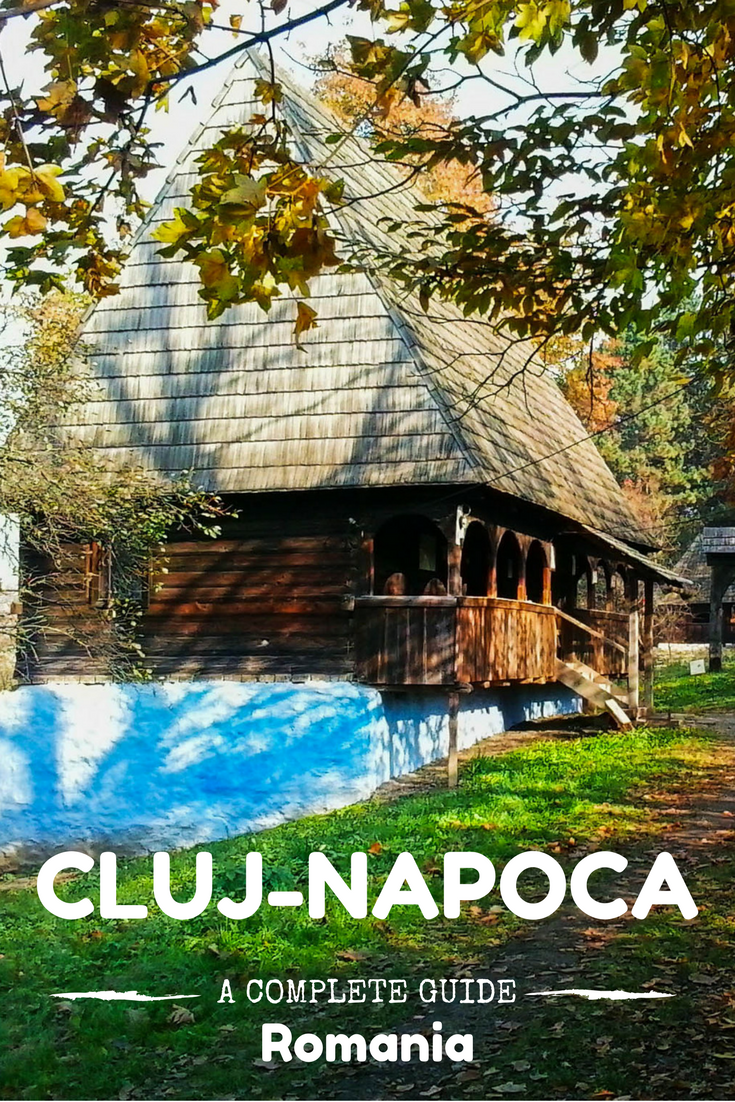
More amazing articles for you:
Related posts.
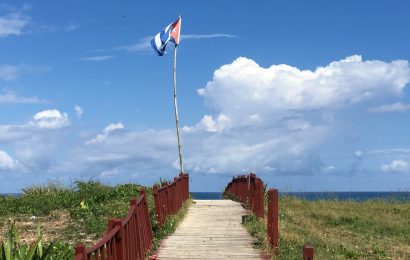
Ultimate Havana Travel Guide: What to do in Havana Cuba, food, hotels, and tips
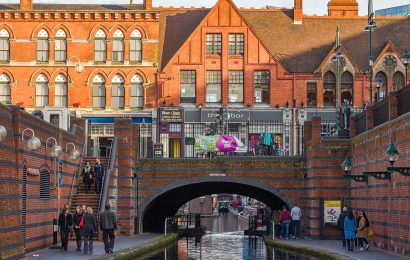
A local’s travel guide to Birmingham, UK
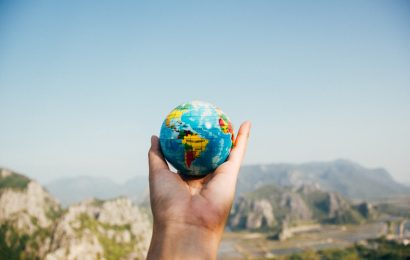
Make the World Your Treasure Map!
2 thoughts on “ a complete travel guide to cluj-napoca, romania ”.
Thanks for this lovely, useful post! Cluj is on my bucket list for as long as I can remember, but, somehow, I’ve never managed to get there.
This blog is fantastic. I really enjoyed the pictures and the suggestions of place to visit and dine while in the Cluj/Napoca area. I am now convinced that I must come visit Romania. What a beautiful country. Thank you!
Leave a Reply Cancel reply
Your email address will not be published. Required fields are marked *
Save my name, email, and website in this browser for the next time I comment.
Currently you have JavaScript disabled. In order to post comments, please make sure JavaScript and Cookies are enabled, and reload the page. Click here for instructions on how to enable JavaScript in your browser.

IMAGES
VIDEO
COMMENTS
1. St Michael's Church. Cluj-Napoca's heavyweight sight is this stunning 15th-century Gothic church on Unirii Square. With three equal naves, and measuring 70 metres long and 80 metres high, few churches in Romania can match St Michael's for power as well as sheer depth of history.
9. Check Romanian aesthetics at the Ethnographic Museum of Transylvania. 10. Visit the National Museum of Transylvanian History. 11. Admire the art at the Cluj National Art Museum. 12. Discover the oldest building in Cluj: Matthias Corvinus House. 13.
1. Admire the view of the entire town from Cetatuia Hill. Cetatuia is included in most top lists of things to see in Cluj for a good reason. It offers one of the most spectacular and romantic views; and it can also turn into an exciting adventure. Cetatuia Hill is, as its name claims, a 405m tall hill.
Violent crime is rare in Cluj-Napoca. Tourist areas like the historic Lipscani district and Old Town are heavily frequented and considered safe. Cluj-Napoca's city center and attractions are well-lit and have a visible police presence. Basic precautions like being aware of your surroundings, not leaving belongings unattended and avoiding poorly ...
10. Iulius Mall Cluj. 119. Shopping Malls. IULIUS MALL CLUJ is the third shopping mall in the IULIUS national network, being permanently attuned to international trends by means of its portfolio of brands and the leisure options. The mall …. 11. Cetățuia Hill (Dealul Cetățuia) 201.
Cluj-Napoca. An encyclopedic collection of bottled, jarred and taxidermied specimens from butterflies to waterfowl. Discover the best attractions in Cluj-Napoca including Fabrica de Pensule, St Michael's Church, and Parcul Etnografic Romulus Vuia.
The best outdoor activities in Cluj-Napoca according to Tripadvisor travellers are: Cheile Turzii; Central Park Simion Bărnuțiu; Grădina Botanică "Alexandru Borza" Cetățuia Hill (Dealul Cetățuia) TransyBike - Day Tours; See all outdoor activities in Cluj-Napoca on Tripadvisor
The best outdoor activities in Cluj-Napoca according to Tripadvisor travelers are: Cheile Turzii; Central Park Simion Bărnuțiu; Grădina Botanică "Alexandru Borza" Cetățuia Hill (Dealul Cetățuia) TransyBike - Day Tours; See all outdoor activities in Cluj-Napoca on Tripadvisor
More Cluj-Napoca Activities; Further Reading for Romania; Show More . Cluj-Napoca Itinerary Map. Quick Summary: Things to do in Cluj Napoca. 1. Hang Out at Unirii Square ... Another tourist attraction you should visit as you explore the outer rim of Cluj's Old Town is Alexandru Borza Botanical Garden, a large long-standing botanical garden ...
Catch an Event at Cluj Arena. Visit the Flower Market on Strada Potaissa. Indulge at One of the City's Best Place to Eat or Drink. Get Lost in Hoia Forest. Take a Free Walking Tour of Cluj. Visit the Exhibits at Tailors' Bastion. Sample Varza a la Cluj. Things to Do in Cluj Napoca: Museums & Entertainment.
We've made a list of the top attractions in Cluj-Napoca, Romania, for you! 1. Explore Hoia-Baciu, One Of The Most Haunted Forests In The World. ... Both are among the greatest Cluj tourist attractions and come highly recommended. The indoor exhibition is located in Palais de la Redoute. Visitors will find a huge collection of items used ...
Welcome to the social heart of Cluj Napoca! Unirii Square (or Piata Unirii) is the largest square in the city, and one of my favorite spots! Set in the Old Town, the Union Square is home to many major attractions dear to my heart, including the famous St Michael's Church, an astonishing 15th-century piece of Gothic architecture set just opposite the Matthias Corvinus Monument.
10. Iulius Mall Cluj. 119. Shopping Malls. IULIUS MALL CLUJ is the third shopping mall in the IULIUS national network, being permanently attuned to international trends by means of its portfolio of brands and the leisure options. The mall …. 11. Cetățuia Hill (Dealul Cetățuia) 201.
If you agree with us, these are best attractions in Cluj Napoca when talking about shopping: 1. Iulius Mall Cluj Napoca. Shopping: over 60, amongst which ZARA, The Body Shop, Sephora, Massimo Dutti, Guess. Dining: over 30, amongst which Dashi Japanese, Cartofiserie, Salad Box, Chopsticks.
2. Visit the Botanical Garden. A visit to the Botanical Garden is one of the great things to do in Cluj-Napoca for a first-time visitor. One of the must-see attractions, the Botanical Garden was founded by Professor Alexandru Borza from the University of Cluj-Napoca back in 1925. It's today one of the most popular places in the city, with ...
Top Attractions in Cluj-Napoca. These rankings are informed by Tripadvisor data—we consider traveller reviews, ratings, number of page views, and user location. 1. Cheile Turzii. Cheile Turzii îs an amazing gorge to visit from Turda. 2. Grădina Botanică "Alexandru Borza".
Cluj-Napoca has become one of the top cities to visit in Romania since it evolved into a vibrant and artsy cultural centre of Transylvania. Many hear about it when the notorious music festivals started to attract international music lovers, and it transformed it into a destination for travellers looking for the comfortable but affordable city life in Romania. After visiting Cluj a few times, I ...
2 The best things to do in Cluj! 2.1 Take in the views from Parcul Cetátuia. 2.2 Admire the National Opera House. 2.3 People-watch in Piata Unirii Square. 2.4 Visit St. Michael's Church and the statue of Matthias Corvinus. 2.5 Check out the stunning Dormition of the Theotokos Cathedral.
This complete travel guide to Cluj includes famous landmarks, off the beaten path attractions and things to do, where to eat recommendations, and tips. Cluj - panorama. Cluj-Napoca, or just simply Cluj, is the second city after the capital, Bucharest, with regards to population and the unofficial capital of the region commonly known as ...
10. Iulius Mall Cluj. 119. Shopping Malls. IULIUS MALL CLUJ is the third shopping mall in the IULIUS national network, being permanently attuned to international trends by means of its portfolio of brands and the leisure options. The mall …. 11. Cetățuia Hill (Dealul Cetățuia) 201.
7. Arenas & Stadiums. By Tiberiu_Baranyi. Overall a very good experience if you are wondering about going or to a gig at the "Polivalenta" in Cluj - Napoca don't... 57. National Museum of Transylvanian History. 29. History Museums. By amybethca.